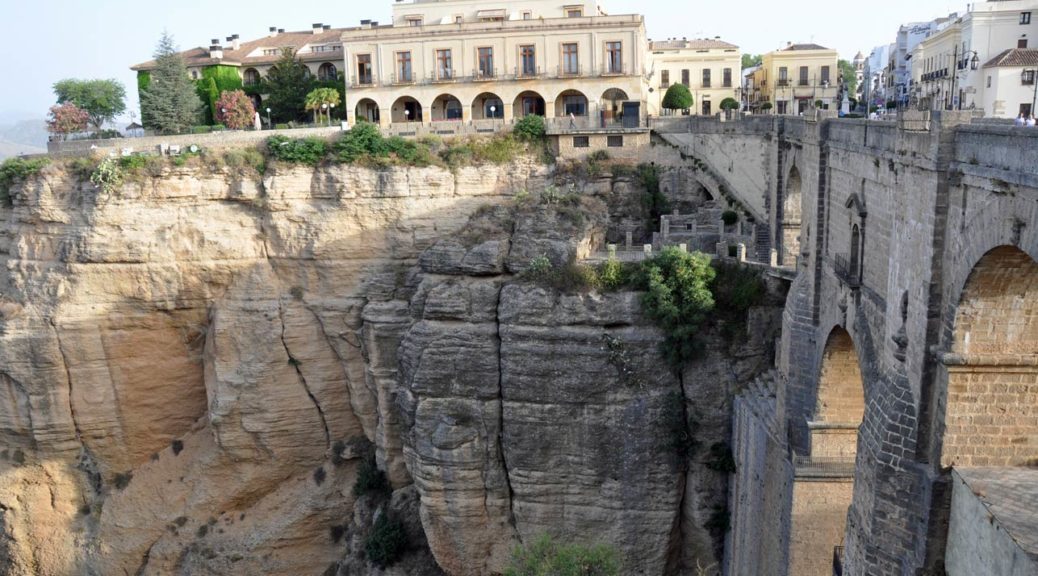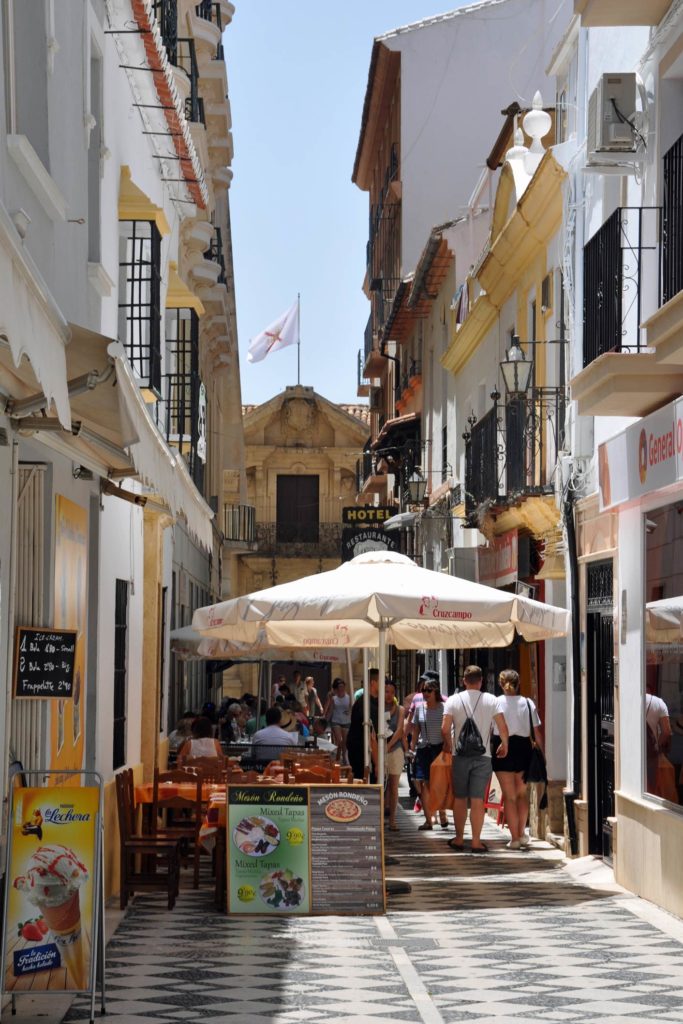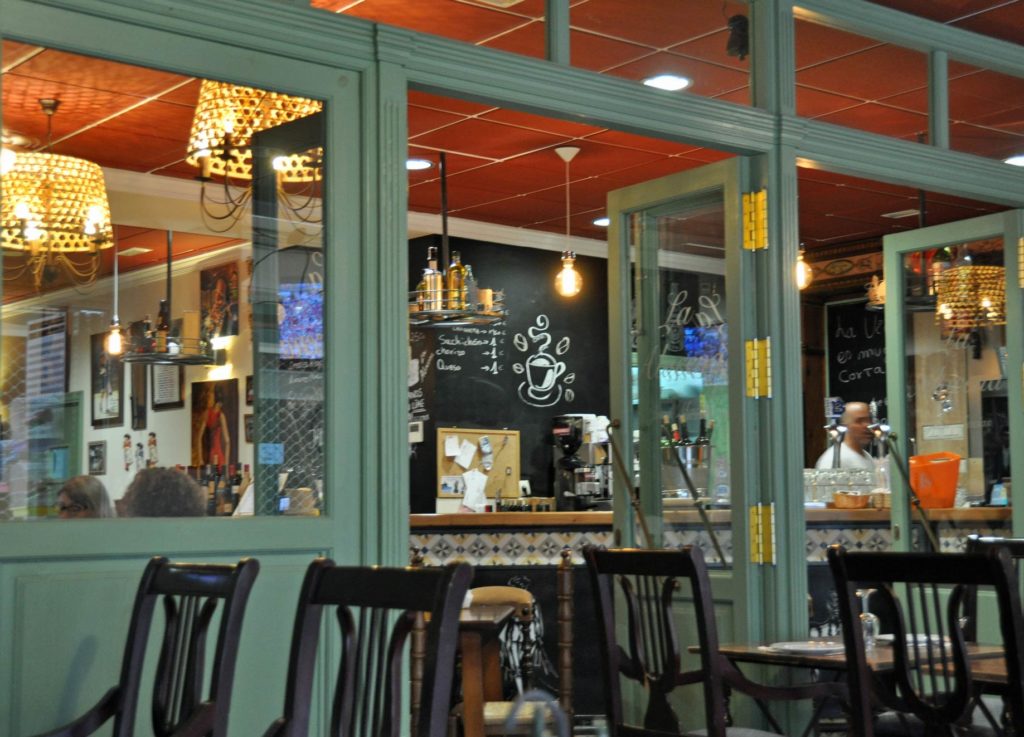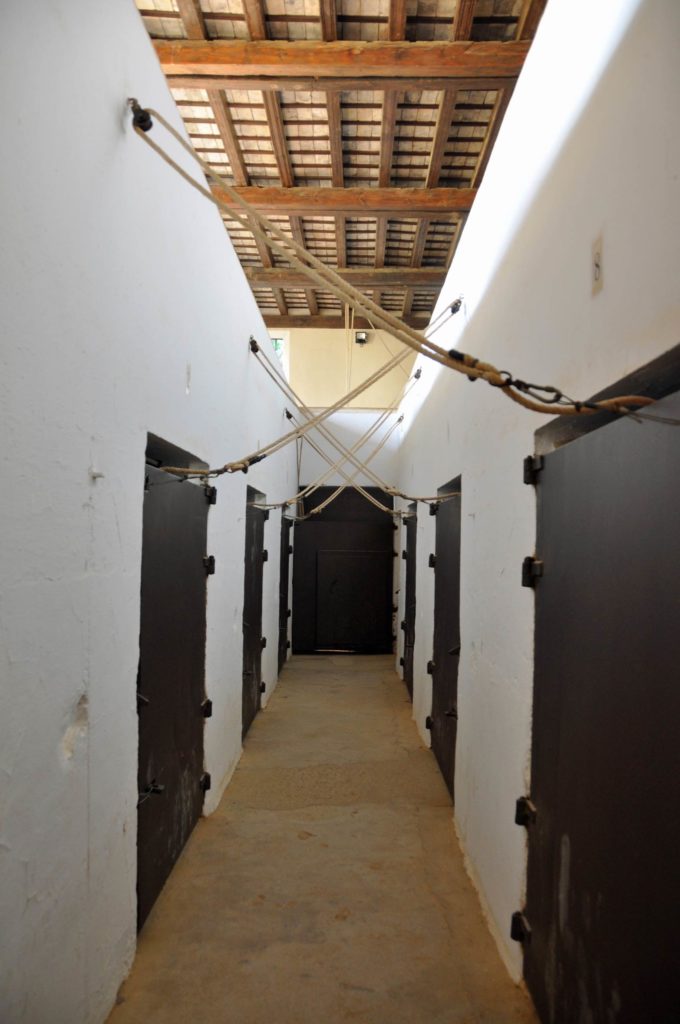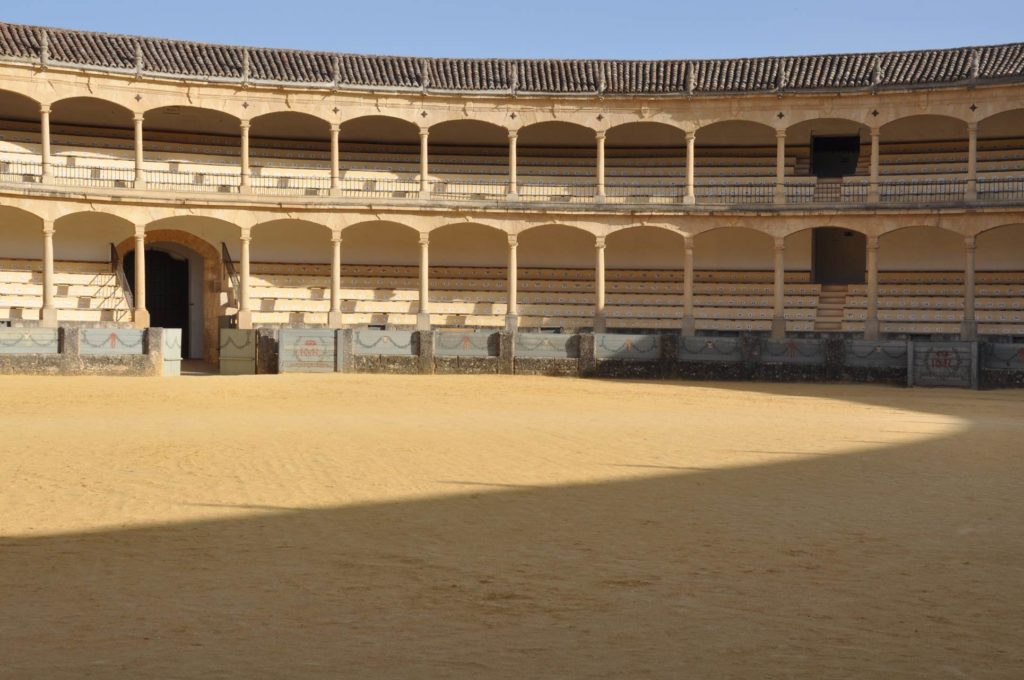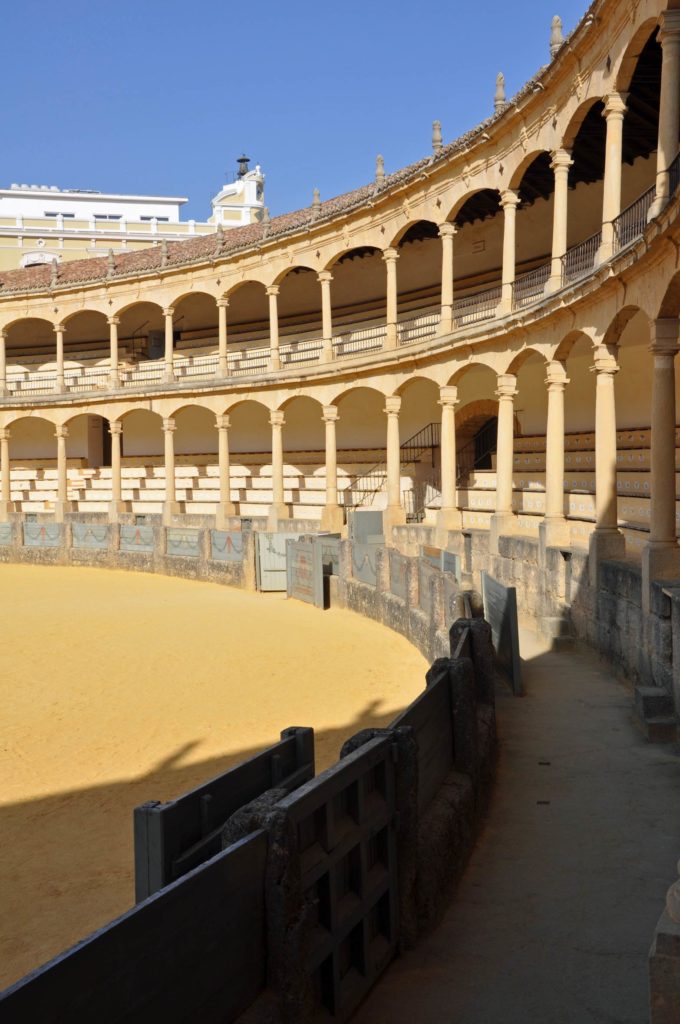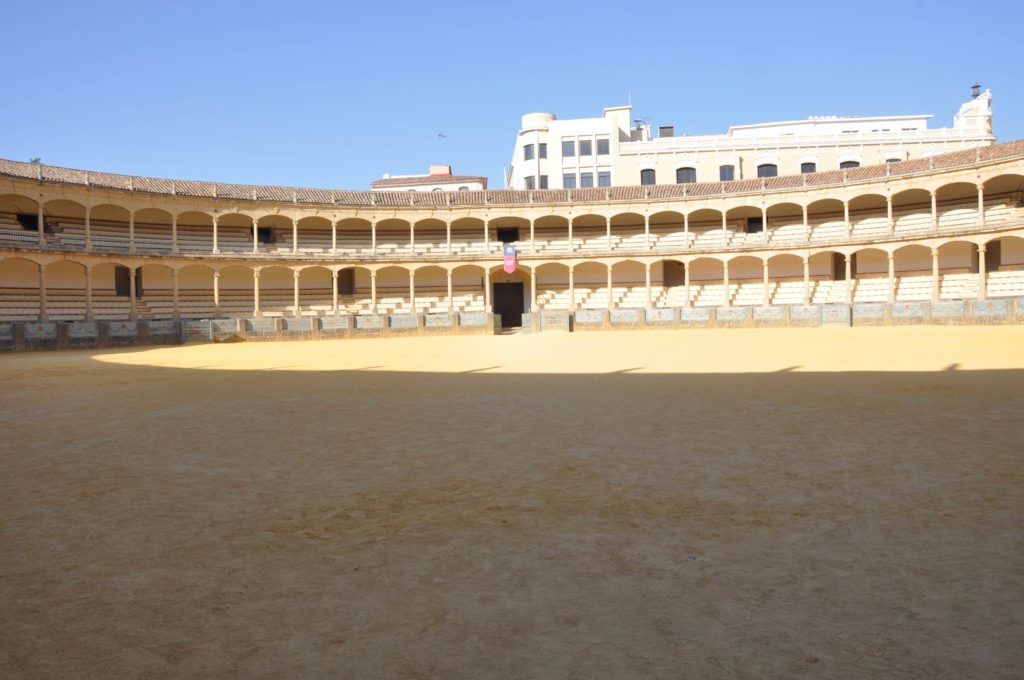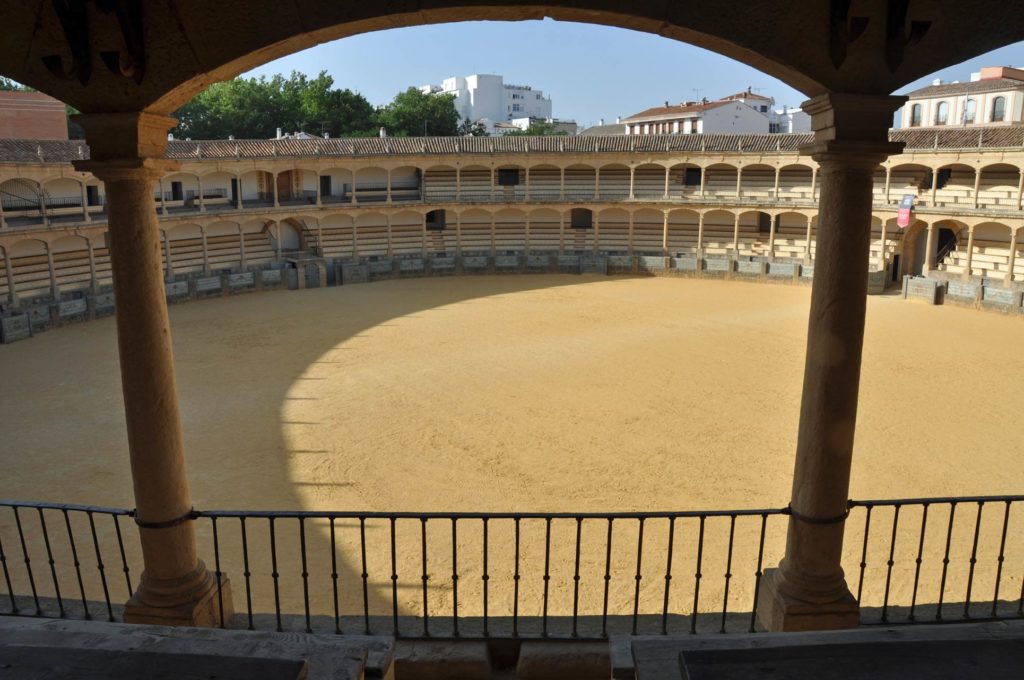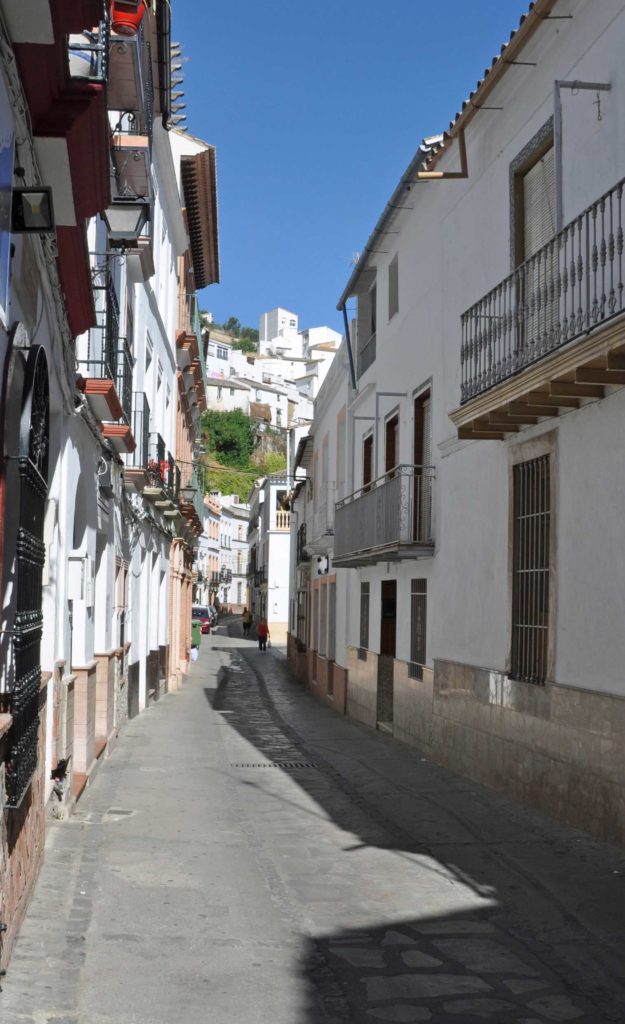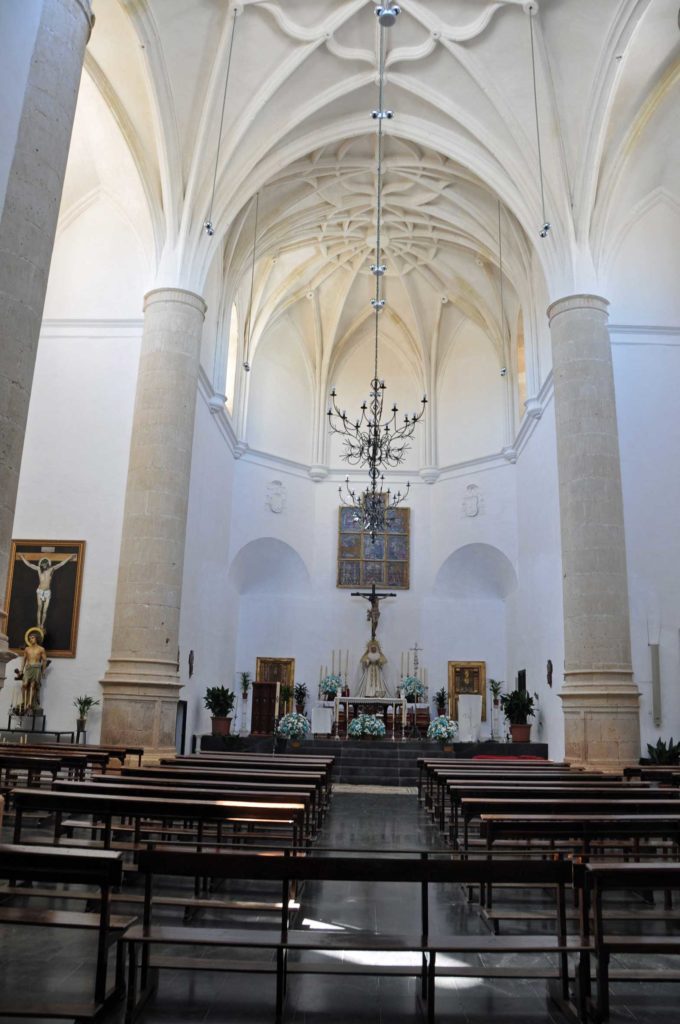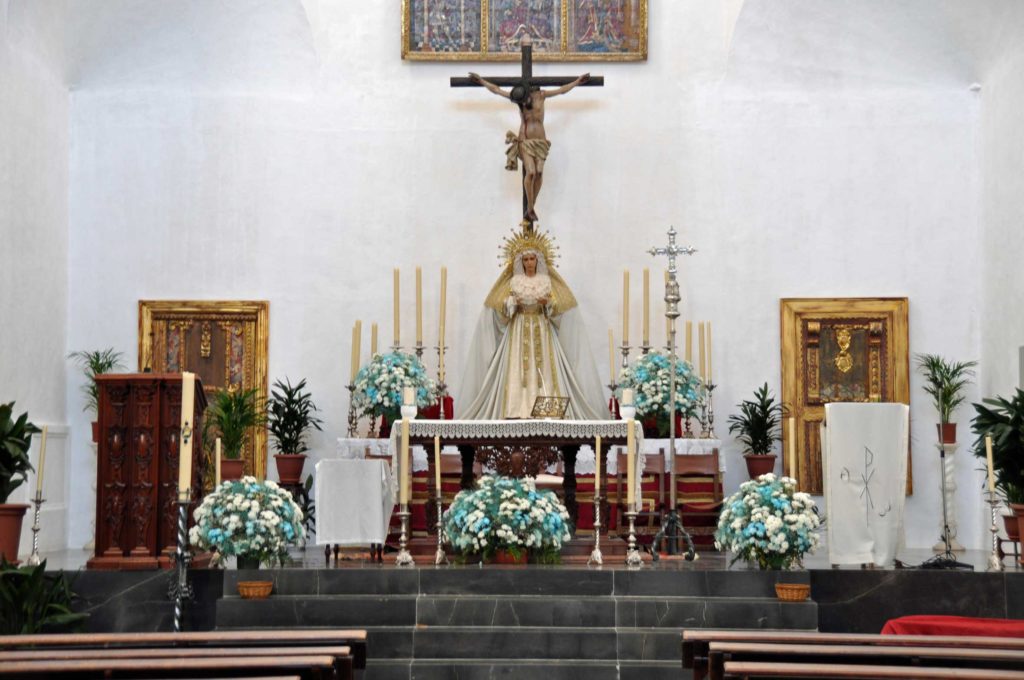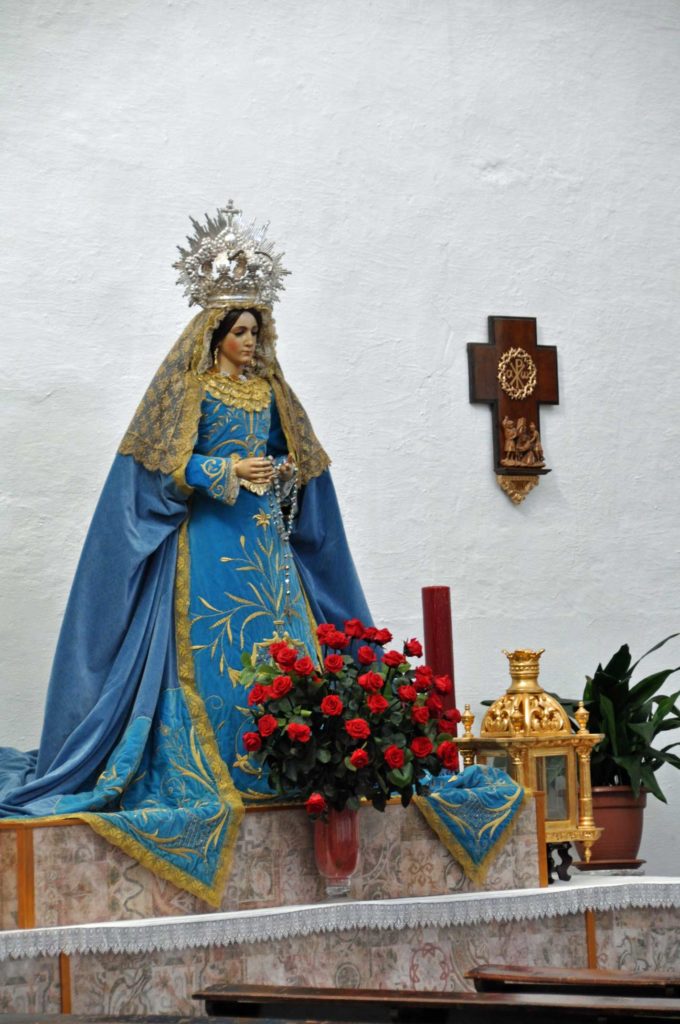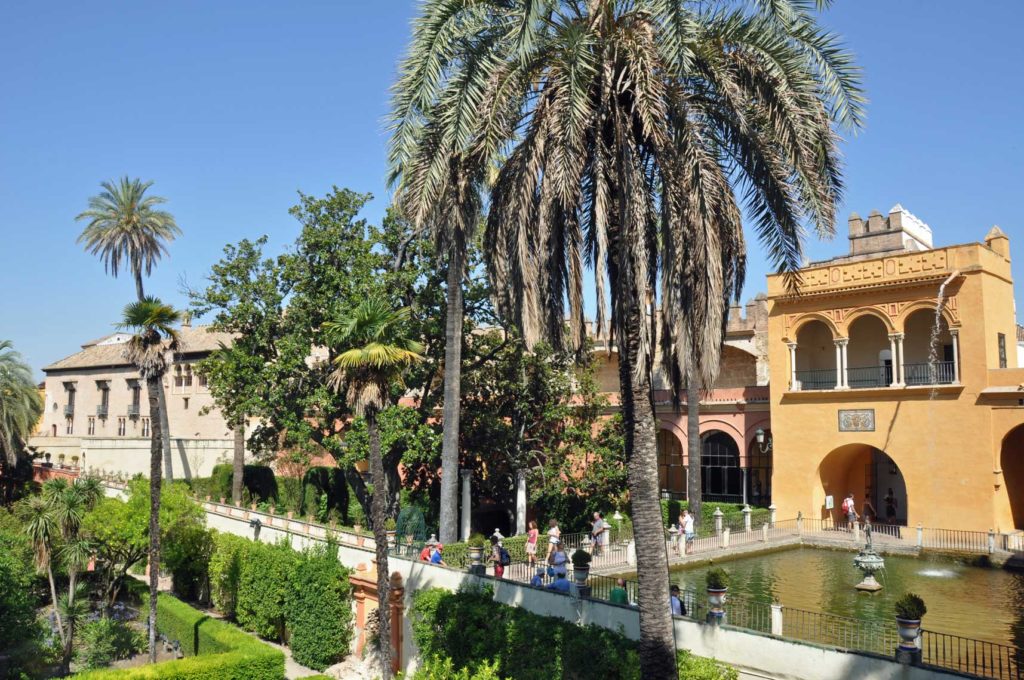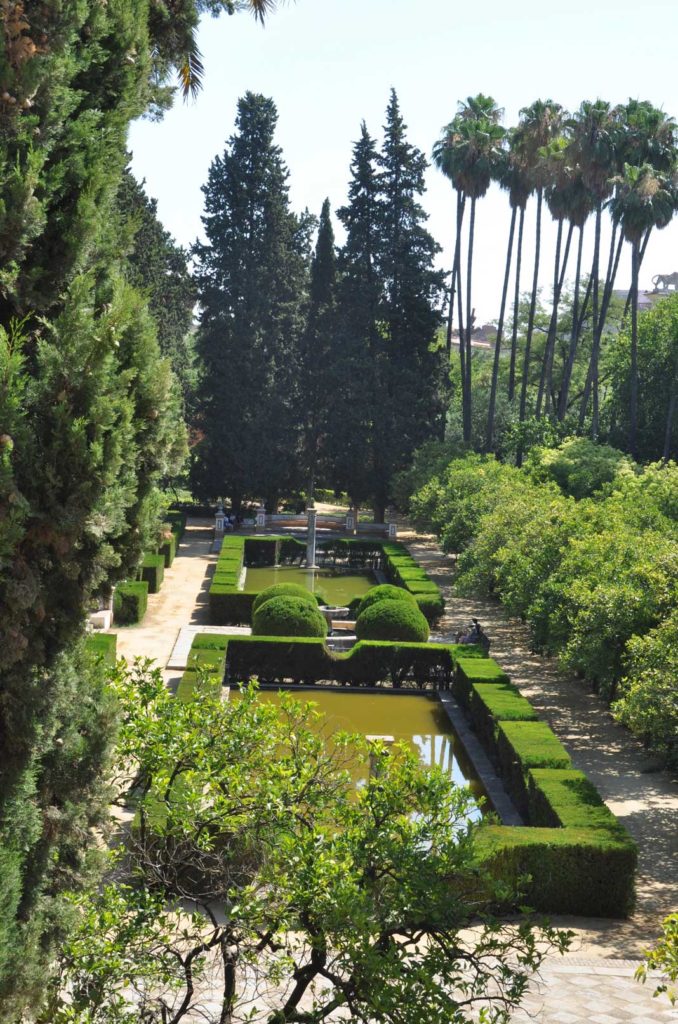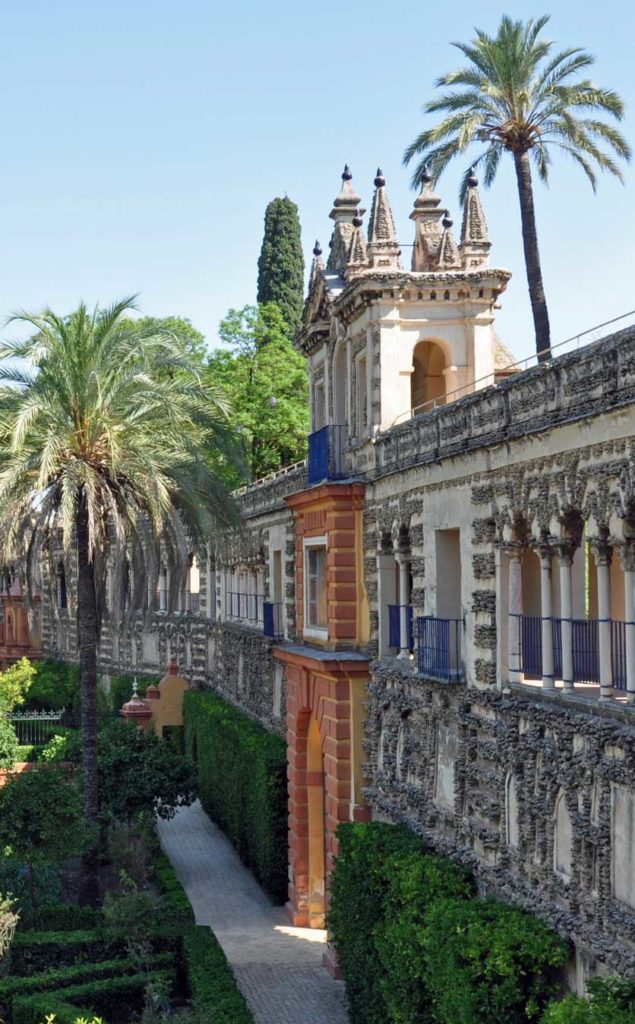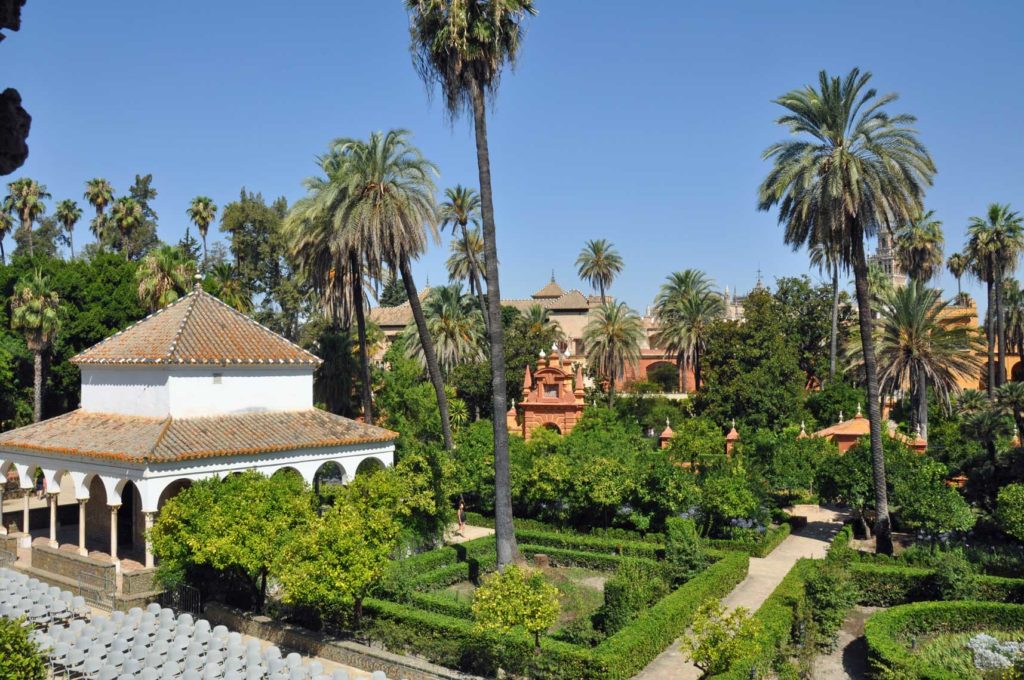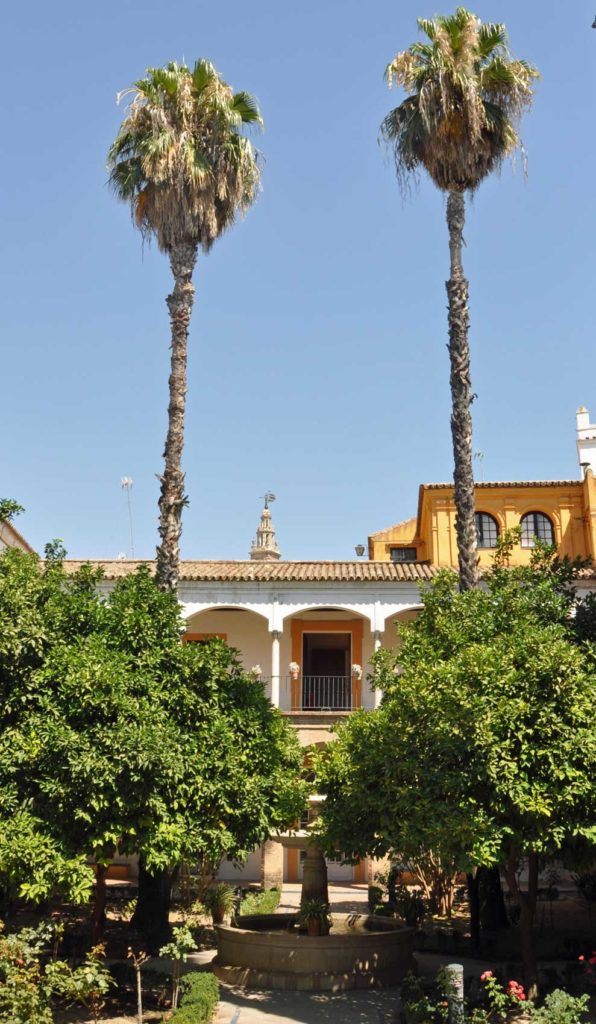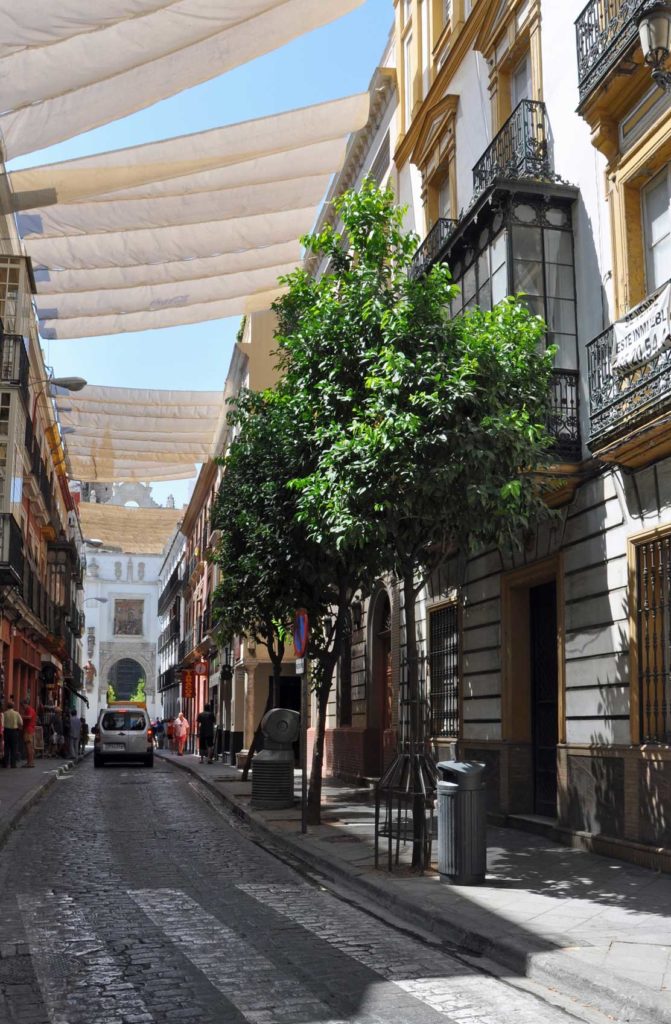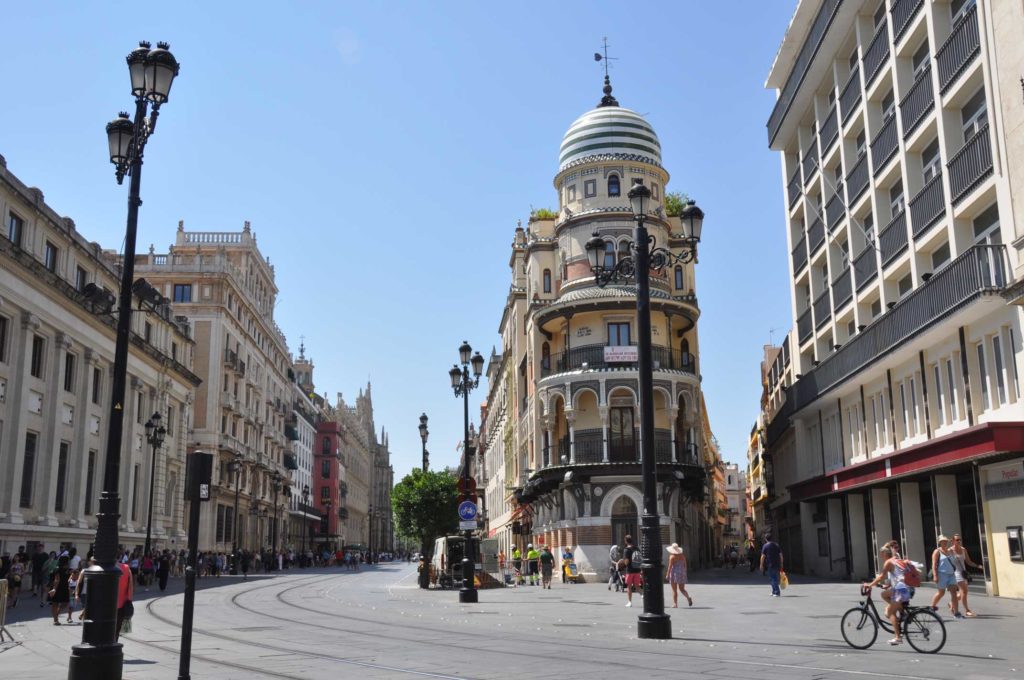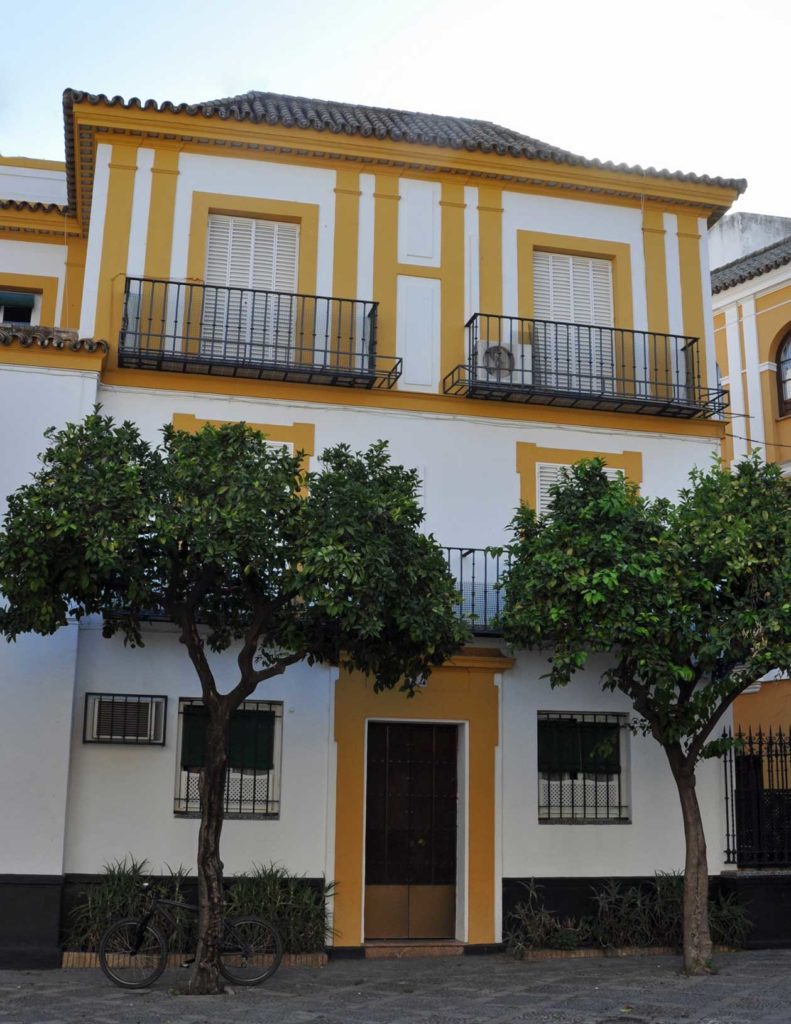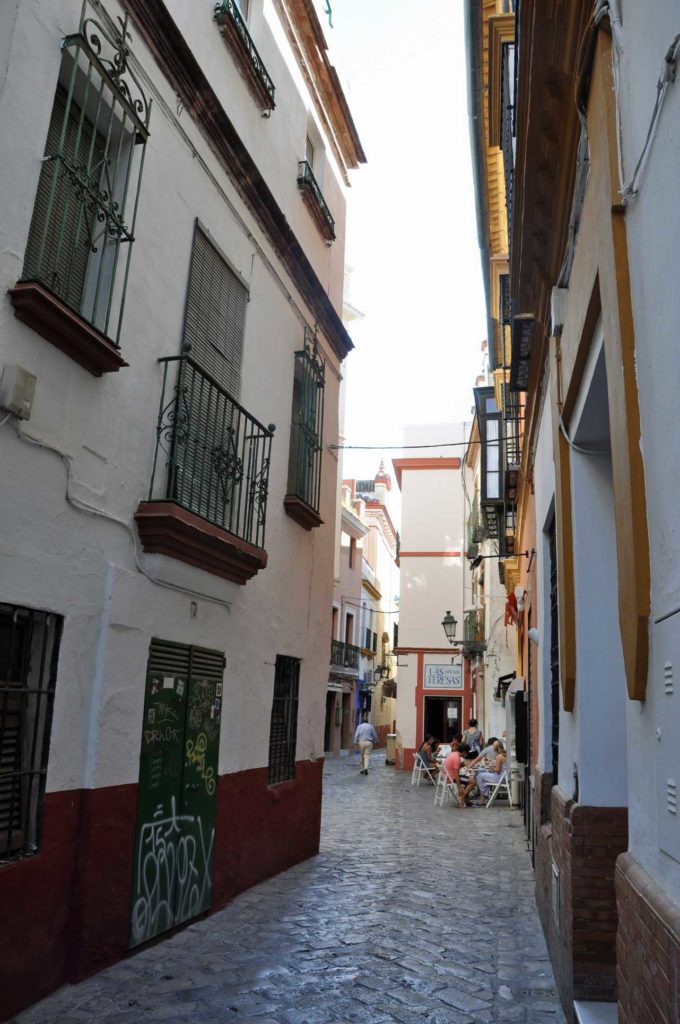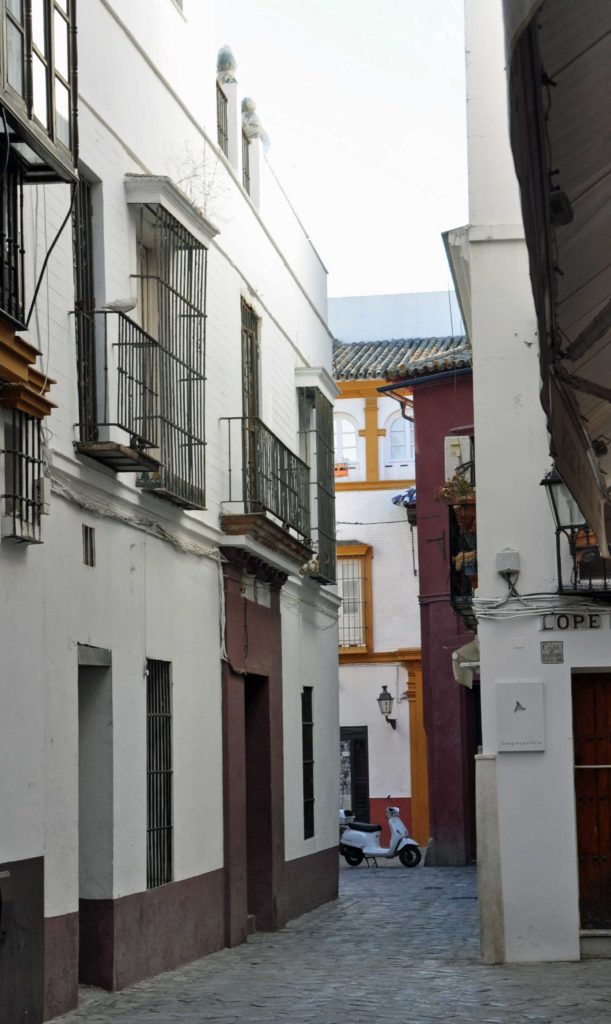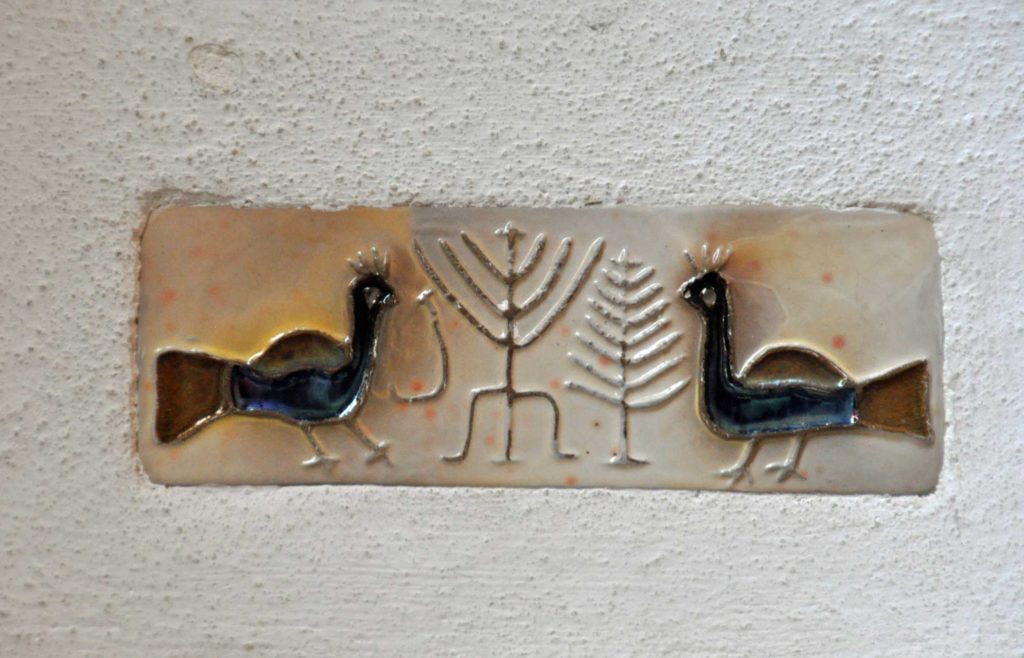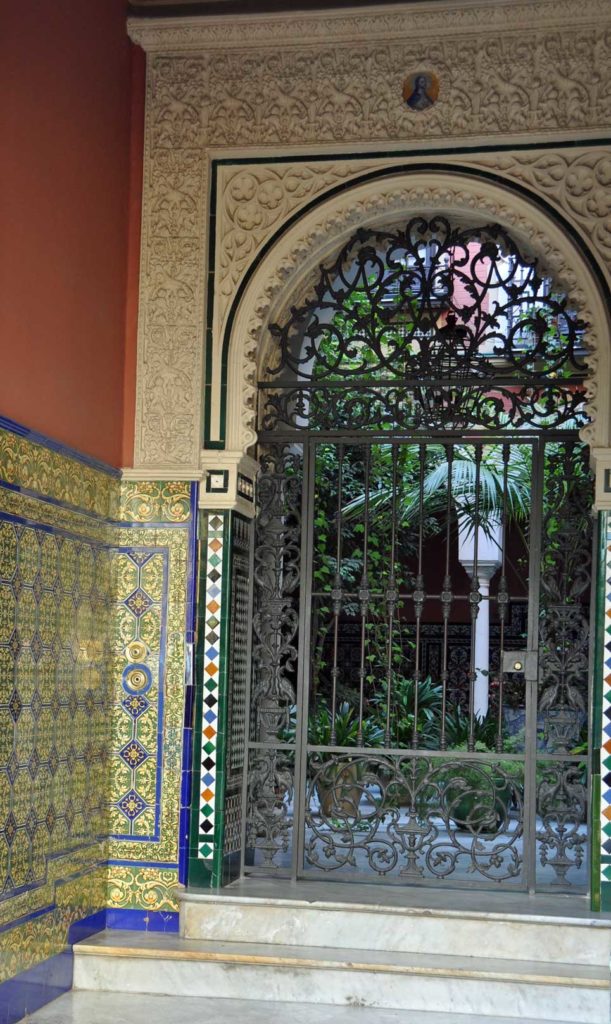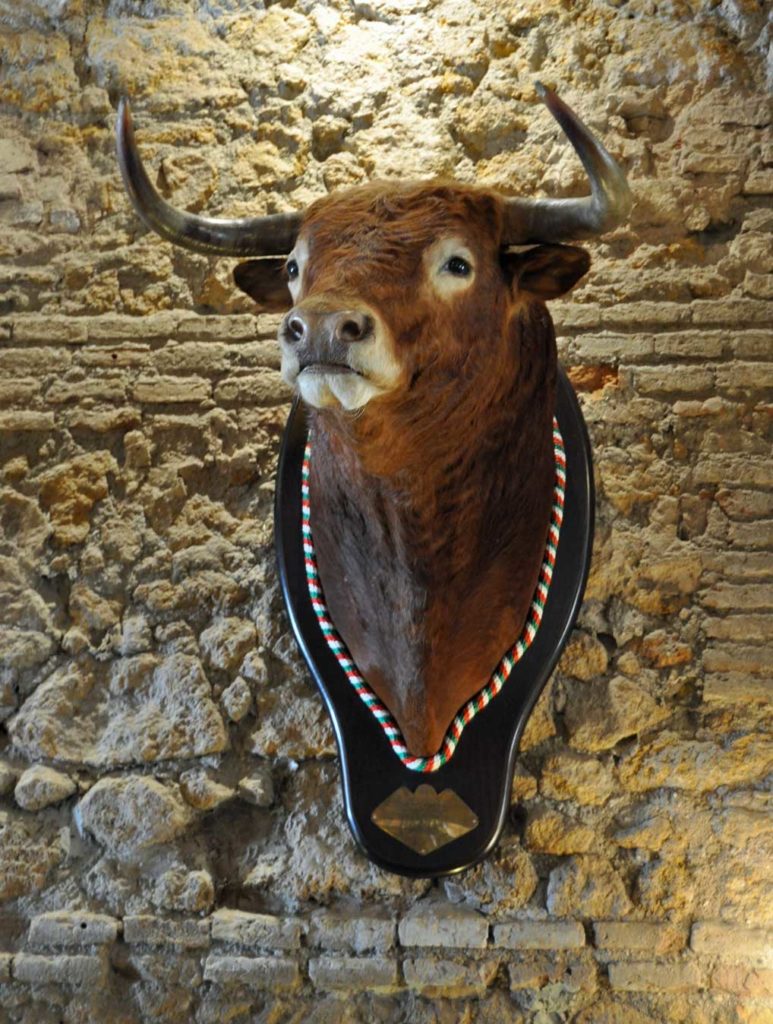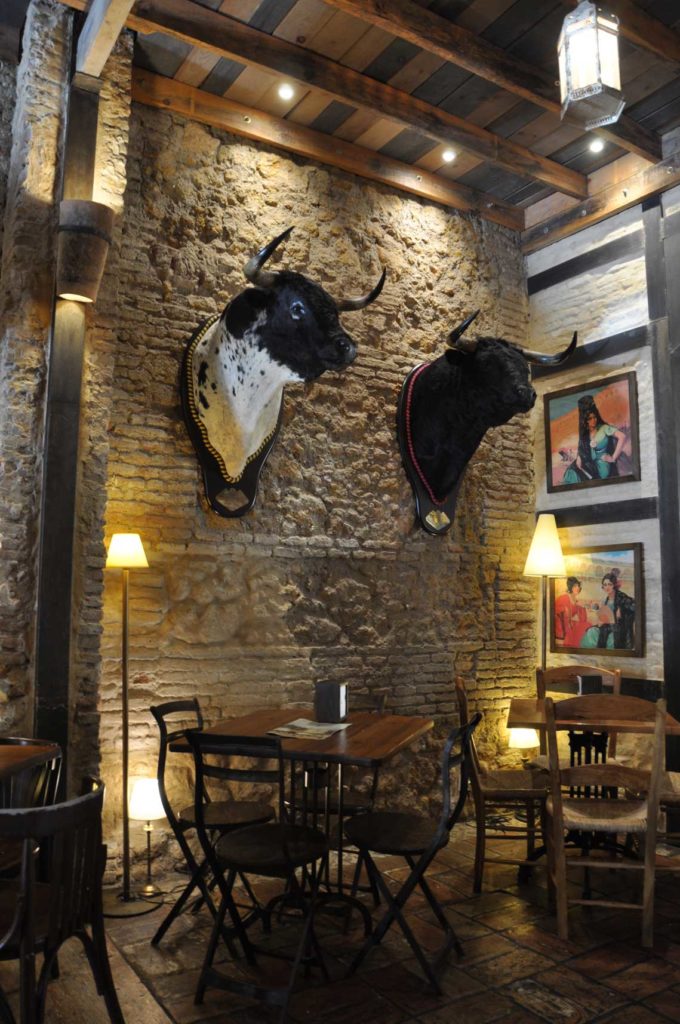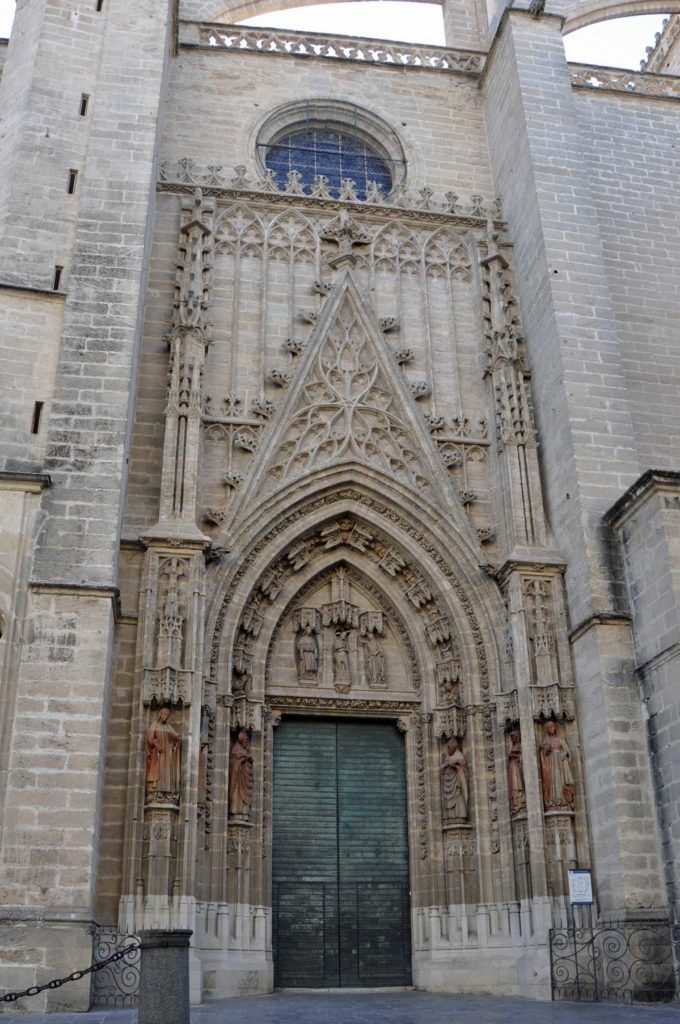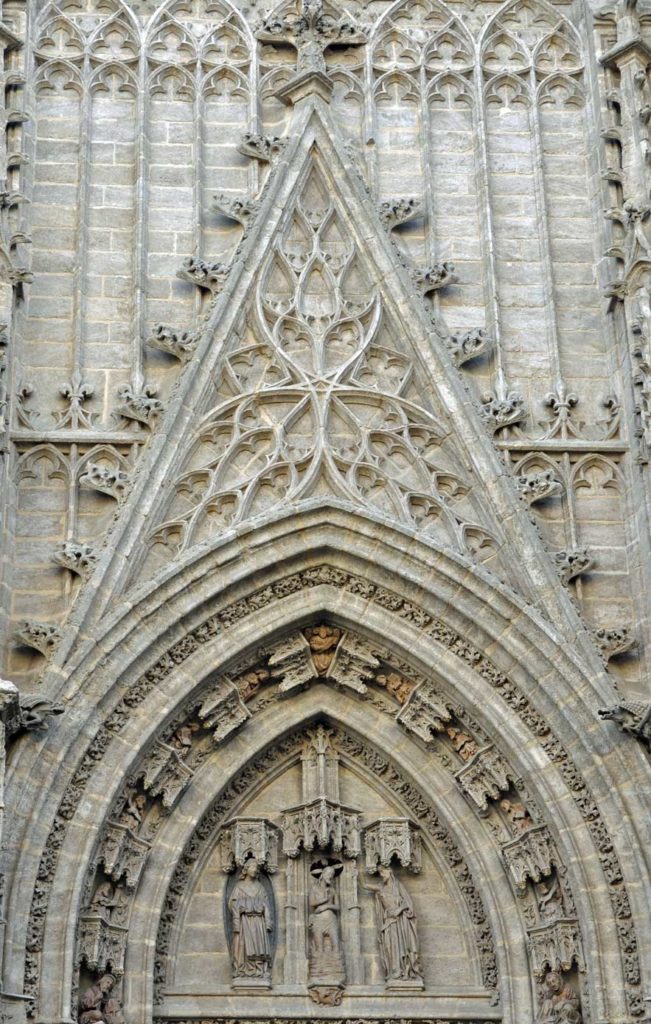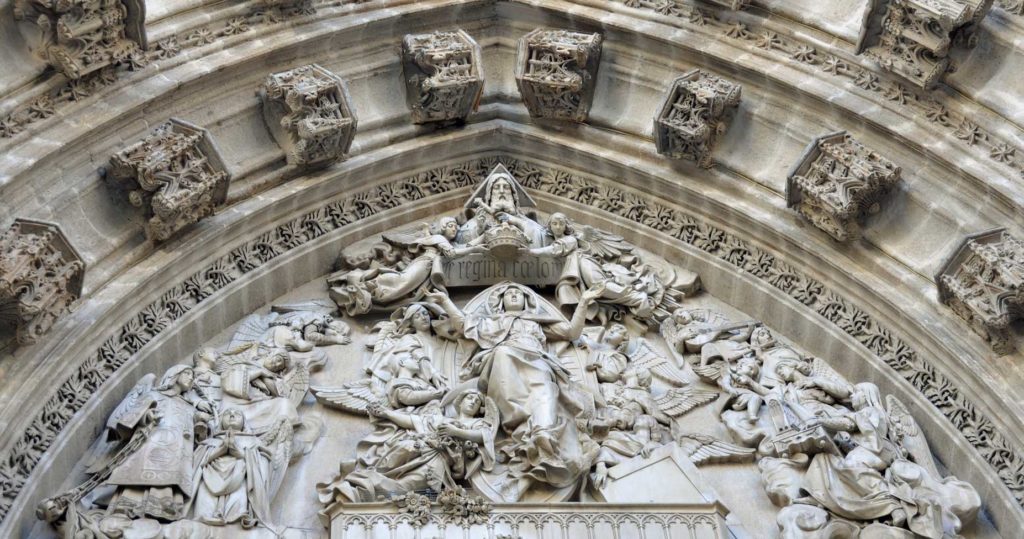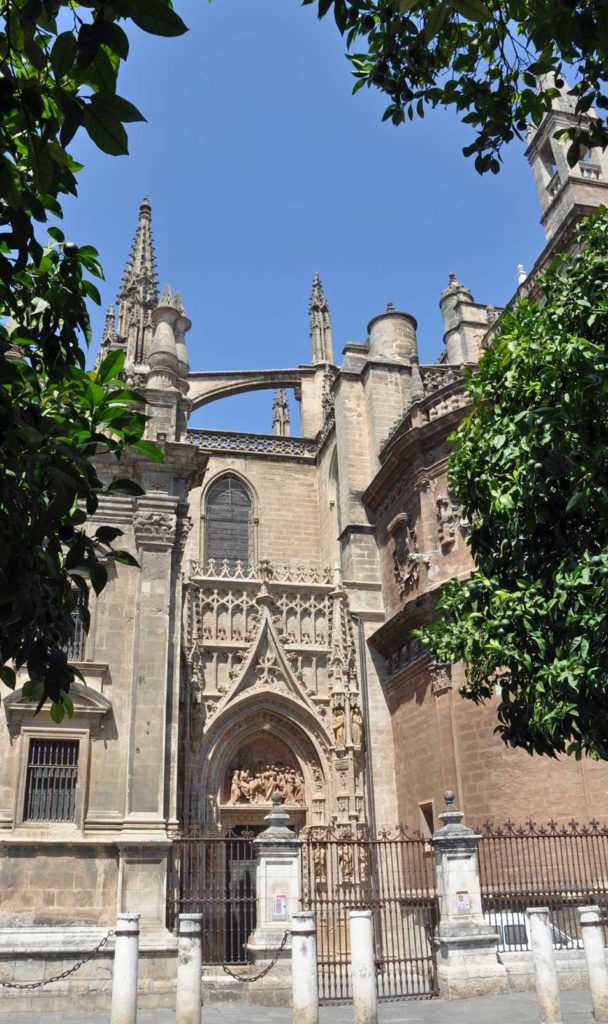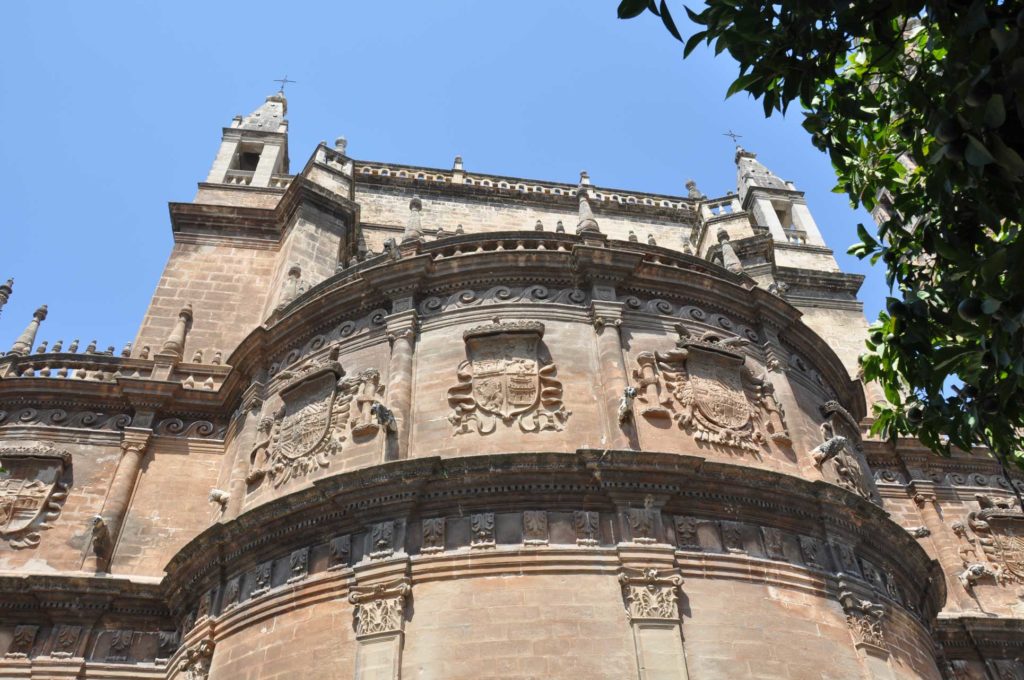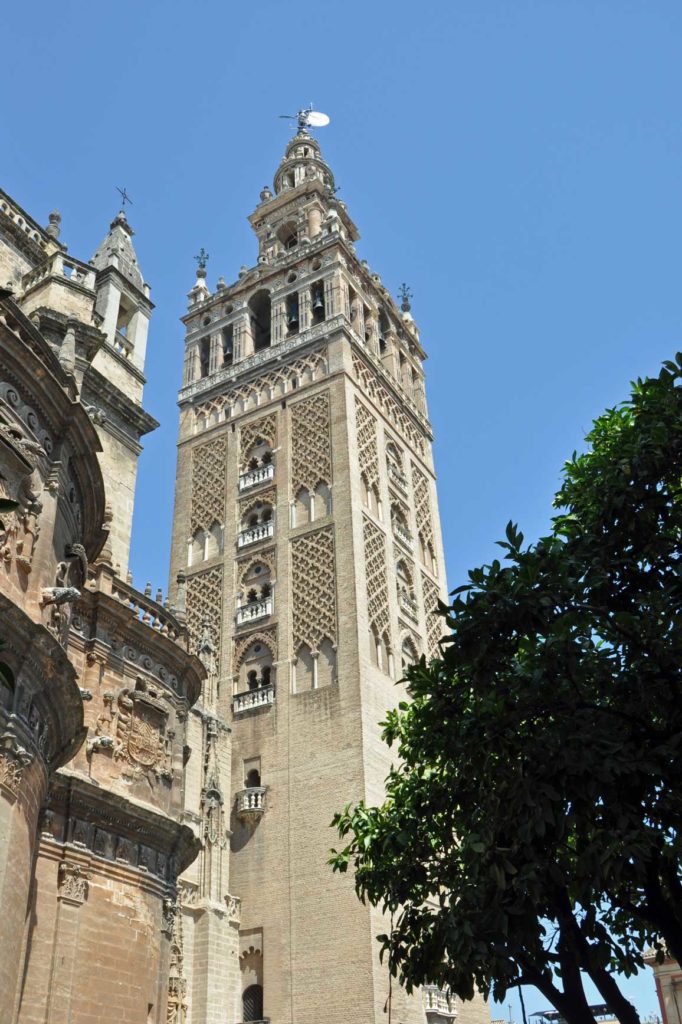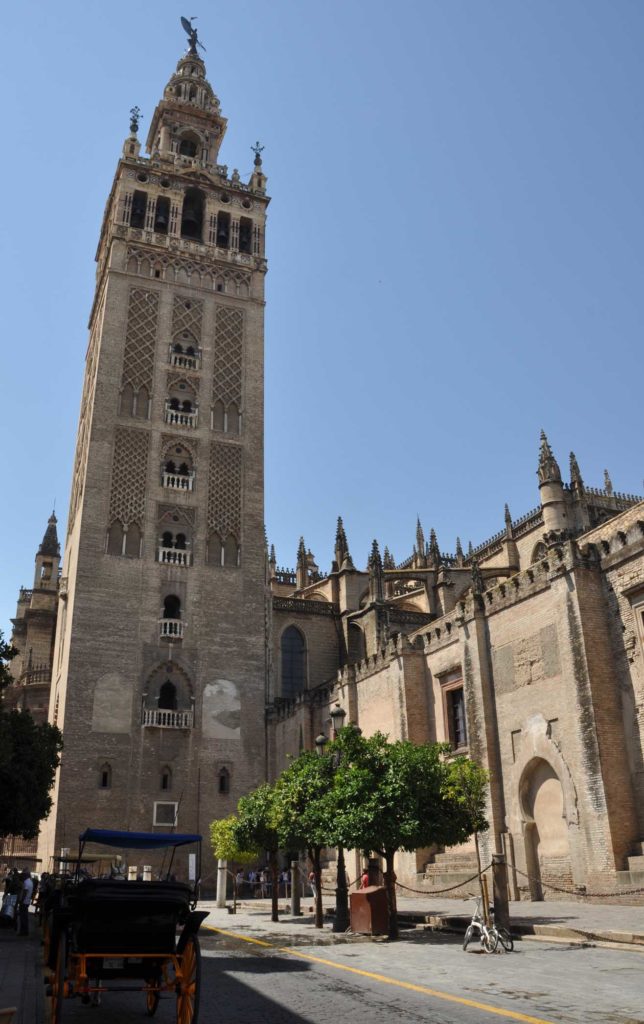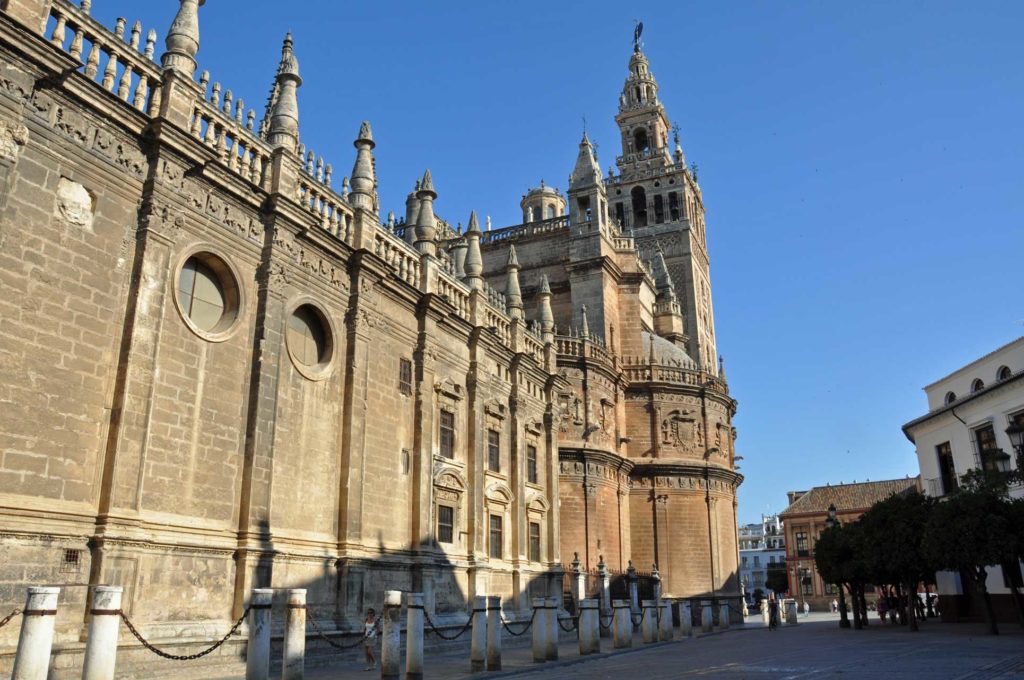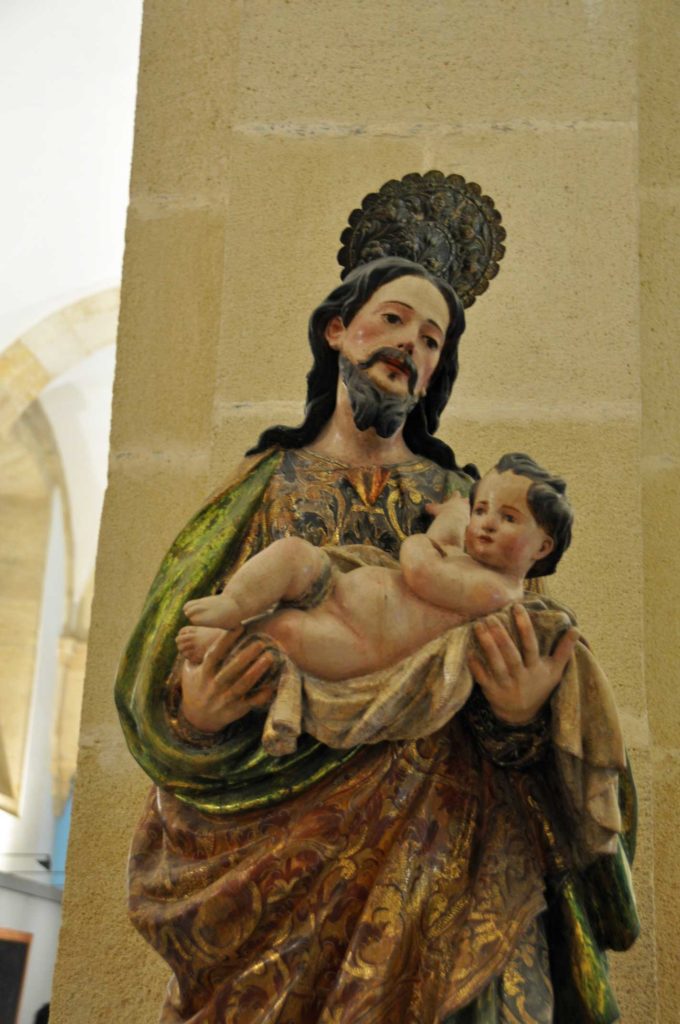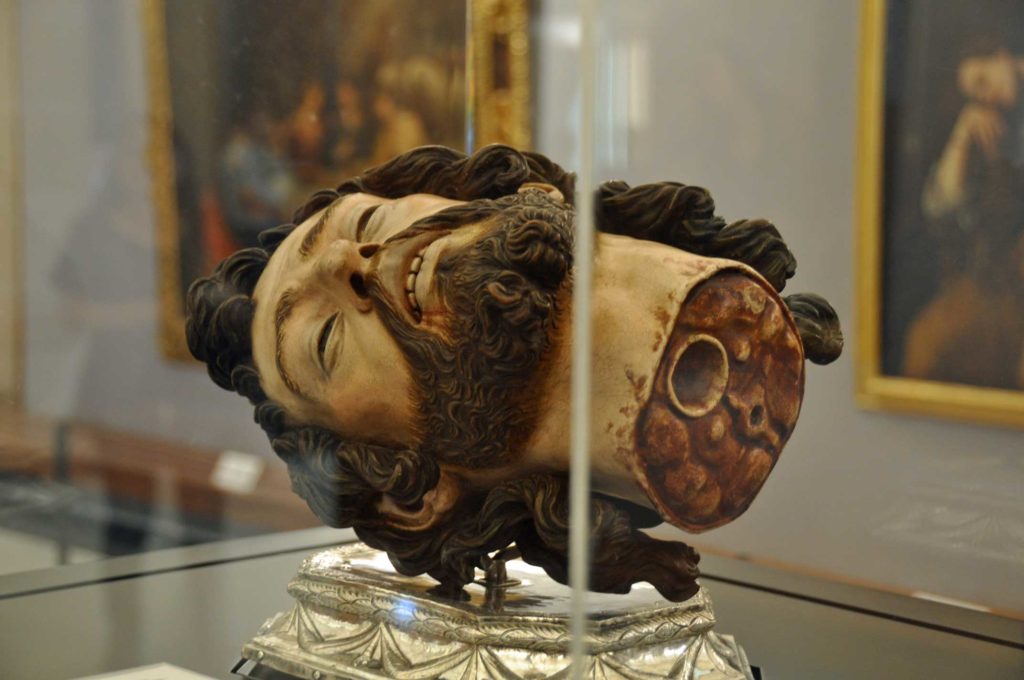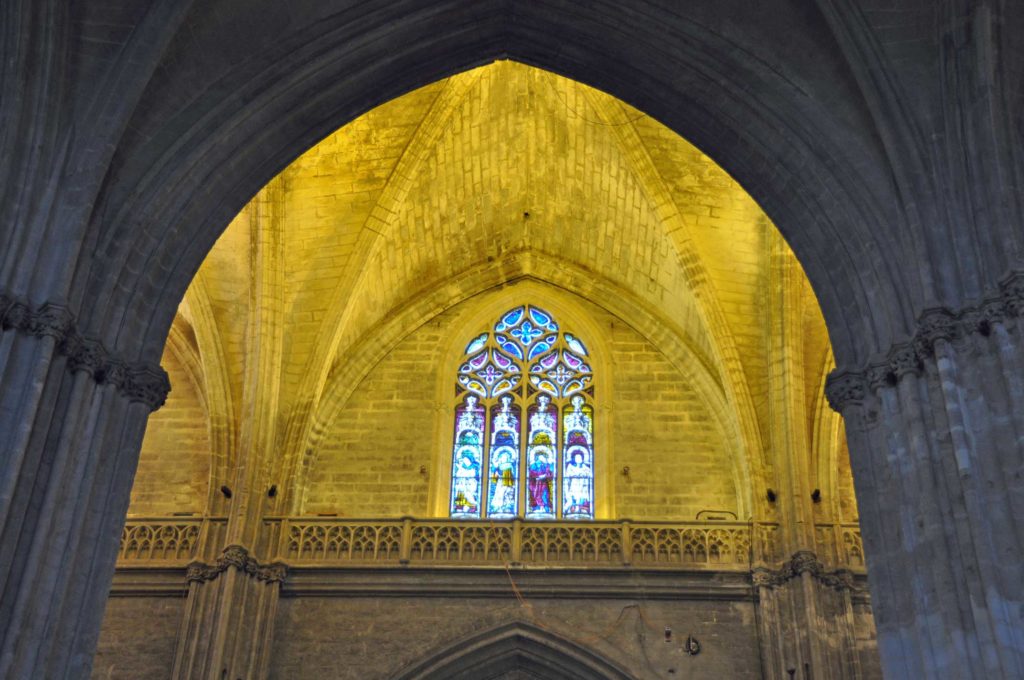Our first stop was Ronda, staying at the Parador which has the most amazing location looking across the bridge into the Old Town across a huge gorge.
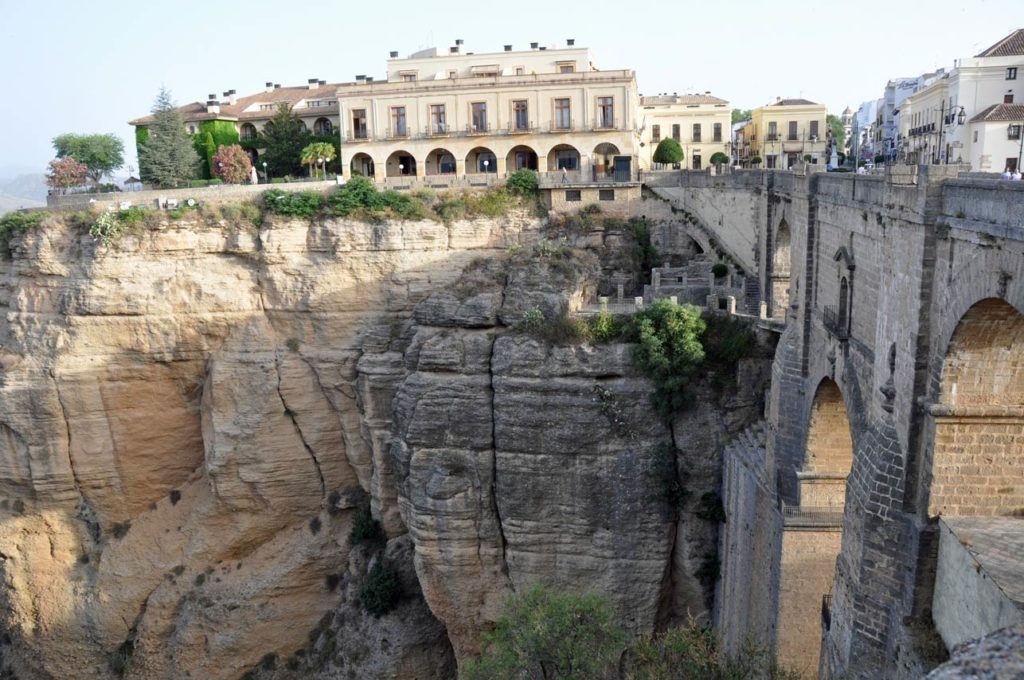
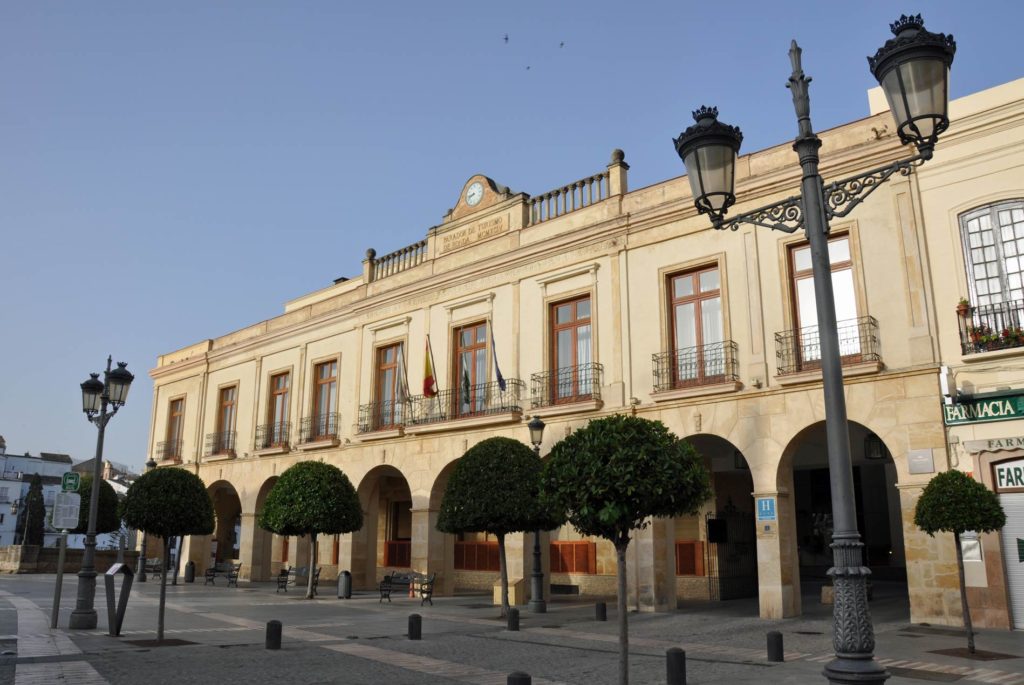
The view from the hotel was amazing, with the small streets just across the road with cafes, tapas bars and restaurants everywhere.
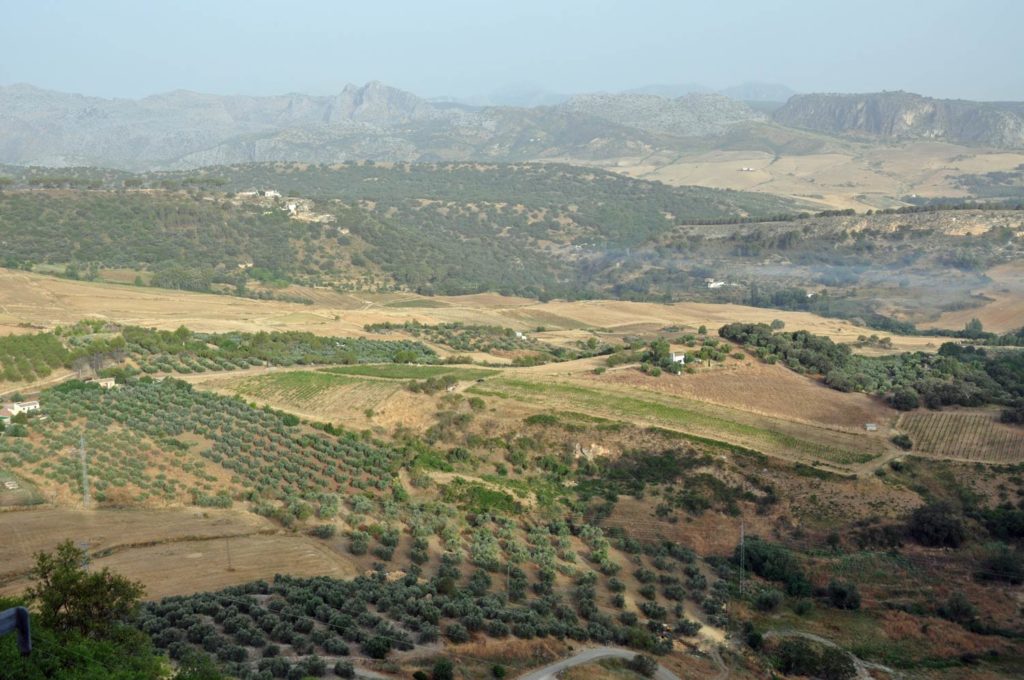
As vegetarians it quickly became clear that there were few choices beyond tapas. We settled into a routine of olives, oil, bread, tomato salad and aubergine (berenjenas).
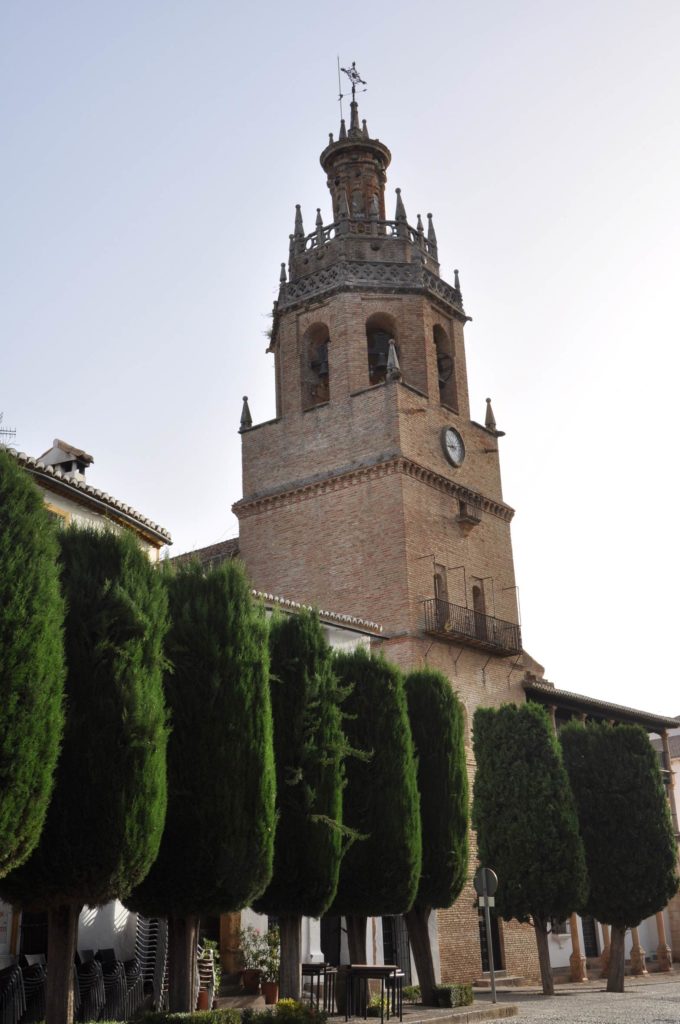
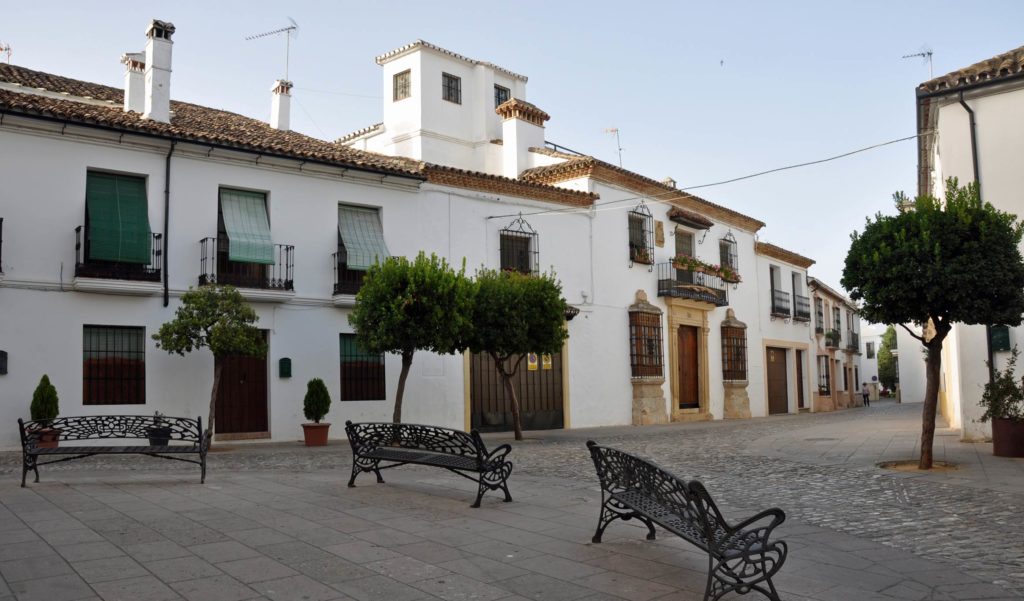 With temperatures regularly hitting 40-45C, the only reasonable time to be wandering around the town was early morning or evening.
With temperatures regularly hitting 40-45C, the only reasonable time to be wandering around the town was early morning or evening.
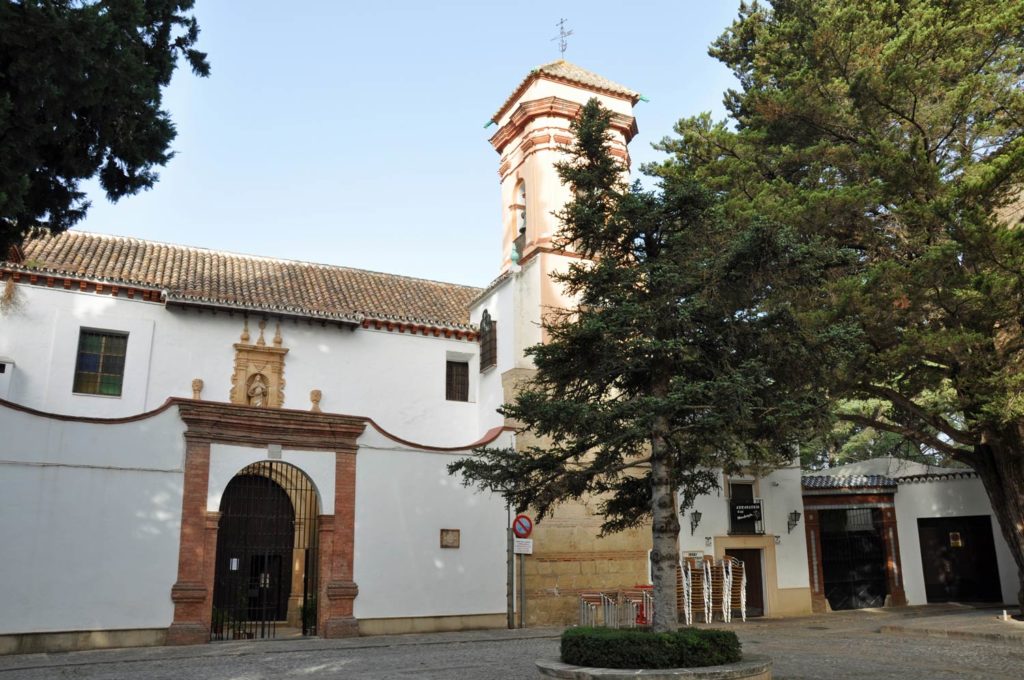
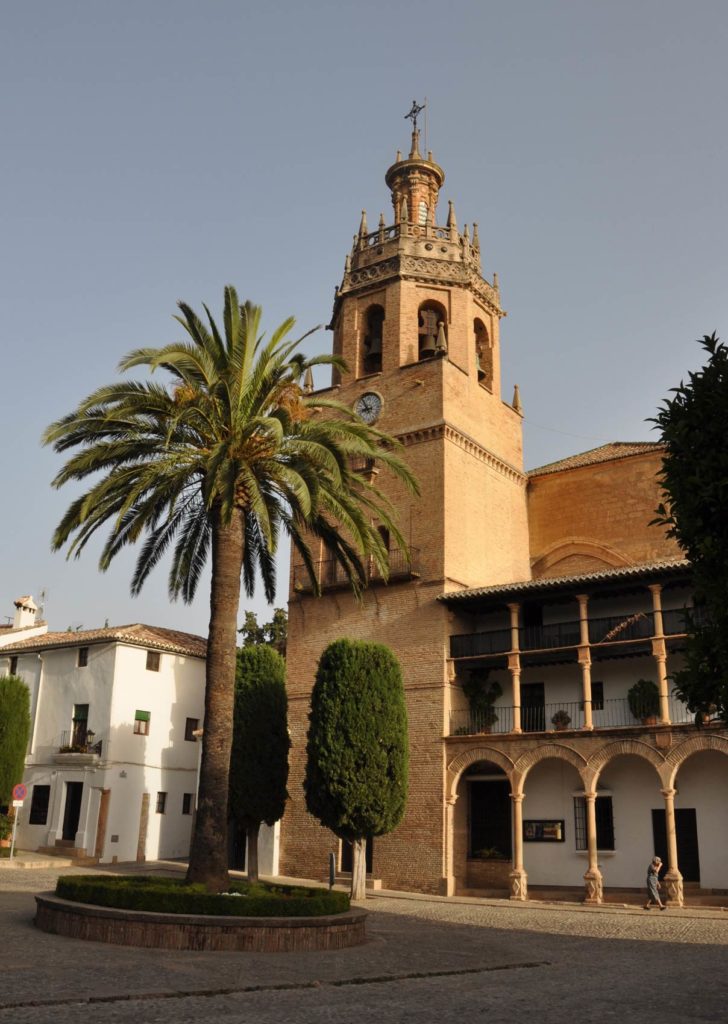
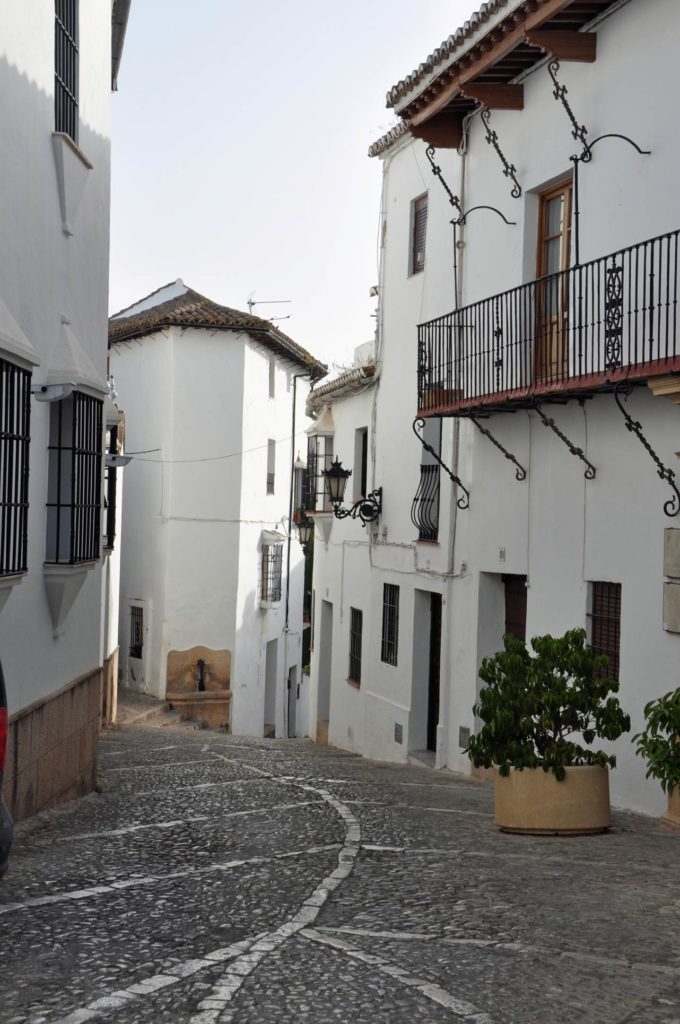
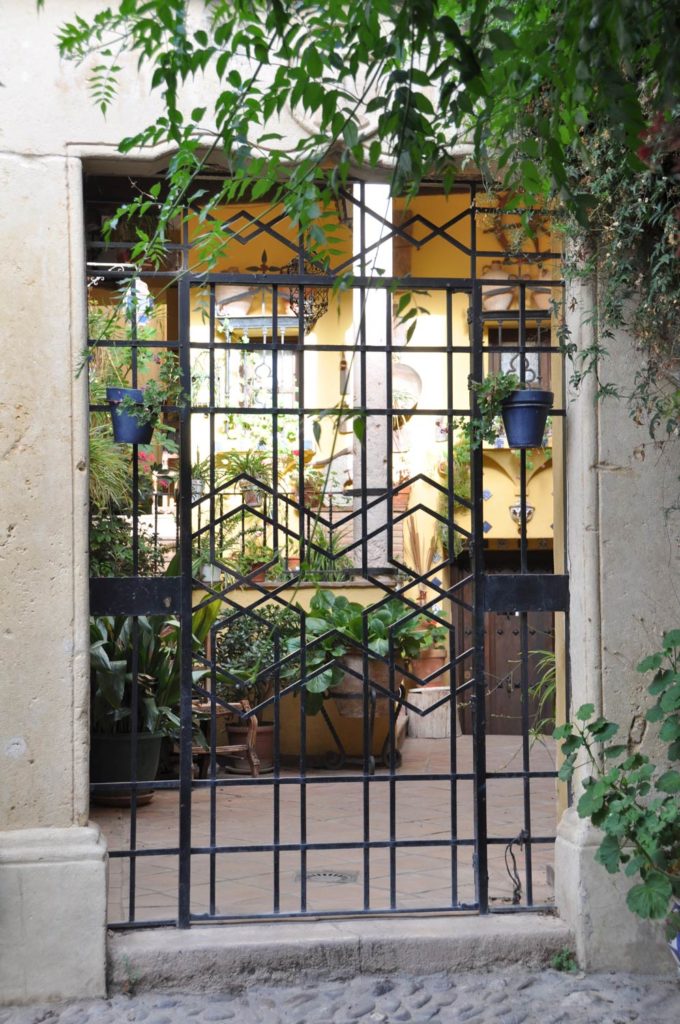
In every Spanish town we found an extraordinary number of churches and courtyards which could only be viewed through wrought iron gates. They promised cool respite from the baking heat, usually when we were baking in the heat.
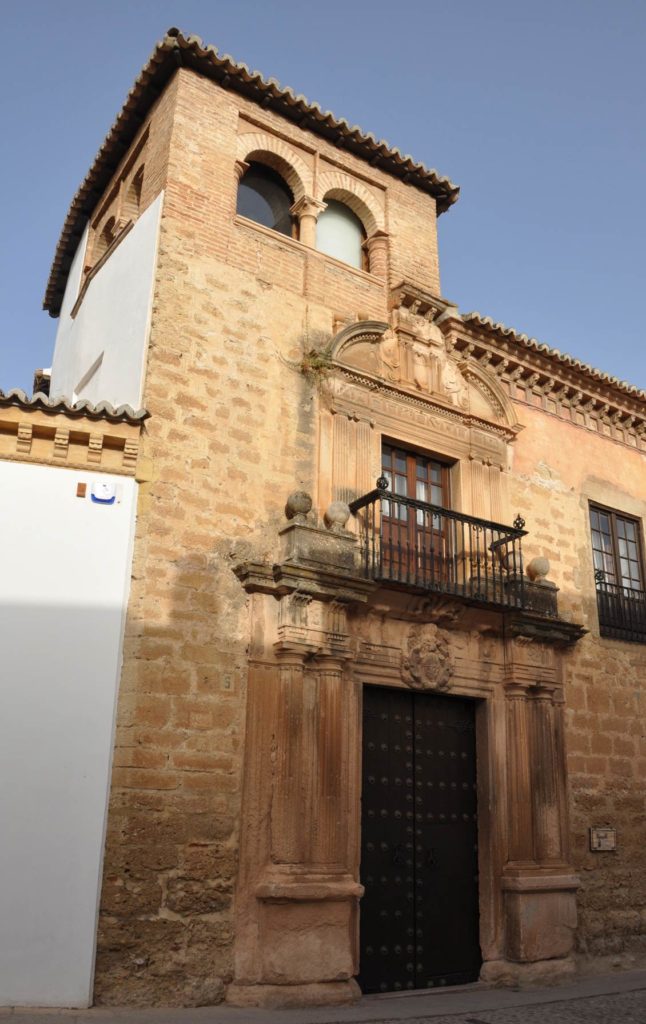
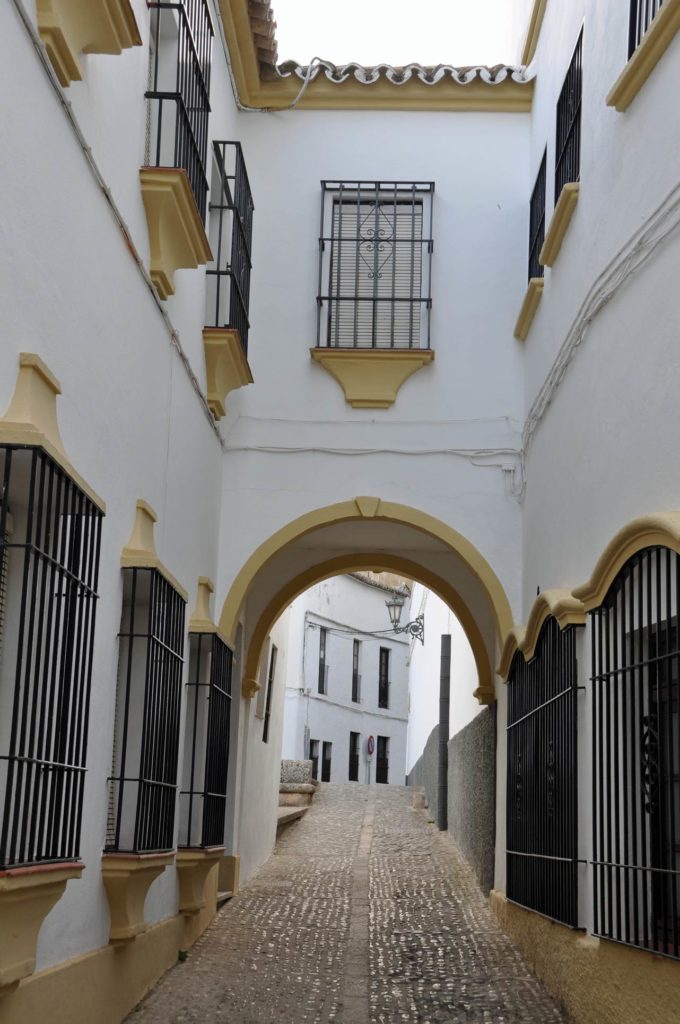
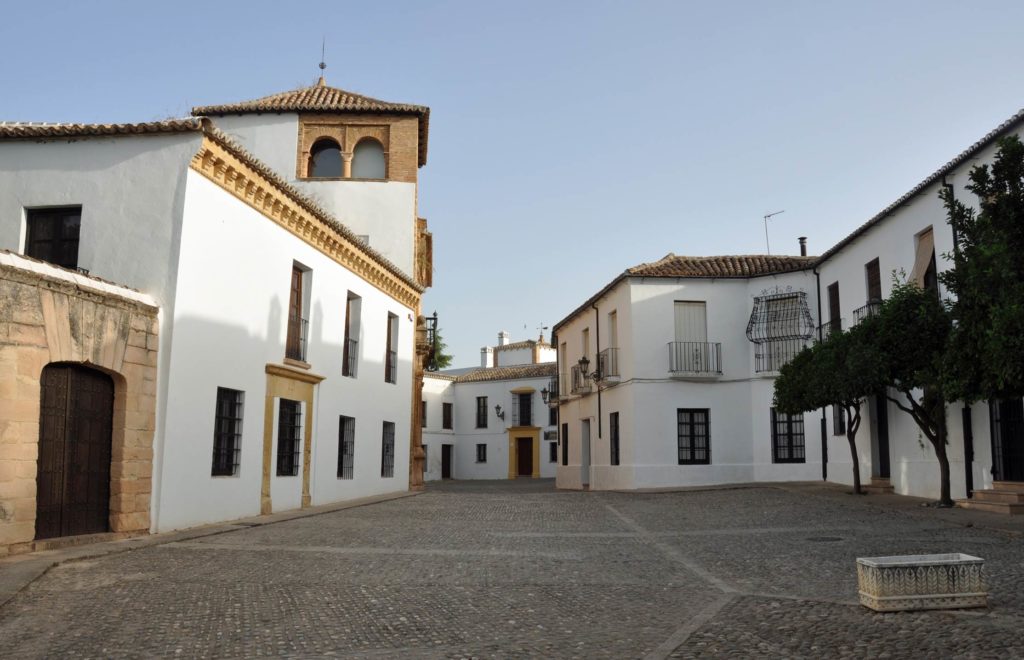
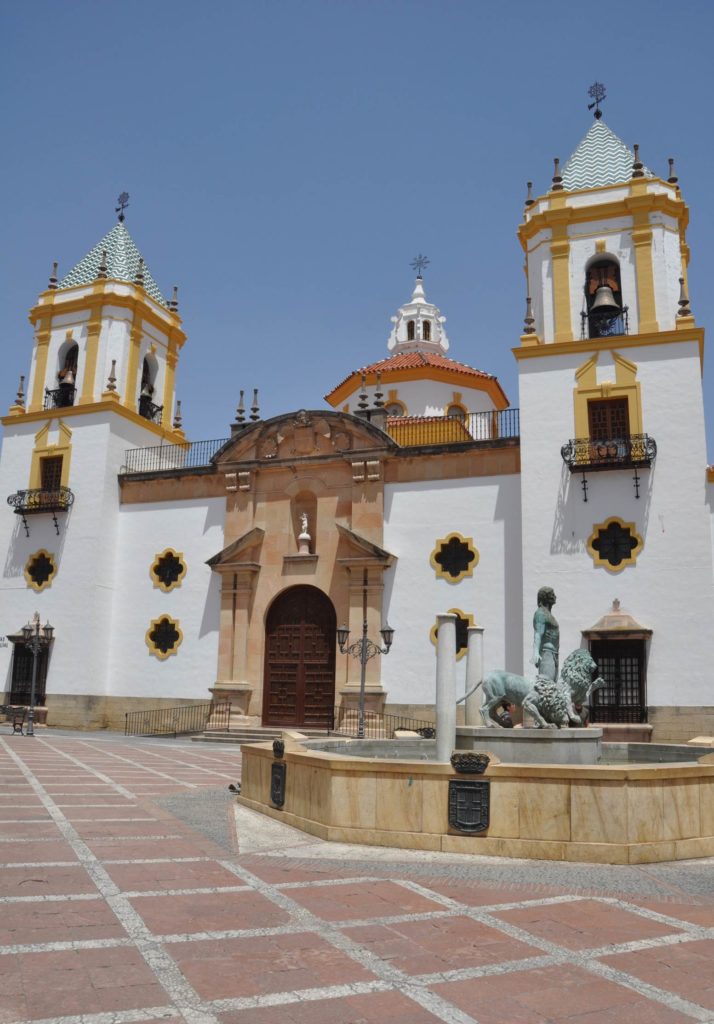
Ronda also has the oldest bullring in Spain, which is also open to the public. the ring itself was almost eerily silent. It was difficult not to think of the blood and gore on the sand.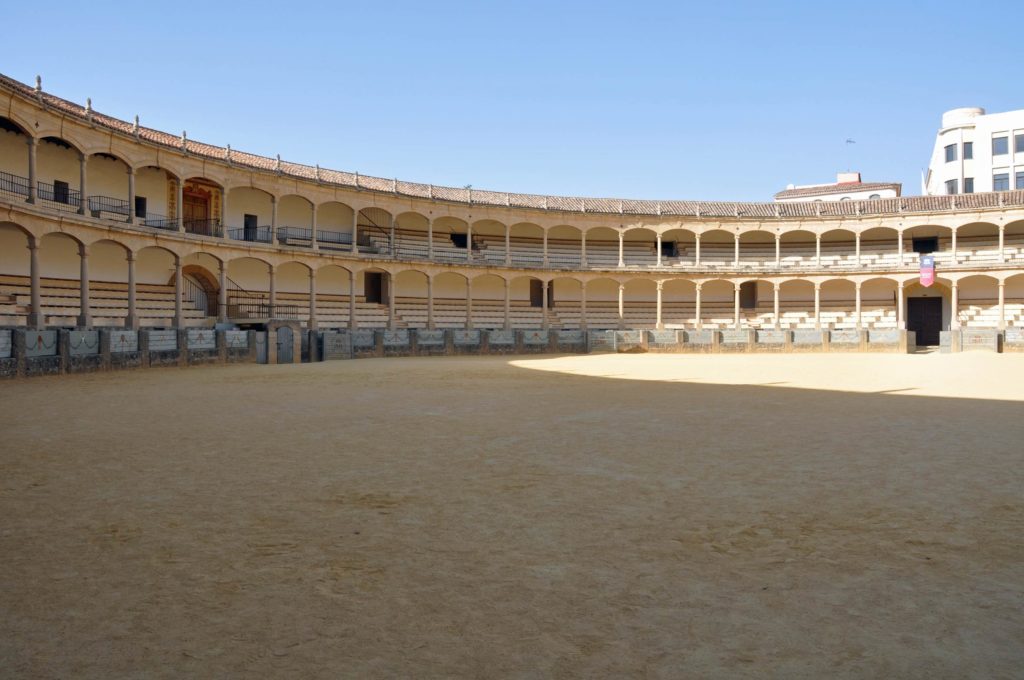
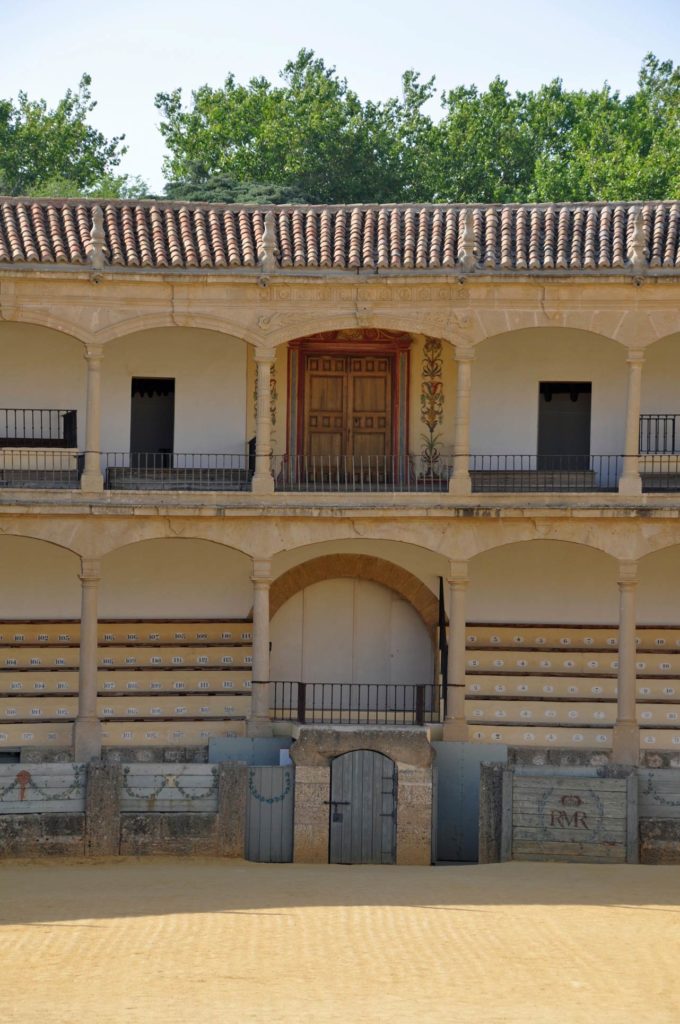
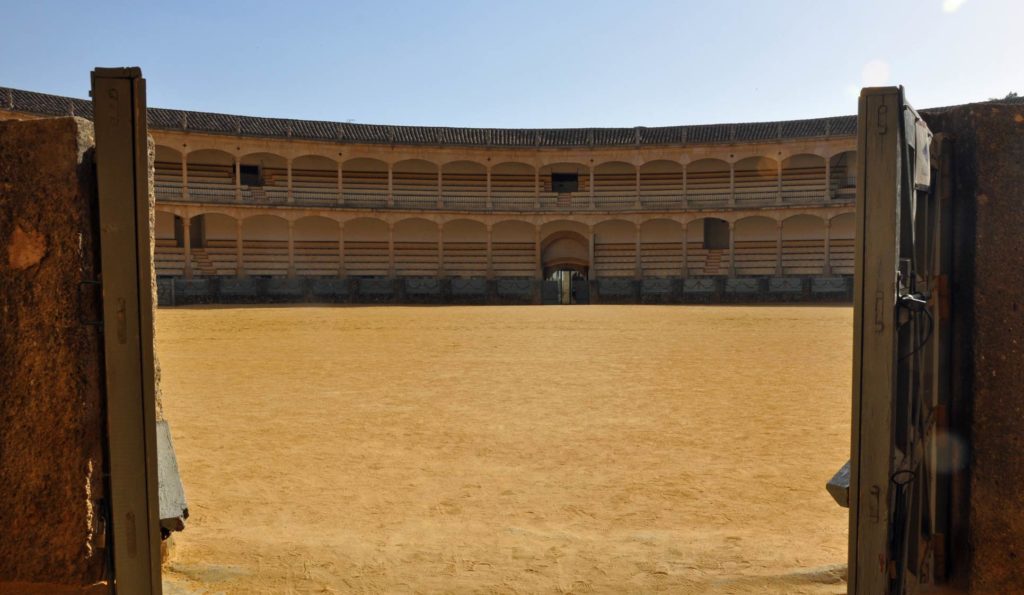 The building itself was strangely beautiful.
The building itself was strangely beautiful.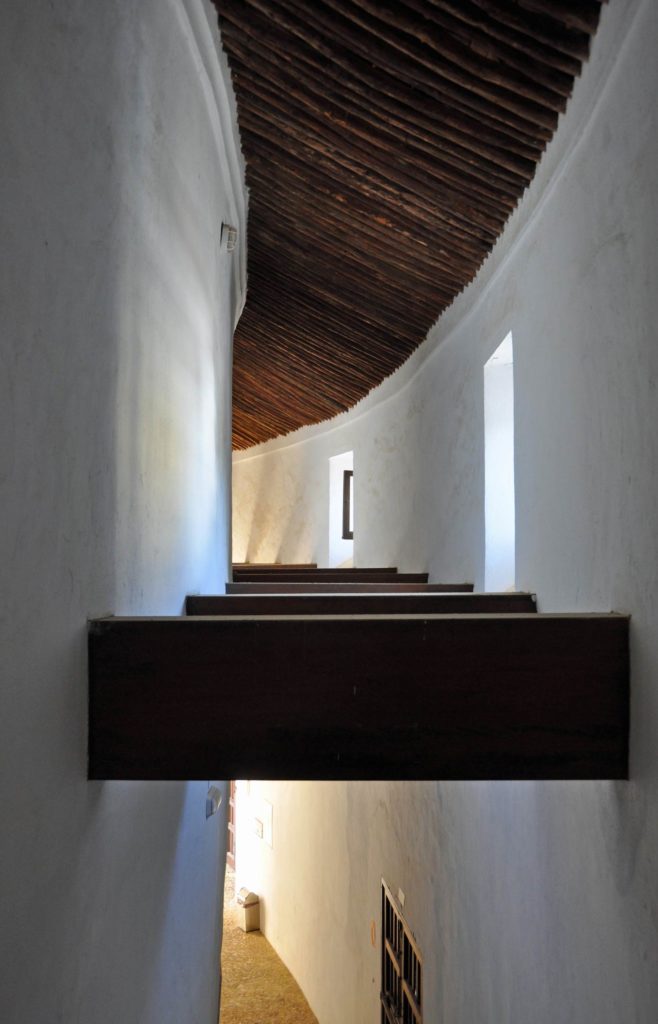
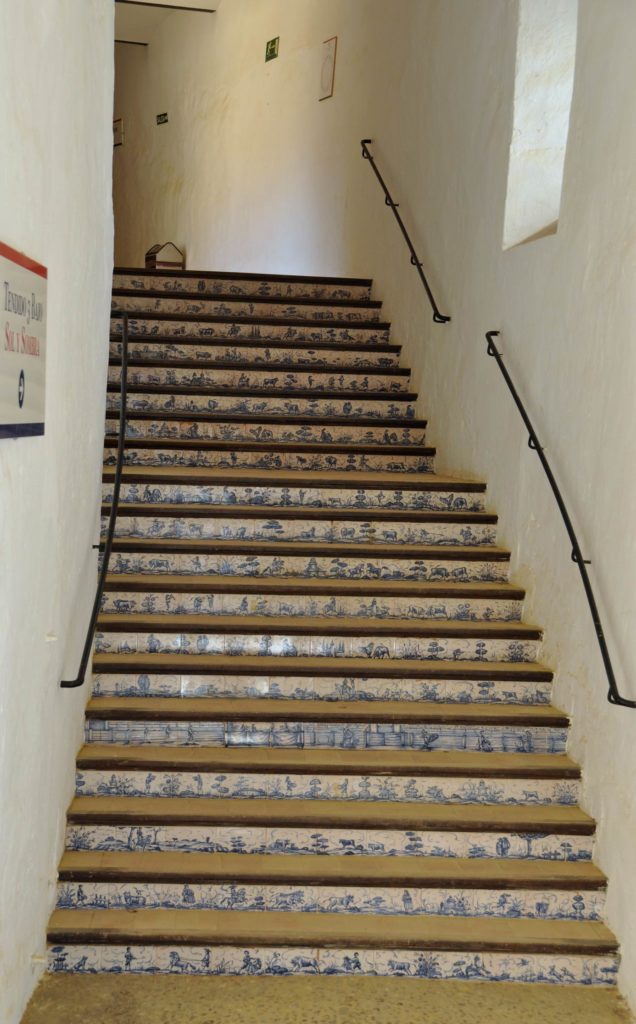
And then back to the hotel for dinner.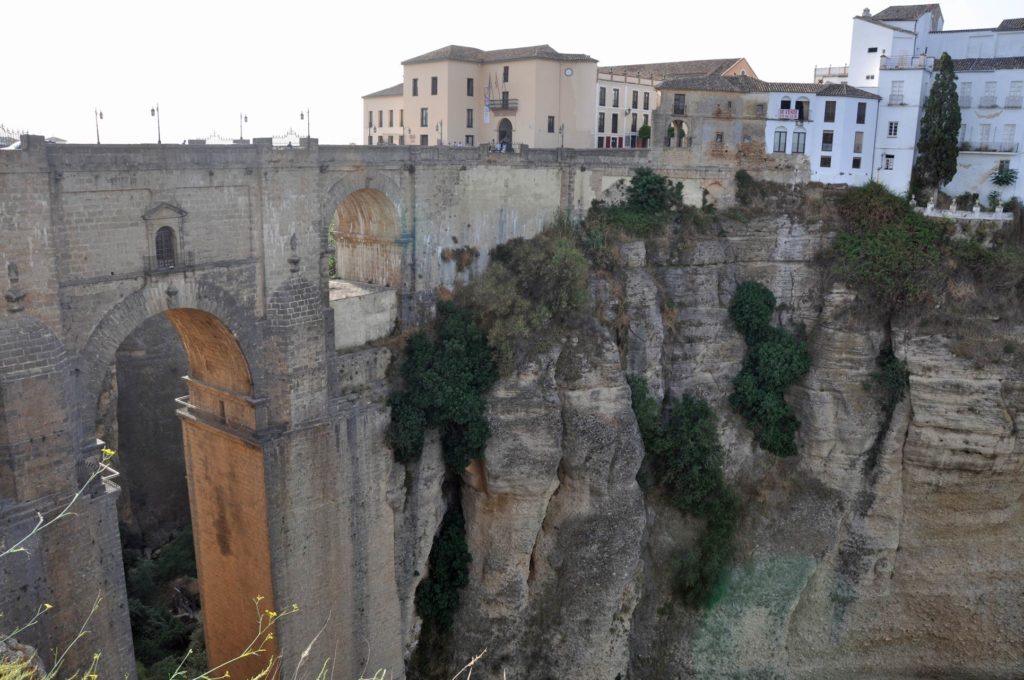
A couple days into our trip to Andalusia we decided to go sightseeing and visit a nearby town called Setenil. Setenil is built into a gorge, essentially a v-shaped valley with steep overhanging cliffs. The town, houses and streets are built into the cliffs rising up and up to the peak of the cliffs.
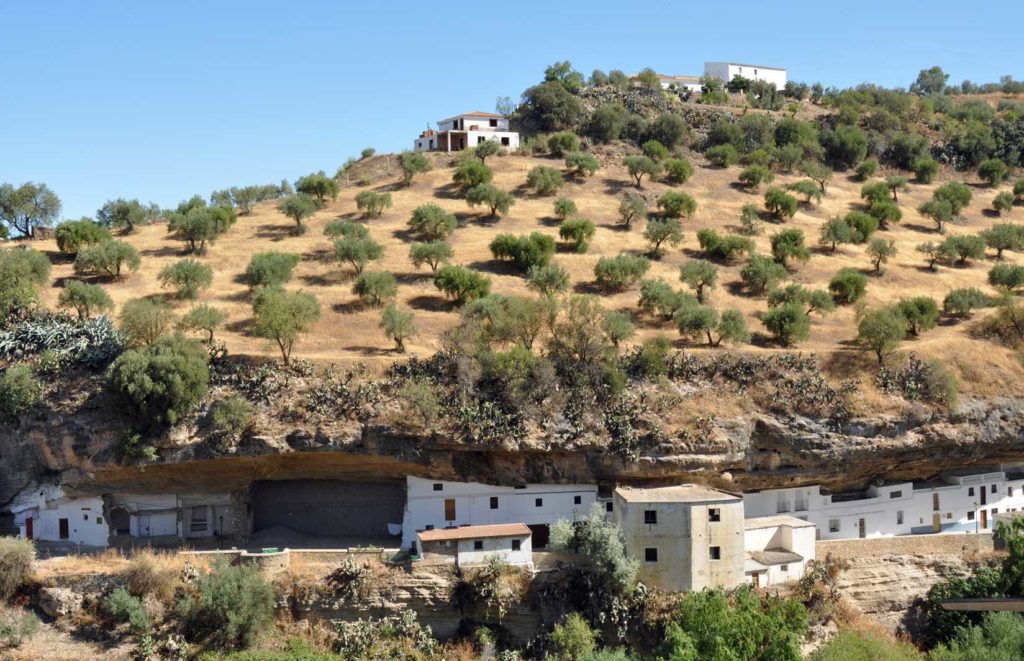
We set out with our usual plan, to drive until we found the town centre or square and then park up, have a cool drink and find the local church or town hall to visit.
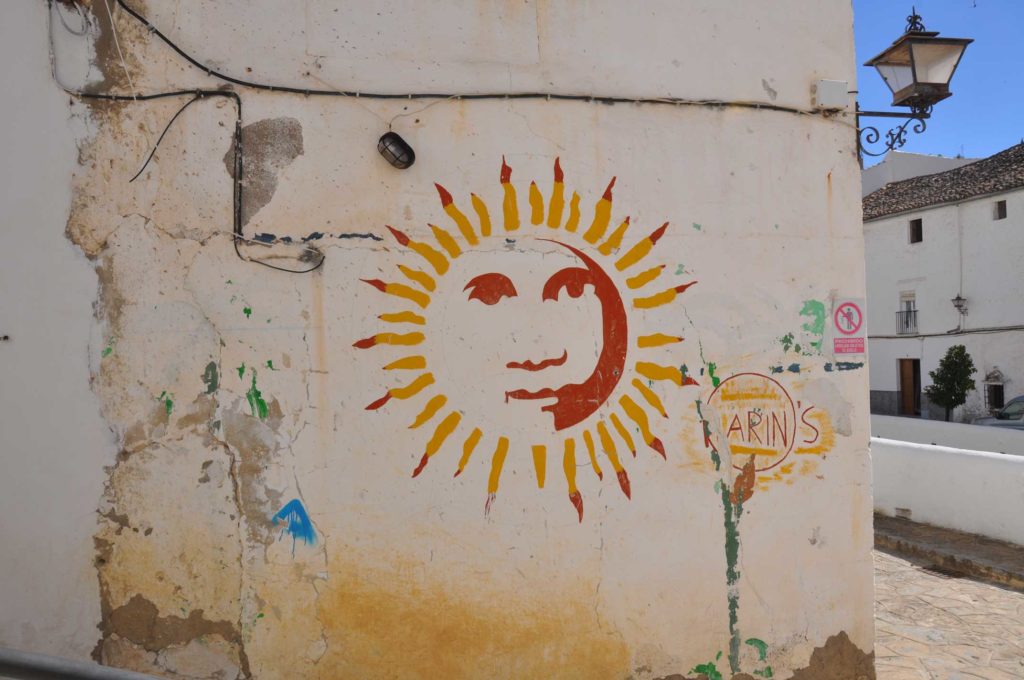 Driving into the town centre, we briefly noticed a smallish sign marked 1.40metres but clearly din’t pay it the attention it deserved in our rather large seat people carrier
Driving into the town centre, we briefly noticed a smallish sign marked 1.40metres but clearly din’t pay it the attention it deserved in our rather large seat people carrier
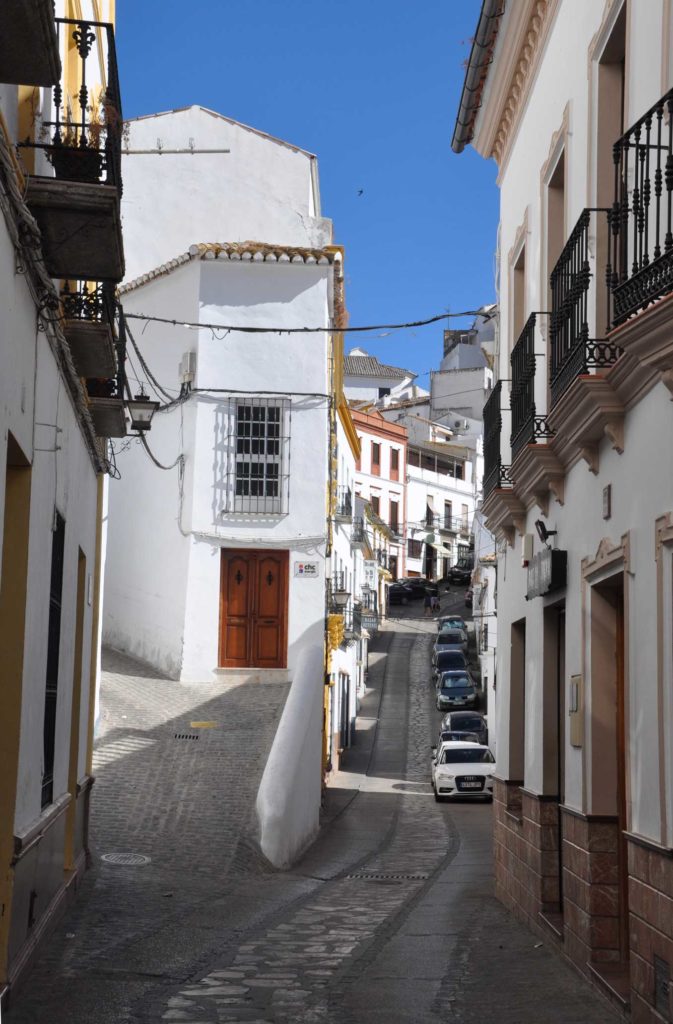
The road we were following in the car got narrower and narrower like some horrendous funnel. There was no possibility of turning around. About a minute in my daughter had to get out and lead the way forwards. I would have got out, but the road was so narrow that my card door couldn’t open wide enough to let me out. Thankfully she had a slide door.
Mostly there were houses built up on each side of the car, occasionally we had a house on one side and a cliff, straight up or straight down on the other side. When the road wasn’t screamingly close, the locals had parked up their very small cars. All of the local cars had scrapes and bumps. Big ones.
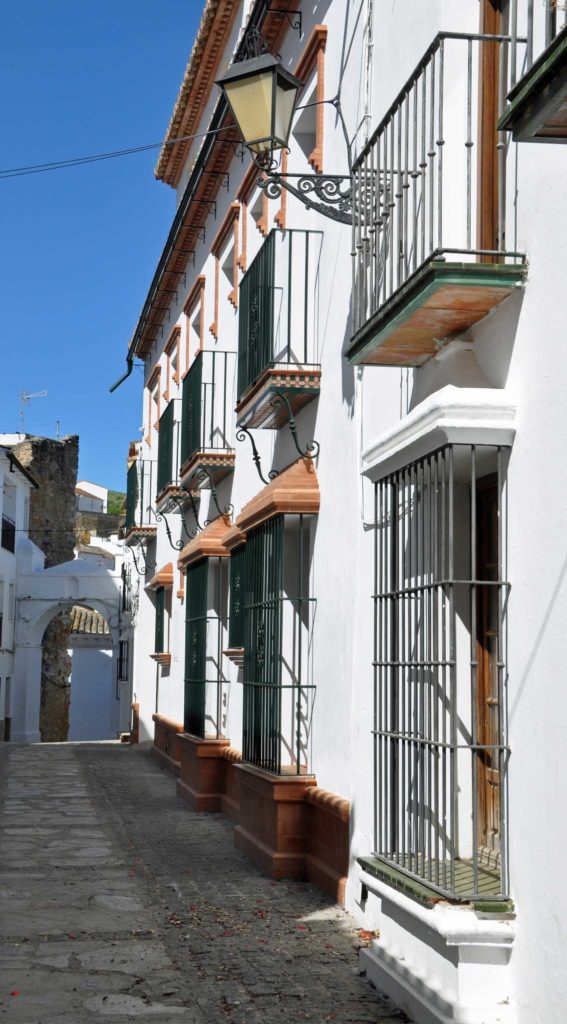
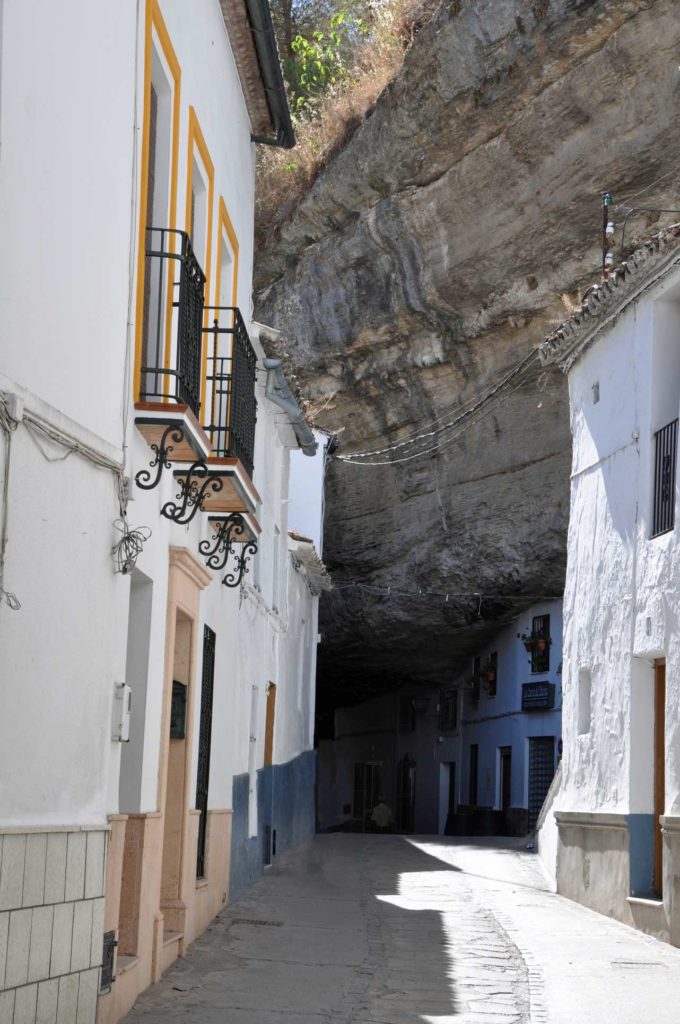
At this point it’s worth noting that the car was a manual drive and that my partner hasn’t had to deal with gears for a very very long time.
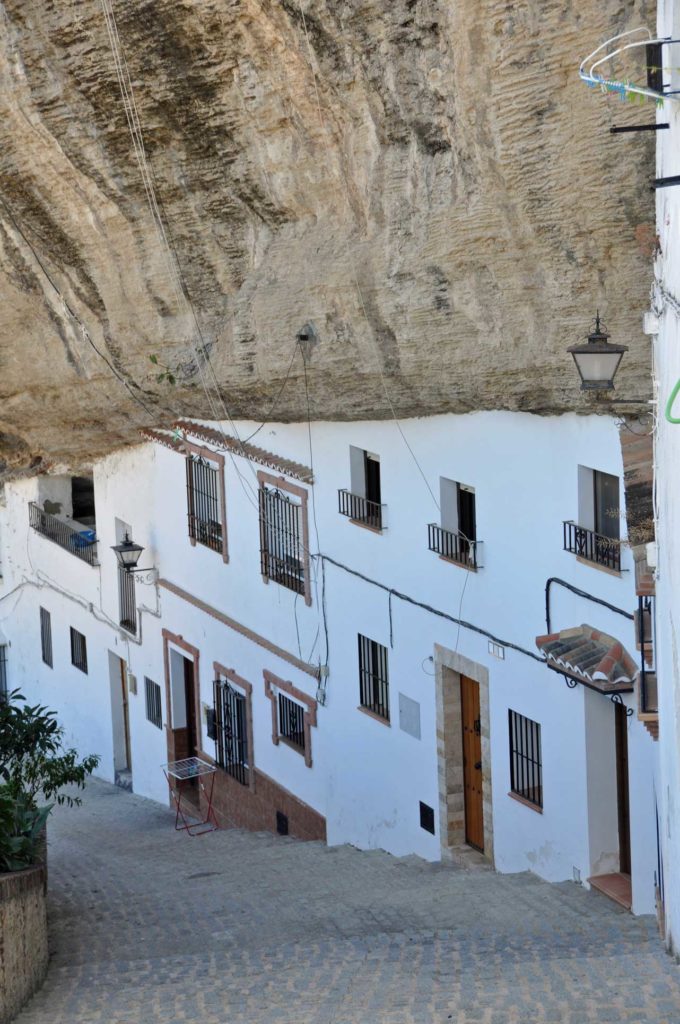
The nightmare culminated with a narrow junction, 1.4 metres wide, up a slope and bending slightly to the left. We had no more than a centimetres clearance on each side, the mirrors long since pulled in tight. If we had looked out of the wing mirrors it would have been even more clear that if we slipped backwards we’d crunch the back the car.
The corner was blind.
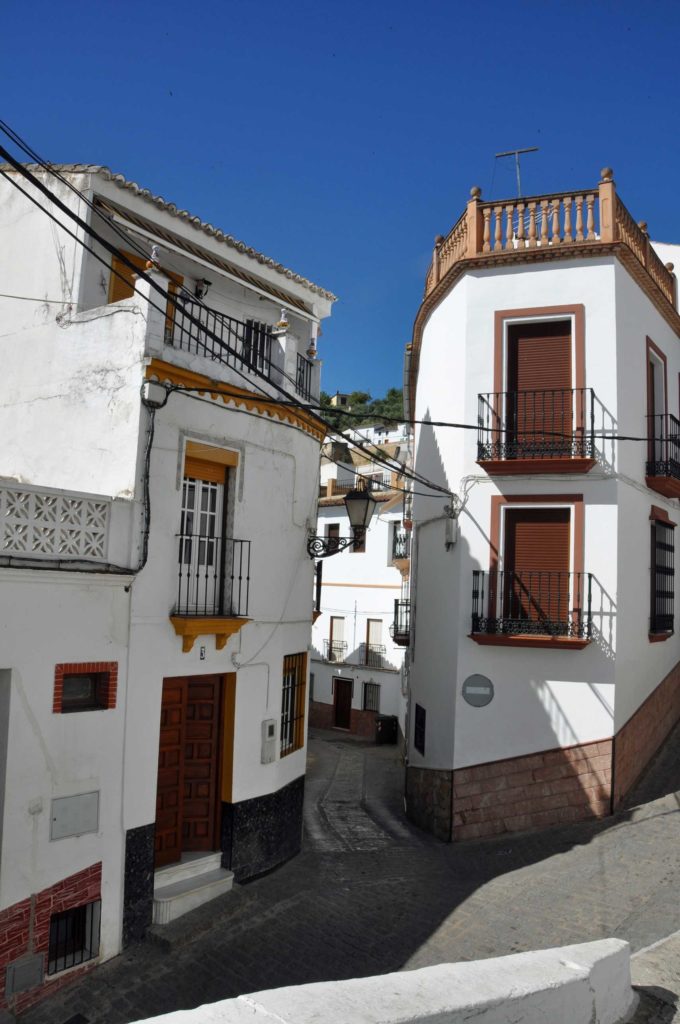
So we’re in the car, our teenage daughter trying to guide us out, my partner trying not to stall the car (and not to cry) when a helpful local comes along and with magnificent gestures and “rapido, rapido”manages to get us through the gap.
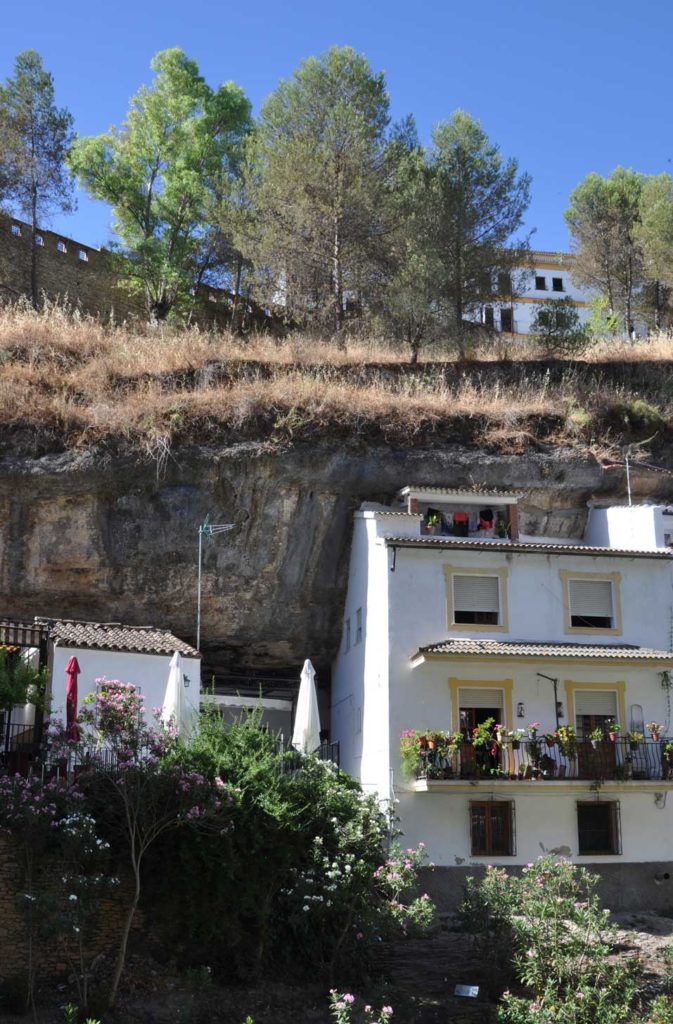
We rolled the car back down the hill away from the tiny square, in search of a car park.
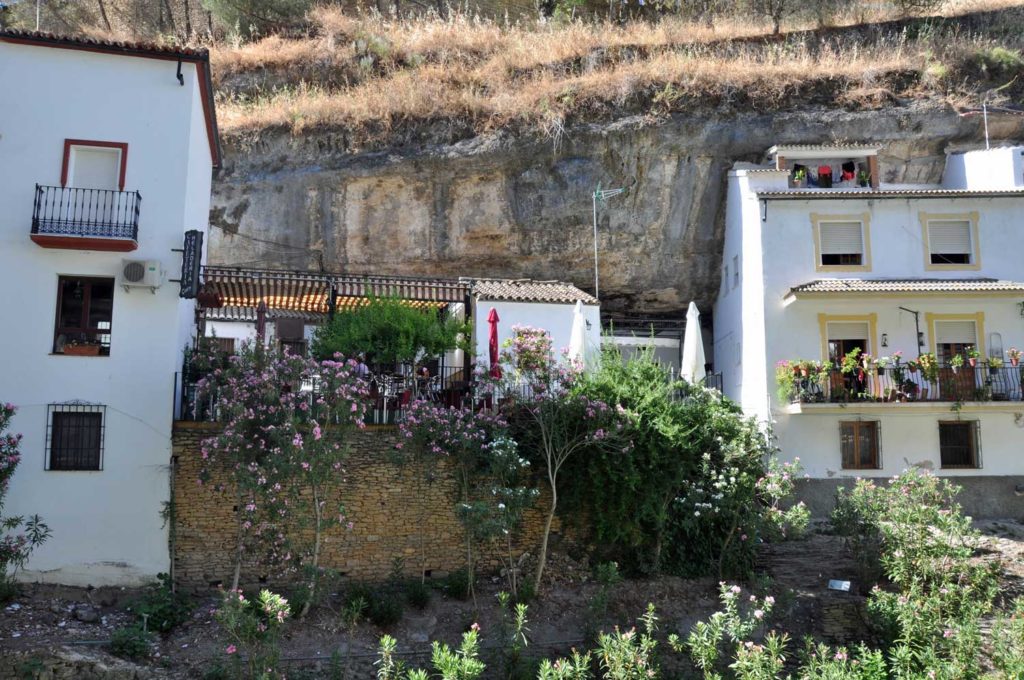
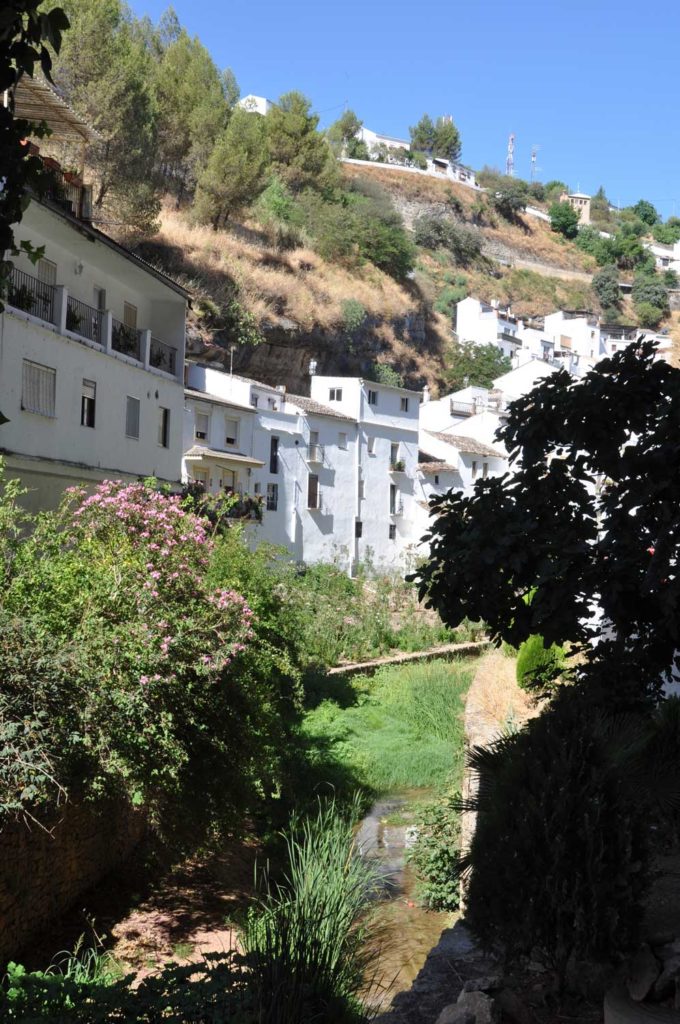
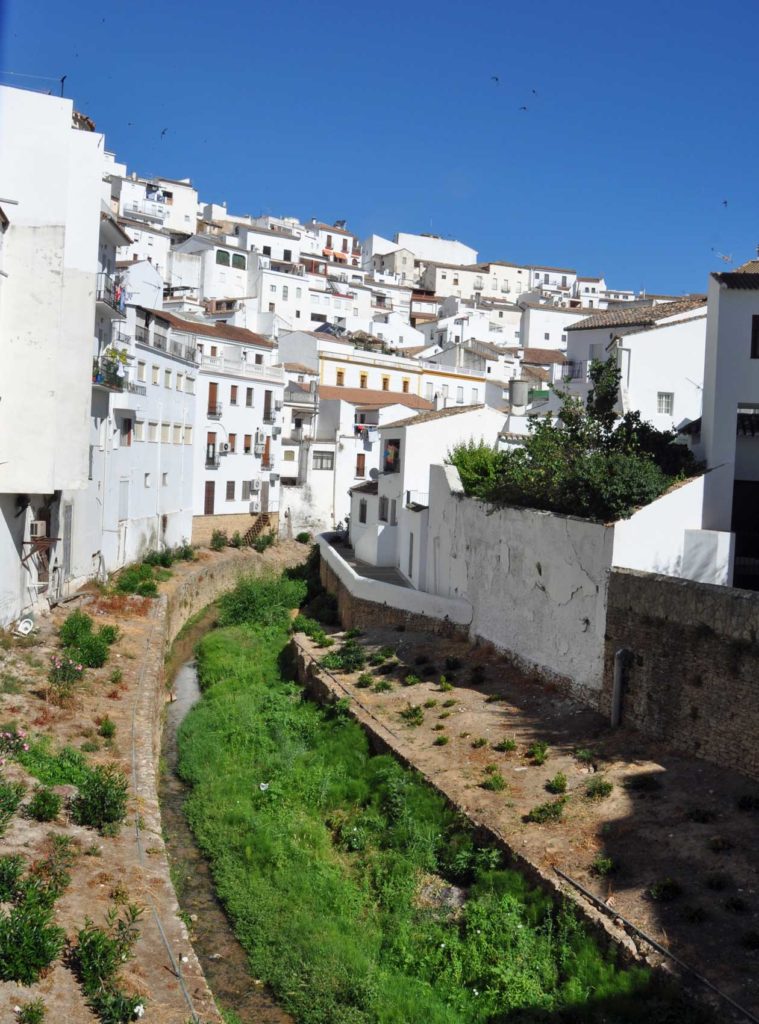 And then walked back up, sweating to find a cool drink not quite sure whether we’d had an adventure or a disaster.
And then walked back up, sweating to find a cool drink not quite sure whether we’d had an adventure or a disaster.
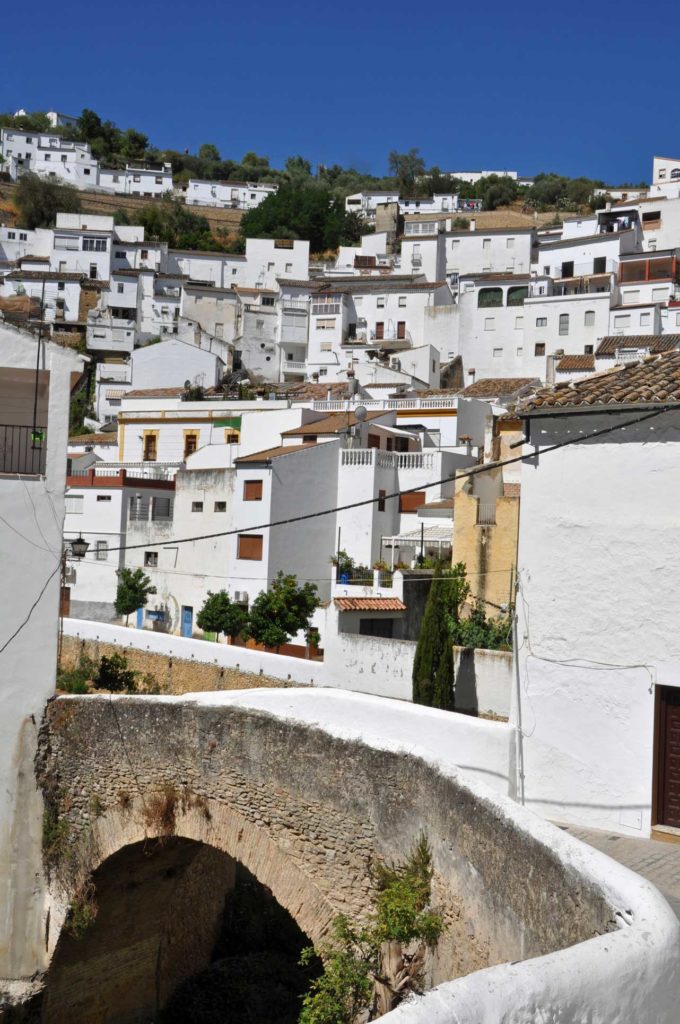
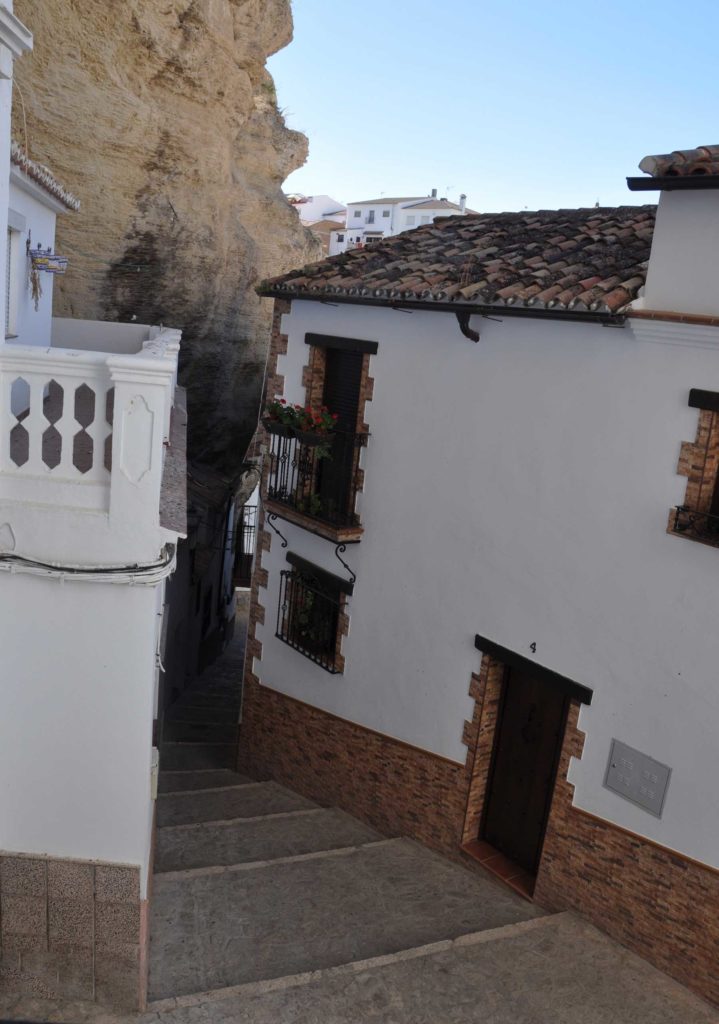 The drink was cold, the locals welcoming. We had an excellent view of other tourists trying to negotiate the roads without turning their hire cars into bish-bash dodgems
The drink was cold, the locals welcoming. We had an excellent view of other tourists trying to negotiate the roads without turning their hire cars into bish-bash dodgems
And right at the top was a tiny church to enjoy.
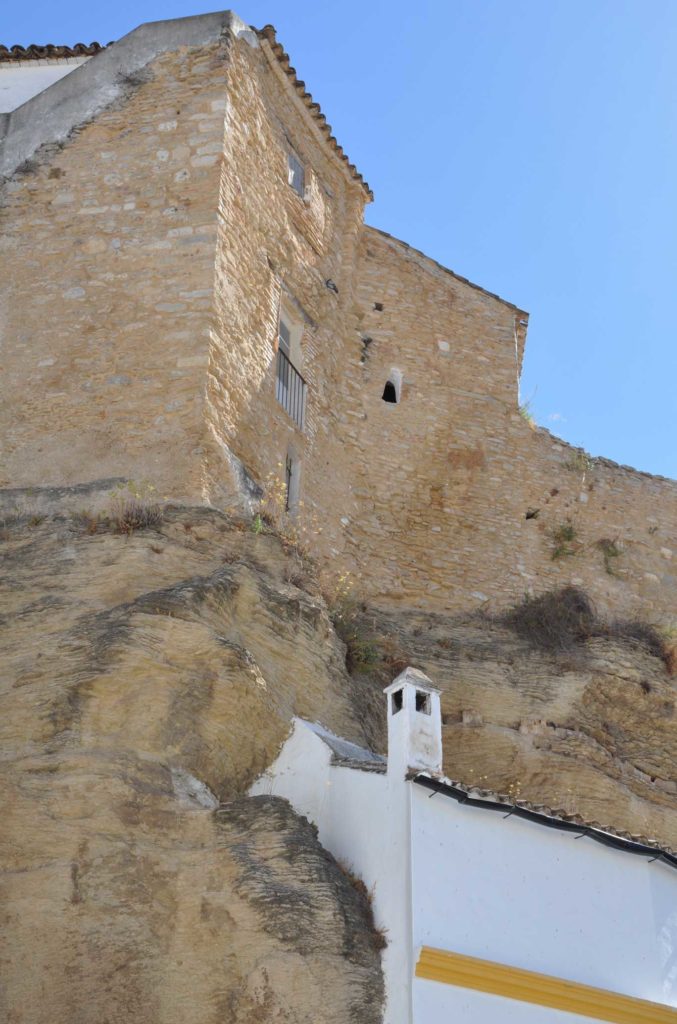
With views of the bell tower and town below.
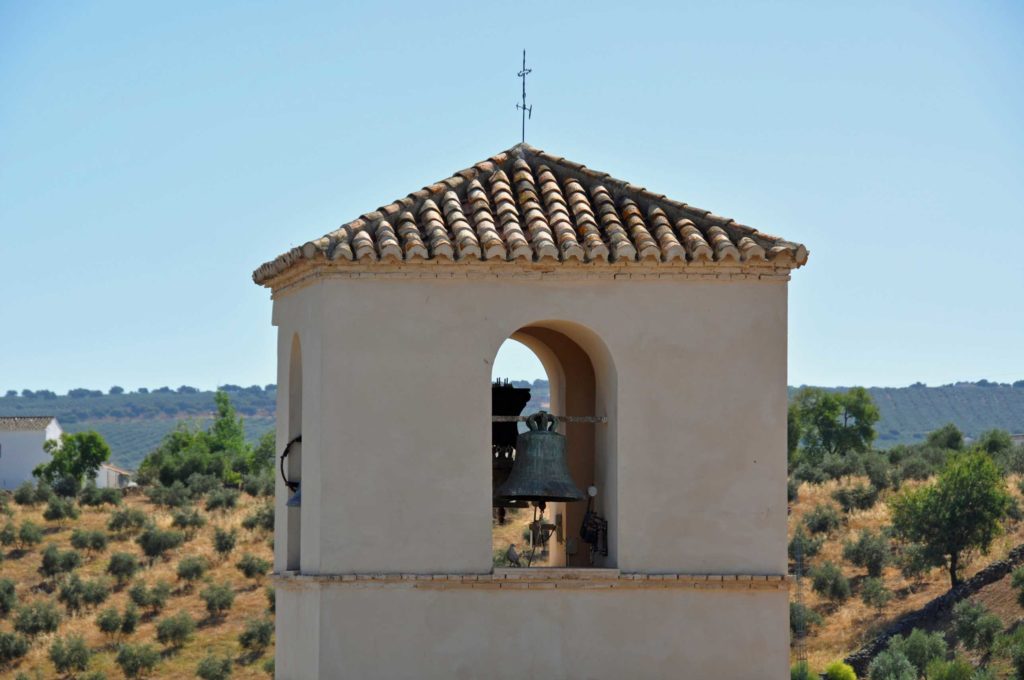
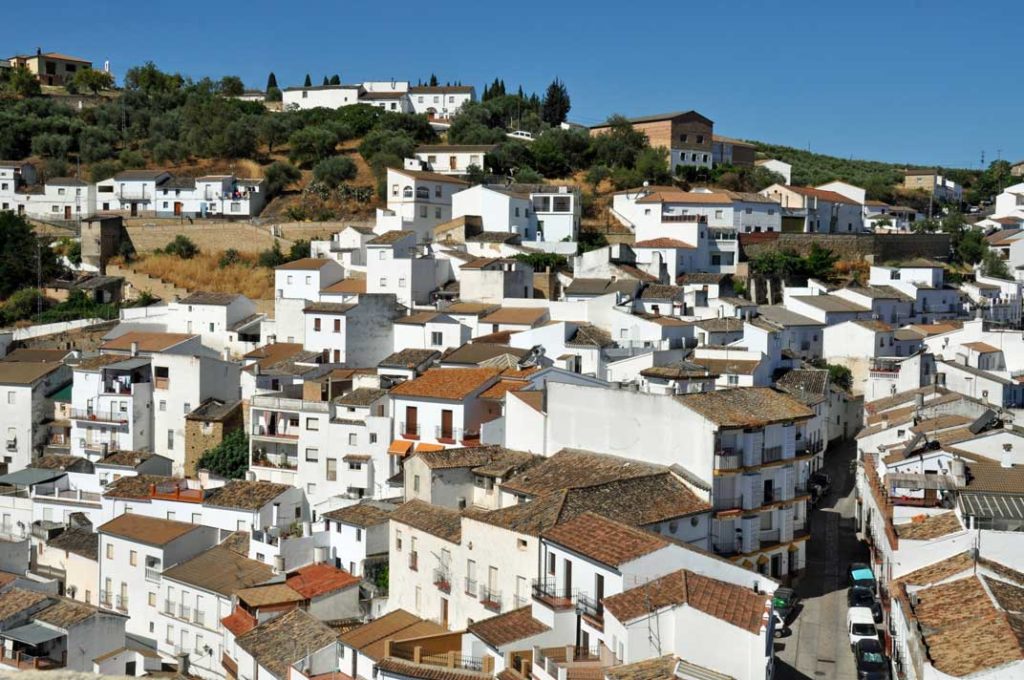
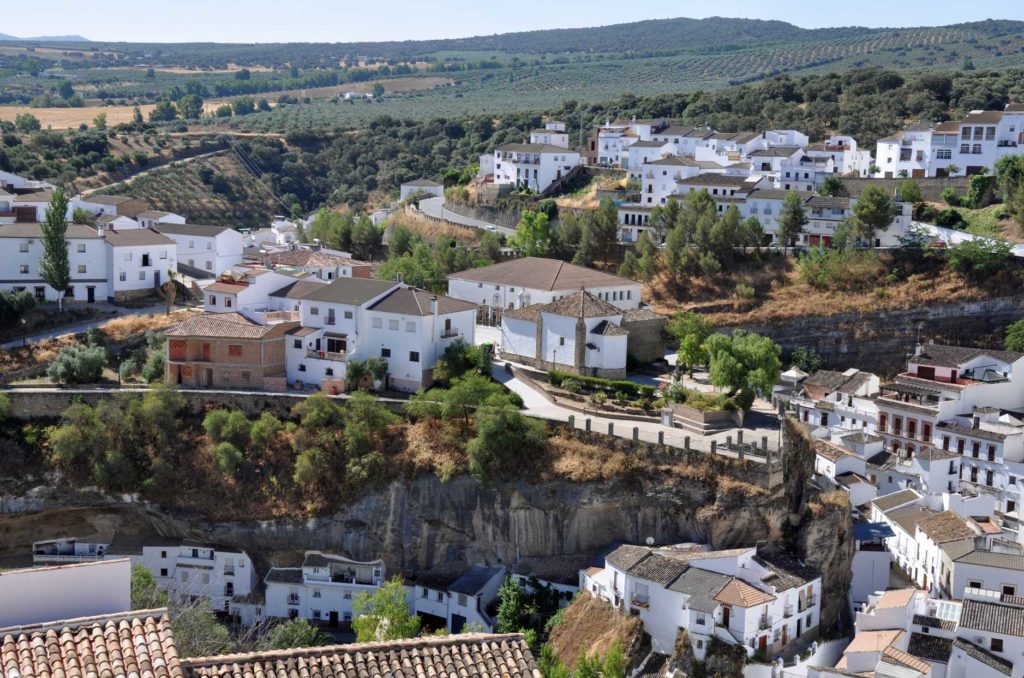
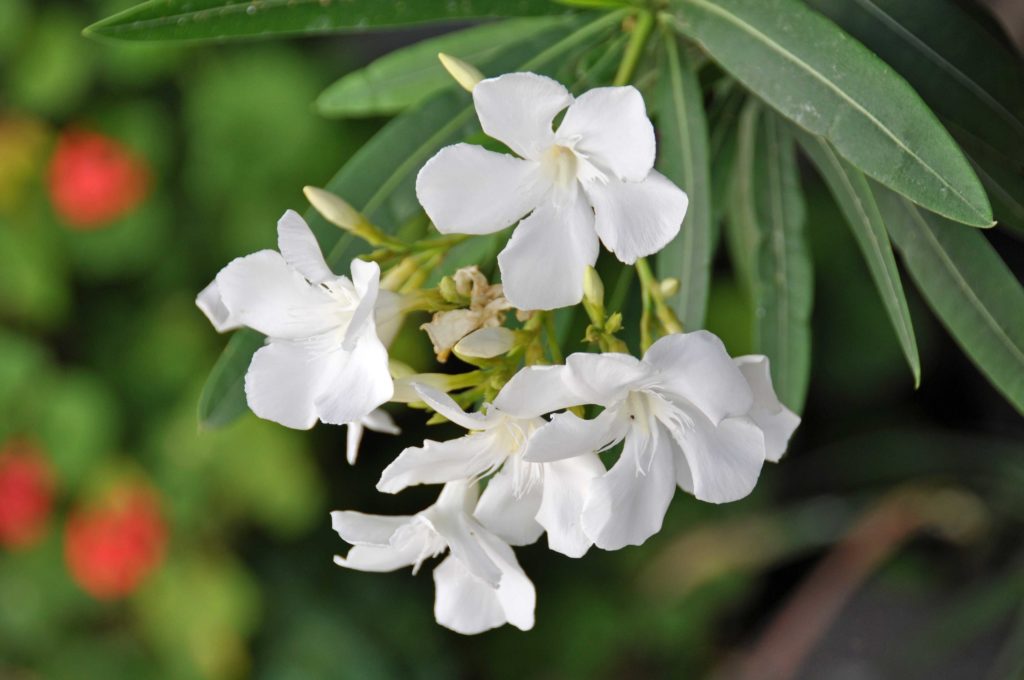
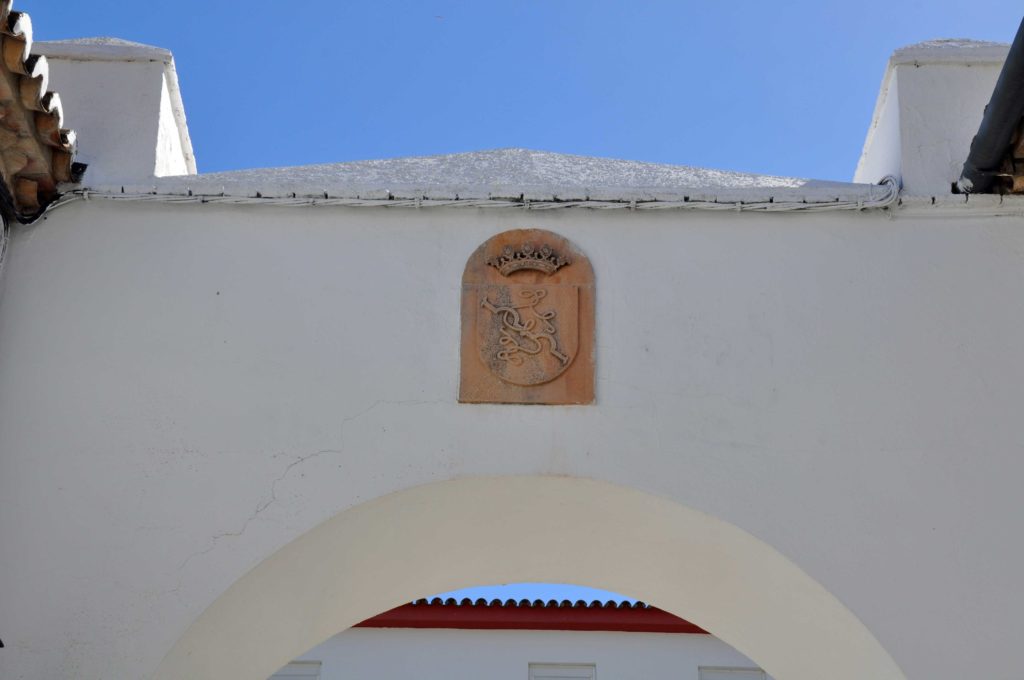 Relatively plain and cool (temperatures were hitting 40-45C midday) the church was a delight.
Relatively plain and cool (temperatures were hitting 40-45C midday) the church was a delight.
One couldn’t help feeling quite a few prayers to the madonna would be made trying to negotiate the narrow curves.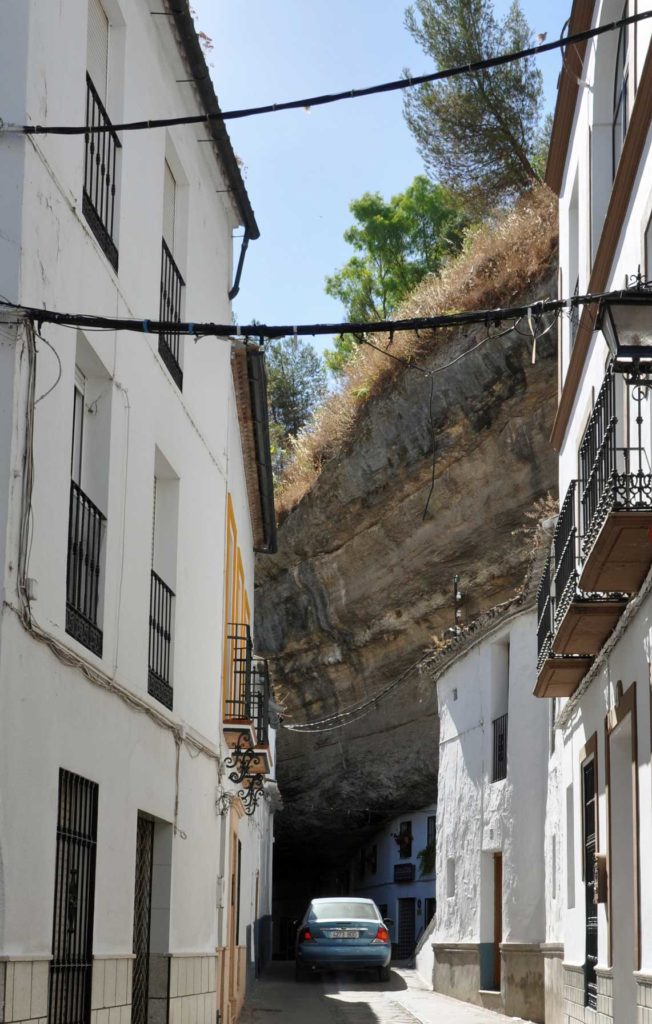 Our hearts went out to the cars we met walking back down the streets. Success or disaster – for me a great adventure!
Our hearts went out to the cars we met walking back down the streets. Success or disaster – for me a great adventure!
Seville
The Alcazar of Seville (Spanish “Reales Alcázares de Sevilla” or “Royal Alcazars of Seville” is a royal palace we visited in Seville, Spain originally developed by Moorish Muslim kings.
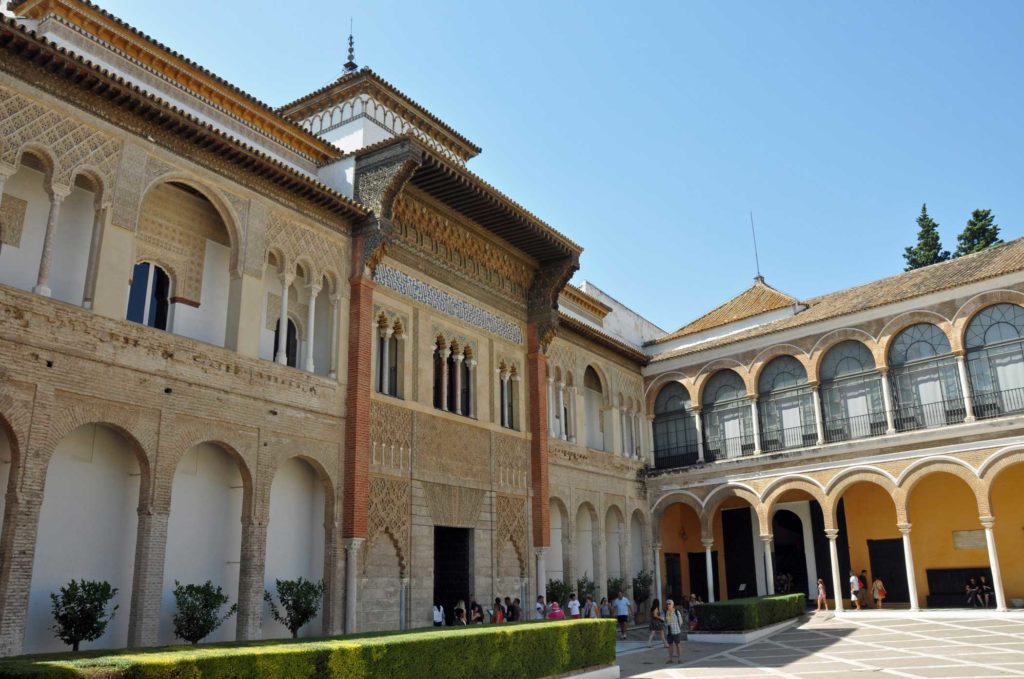
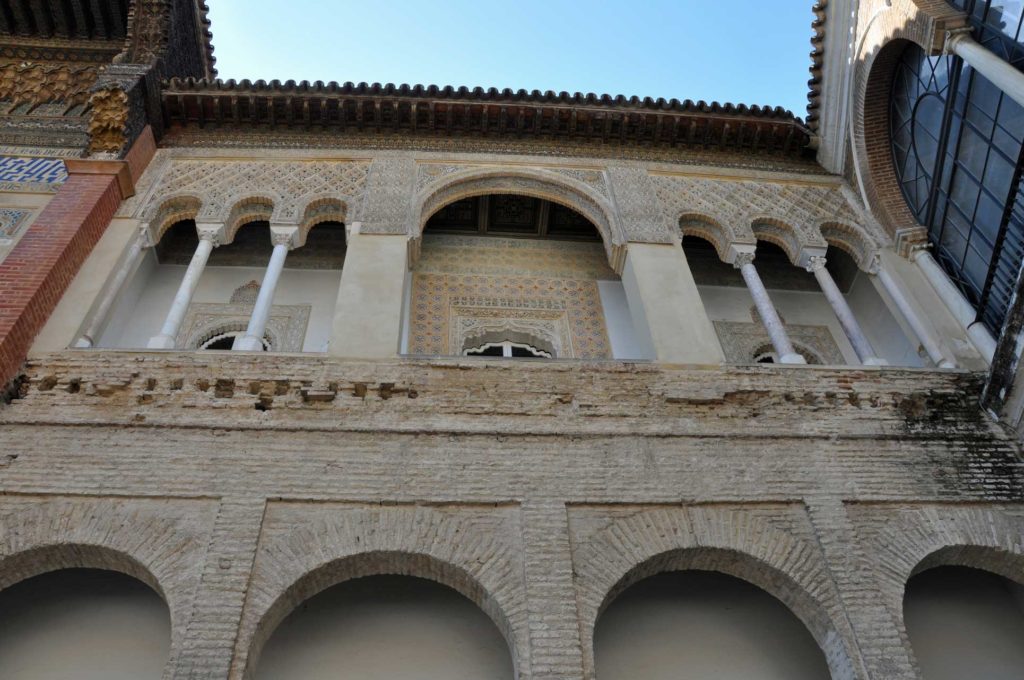
The palace is renowned as one of the most beautiful in Spain, being regarded as one of the most outstanding examples of mudejar architecture found on the Iberian Peninsula.
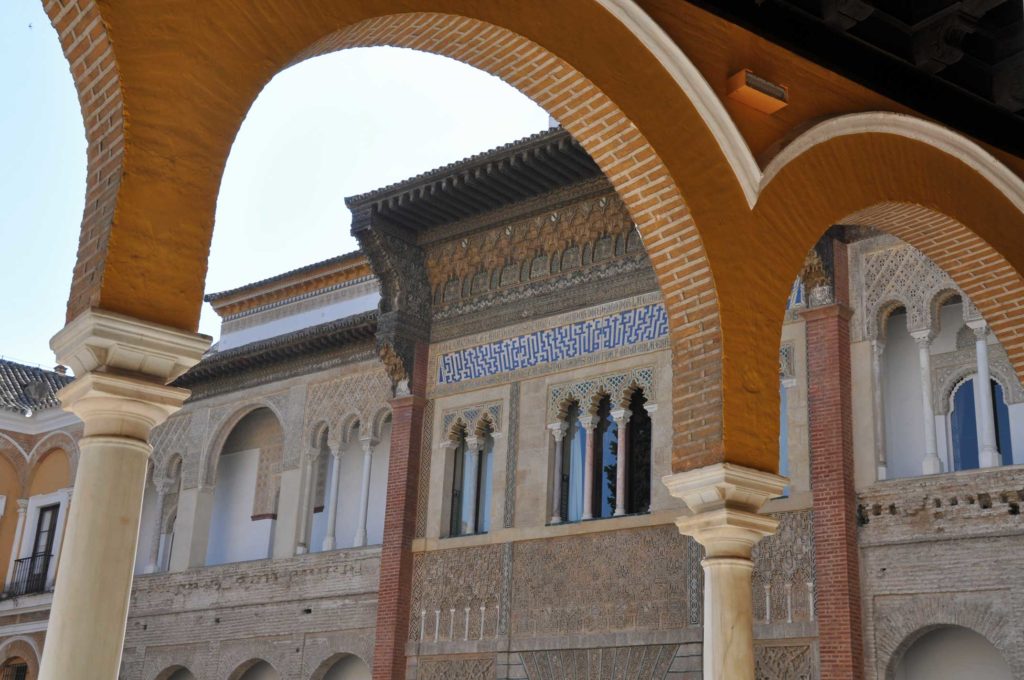
The upper levels of the Alcázar are still used by the royal family as the official Seville residence – it is the oldest royal palace still in use in Europe, and was registered in 1987 by UNESCO as a World Heritage Site.
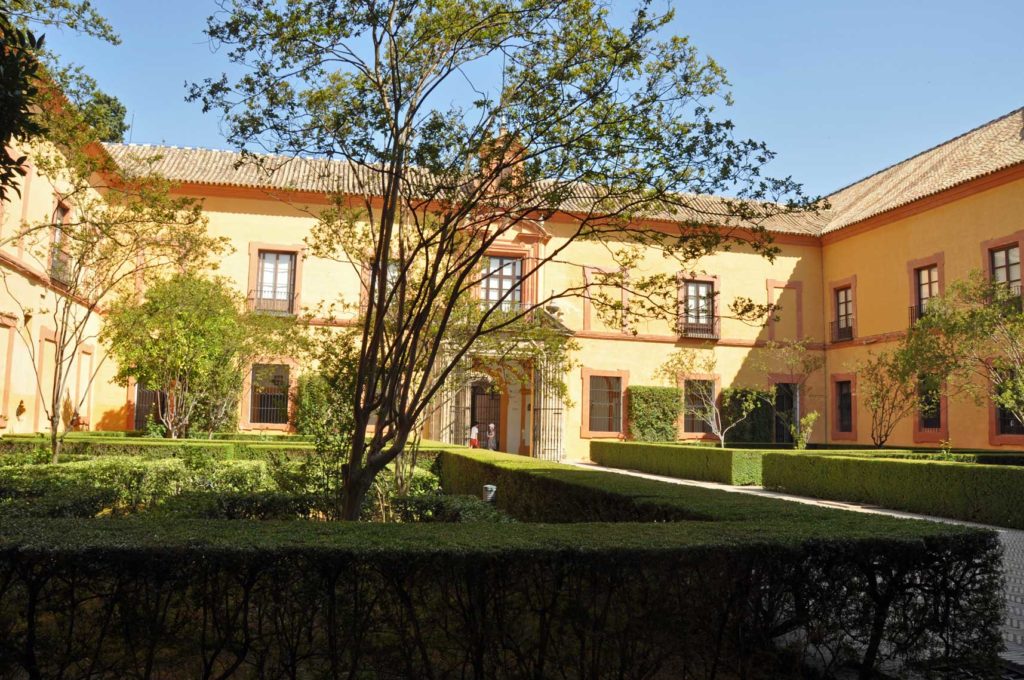
The kids were notably unimpressed, partly because of the heat (40-45C) and partly it seemed because the palace was well-maintained as compared to the rack and ruin often apparent at muslim palaces in India. Their decent upkeep told against them in the minds of my kids.
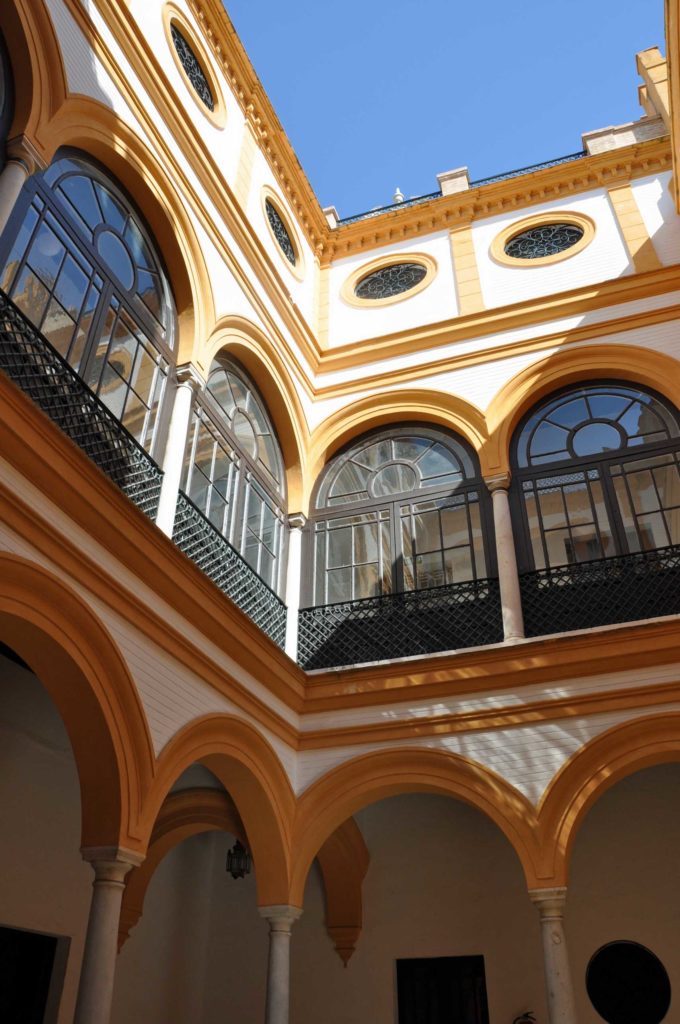
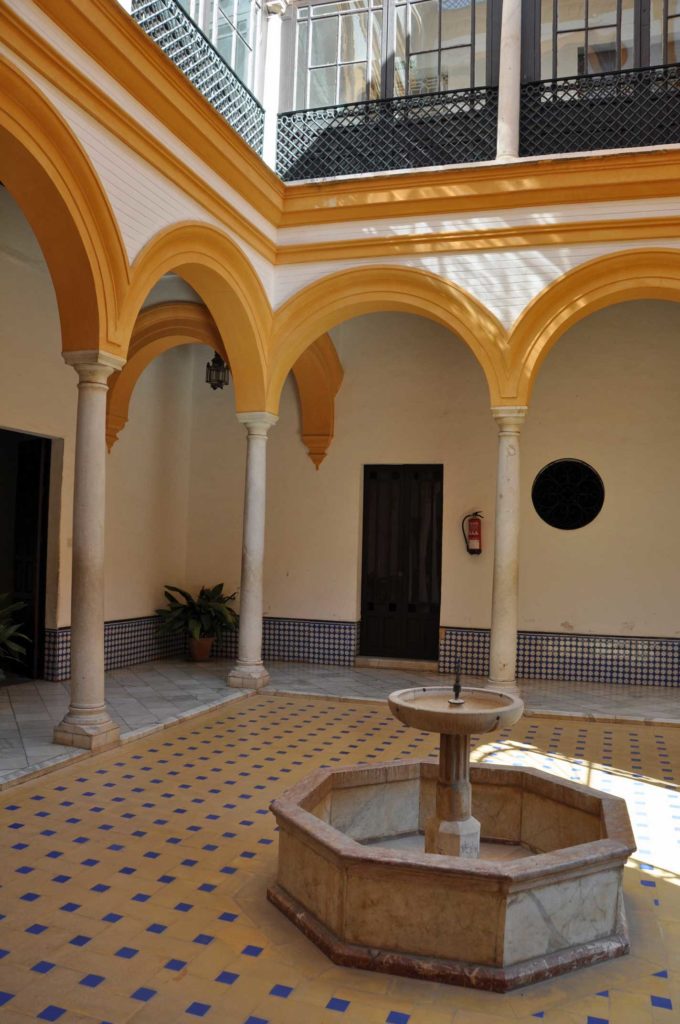
Still wandering around with a camera, it was definitely one of the most beautiful buildings that I’ve visited. It was a hugely impressive site and well-deserving of it’s UNESCO status.
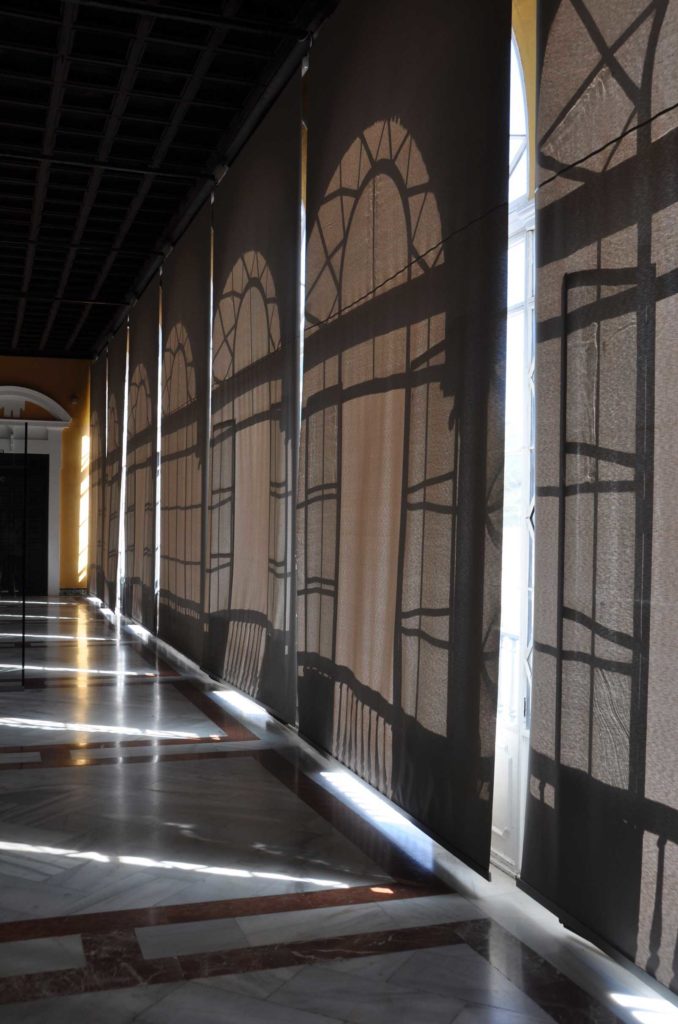
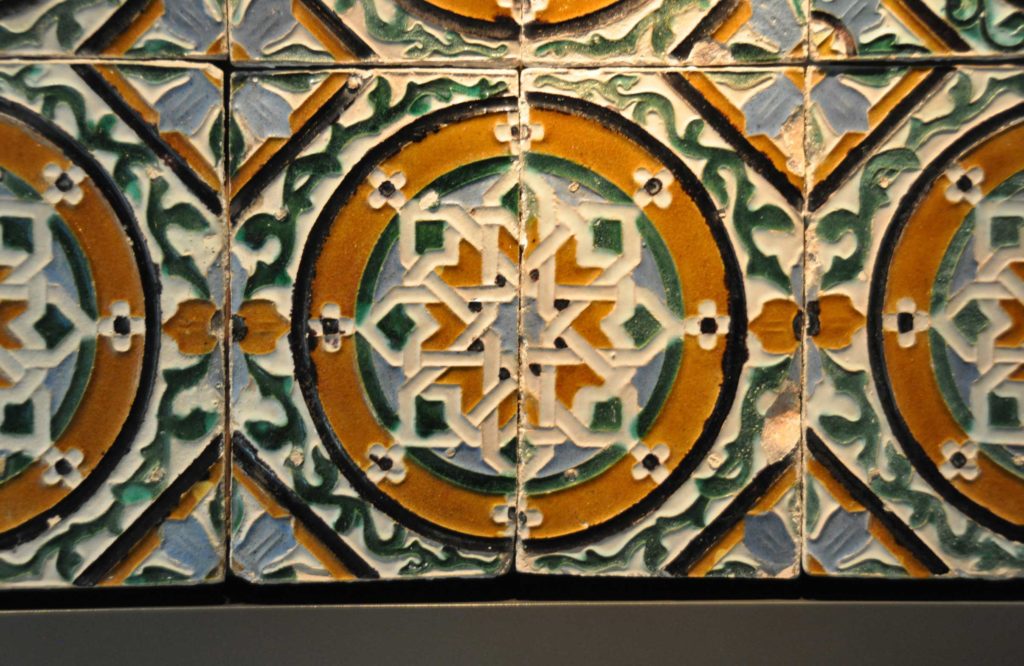
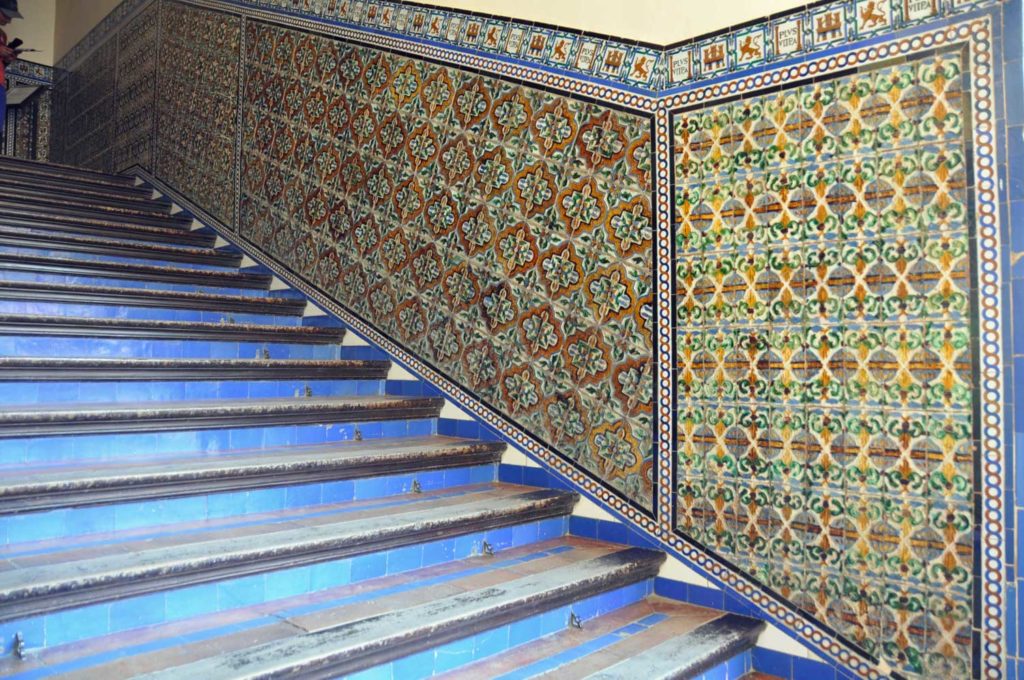

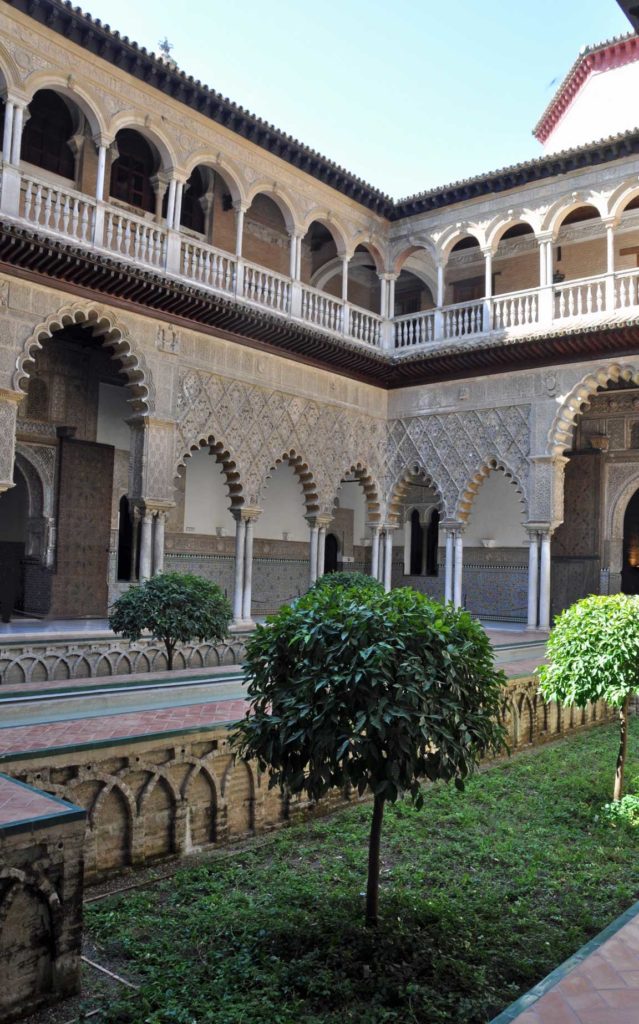
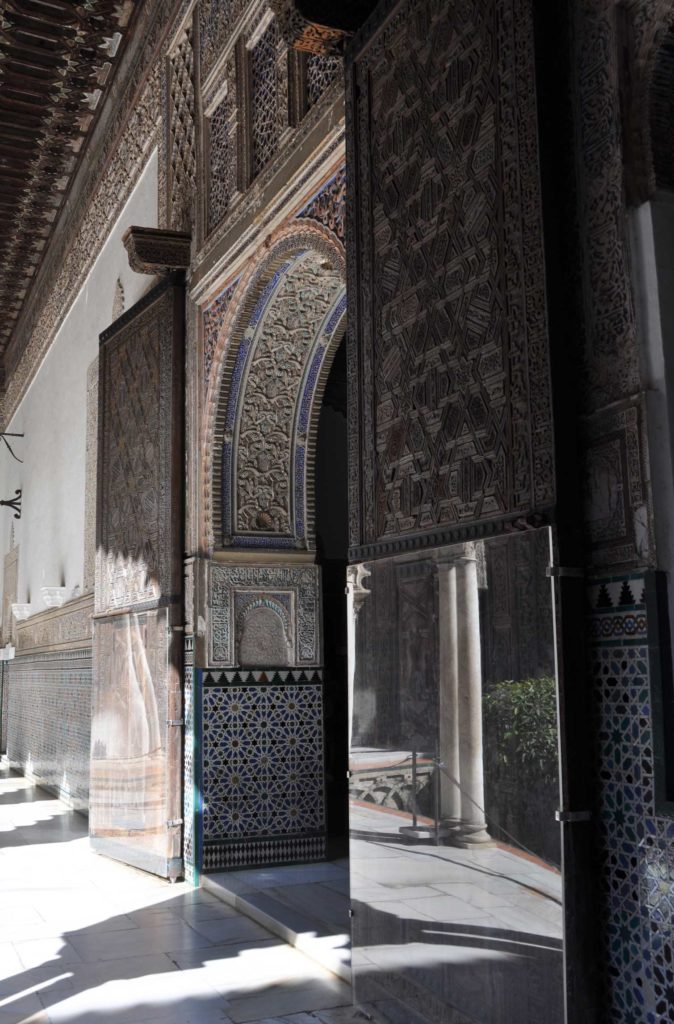
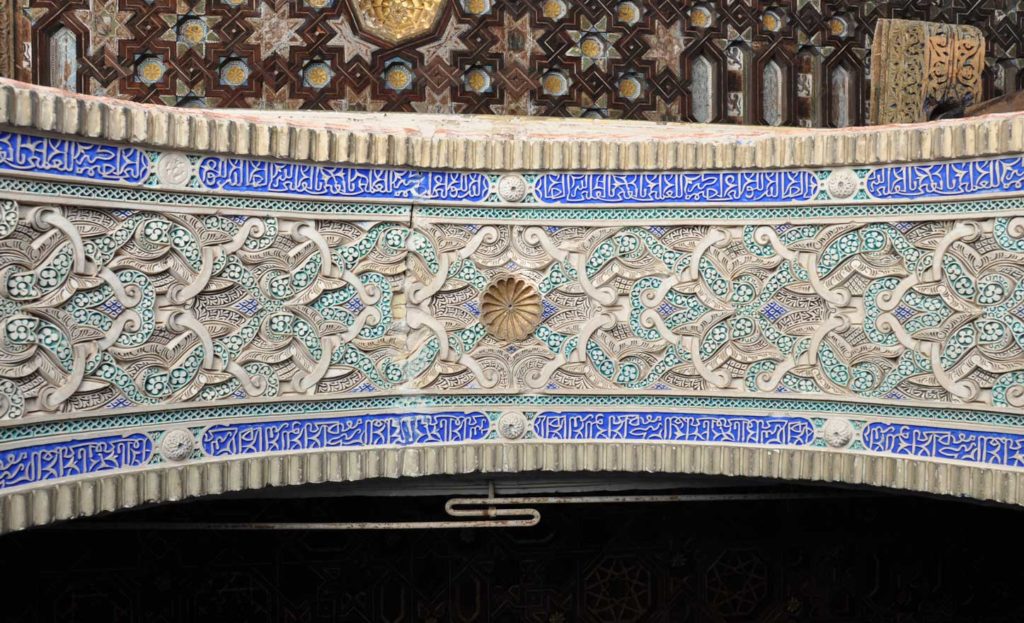
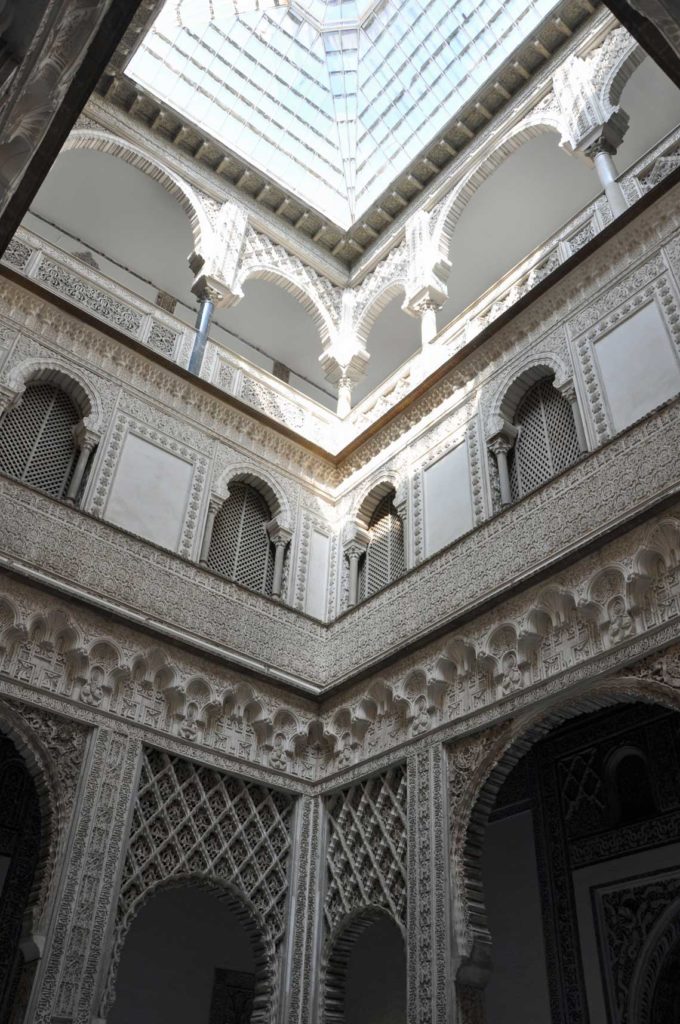
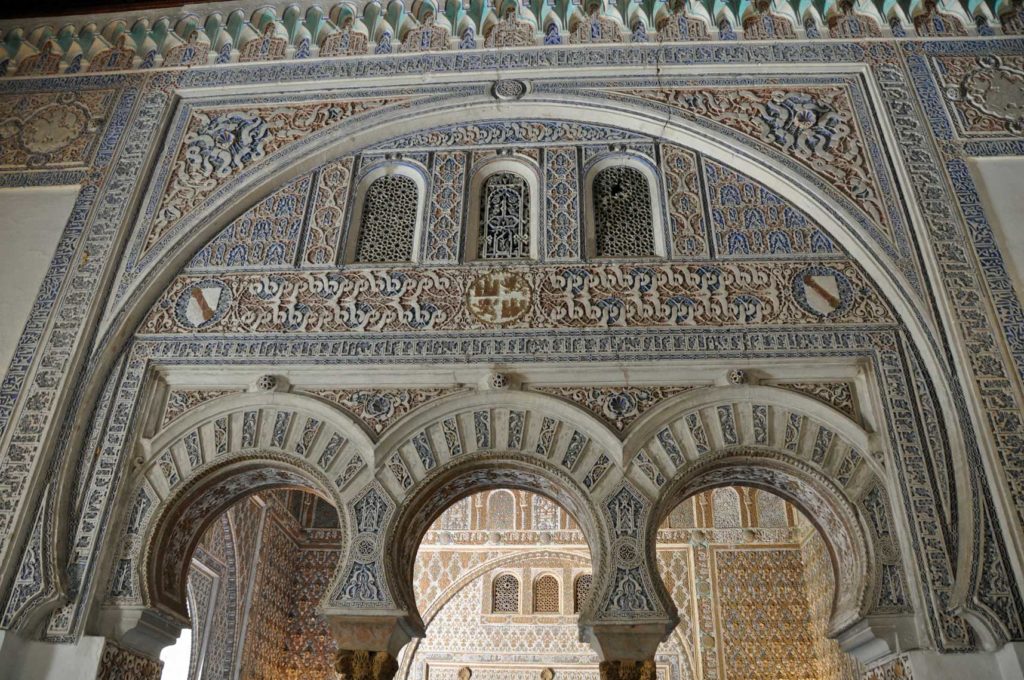
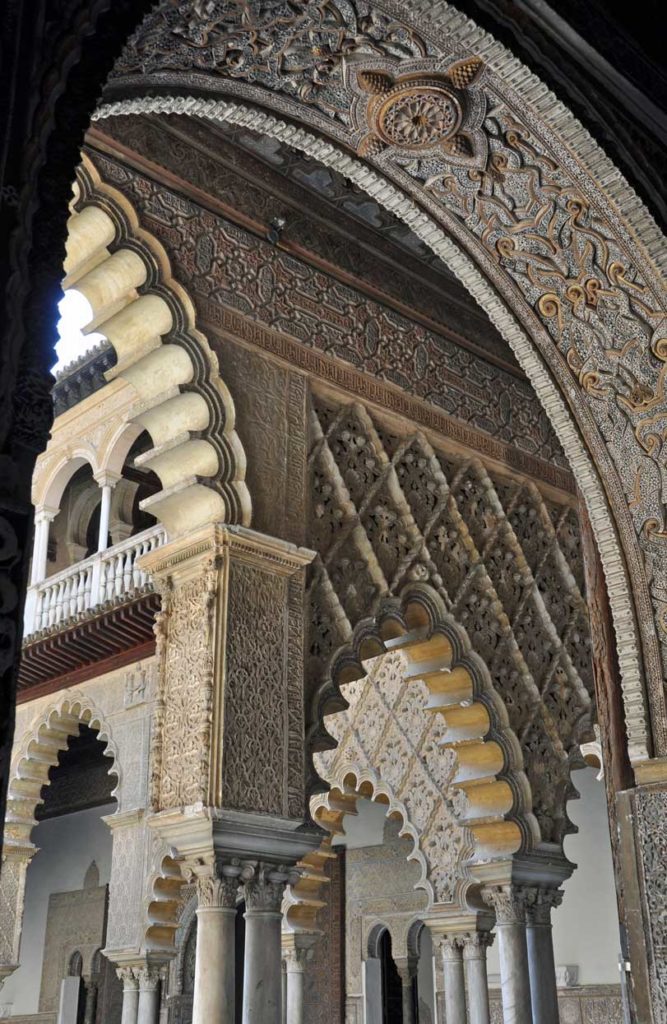
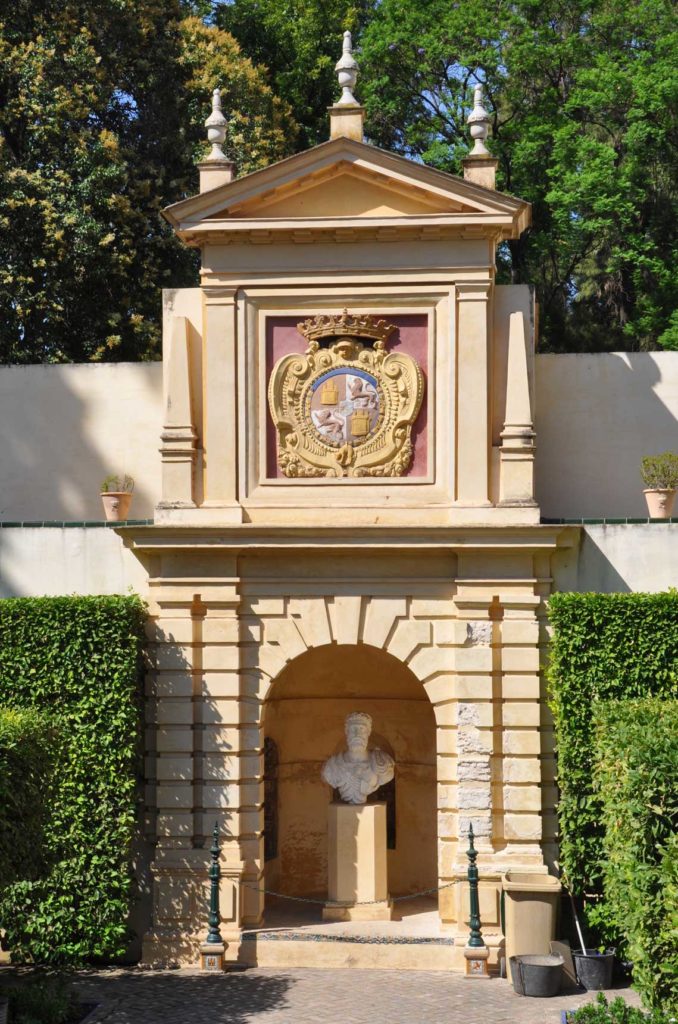
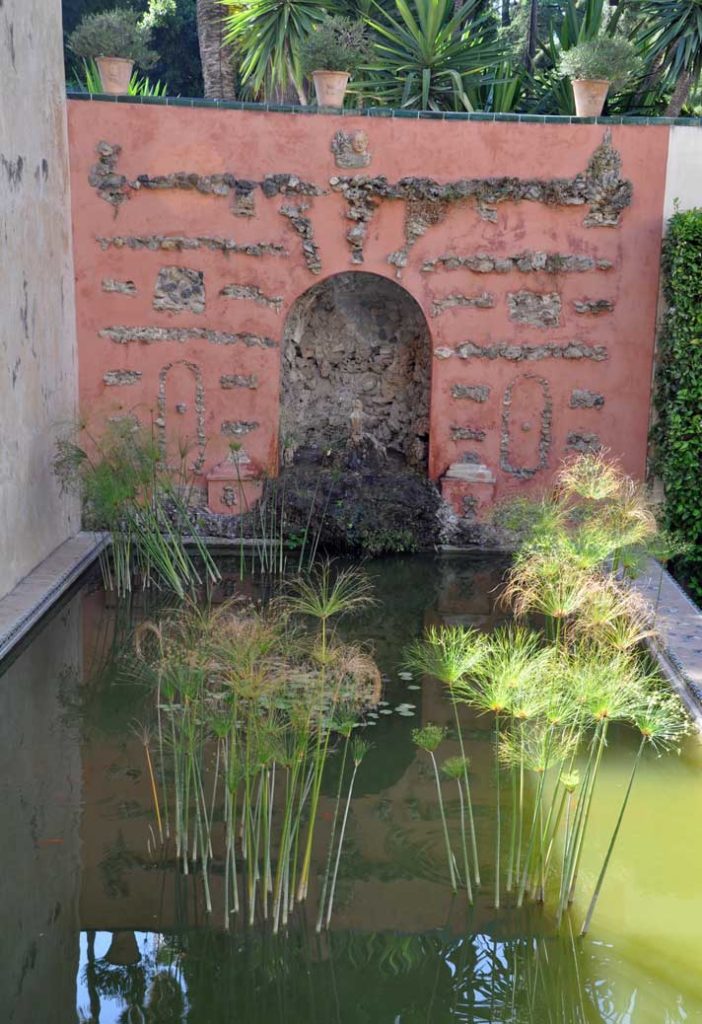
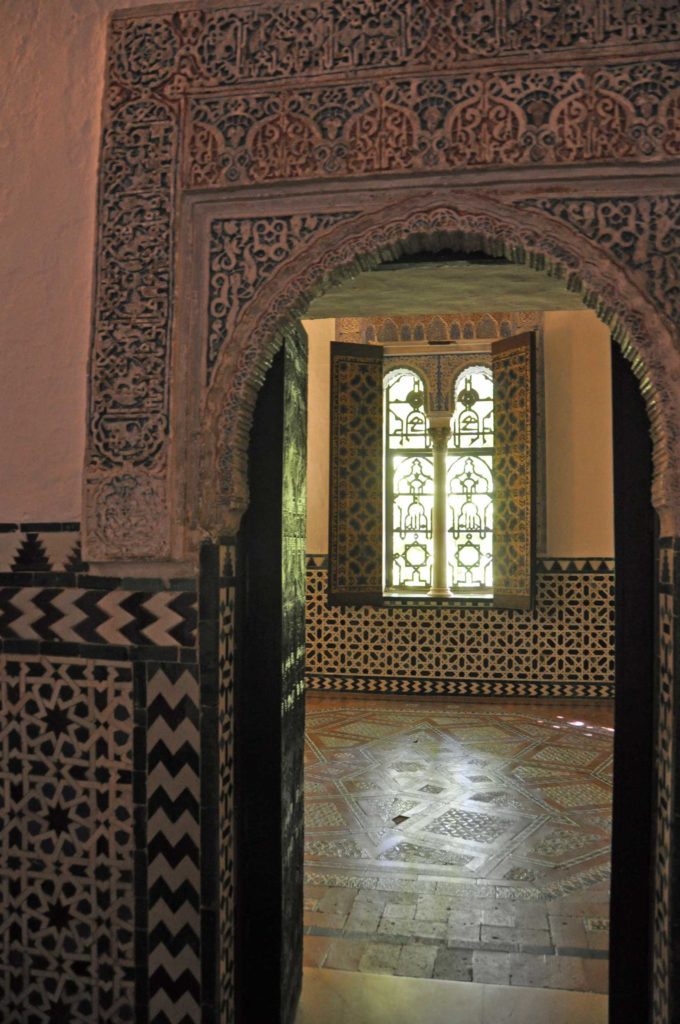
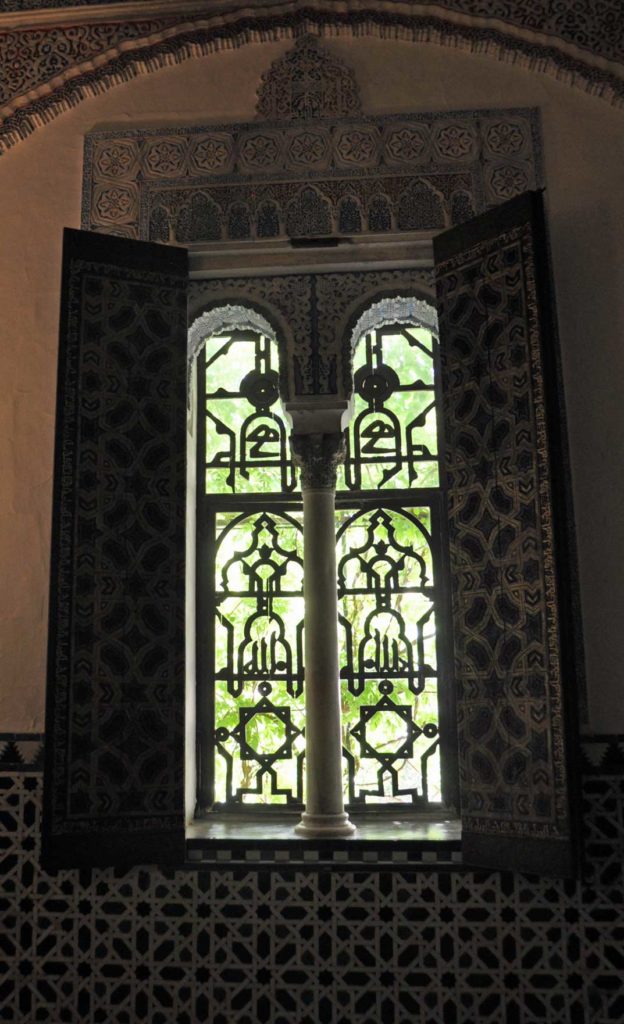
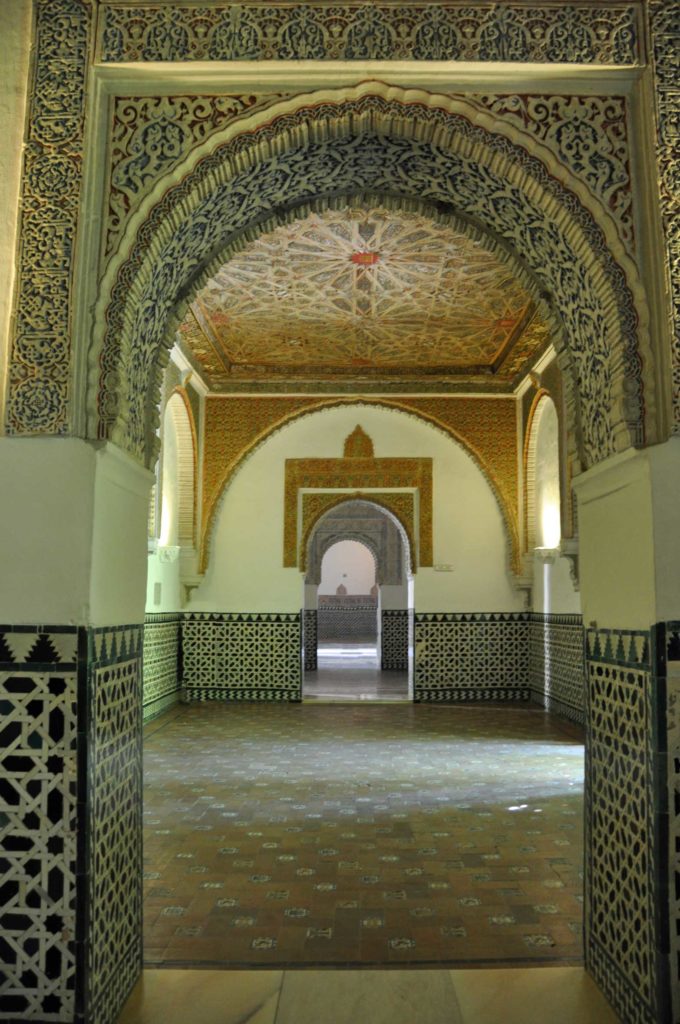
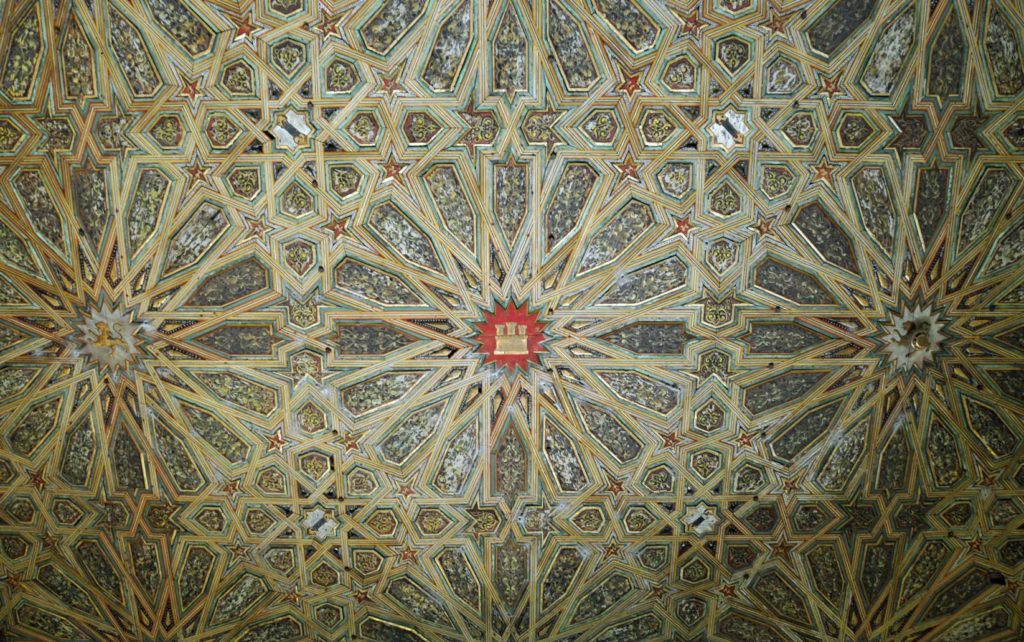
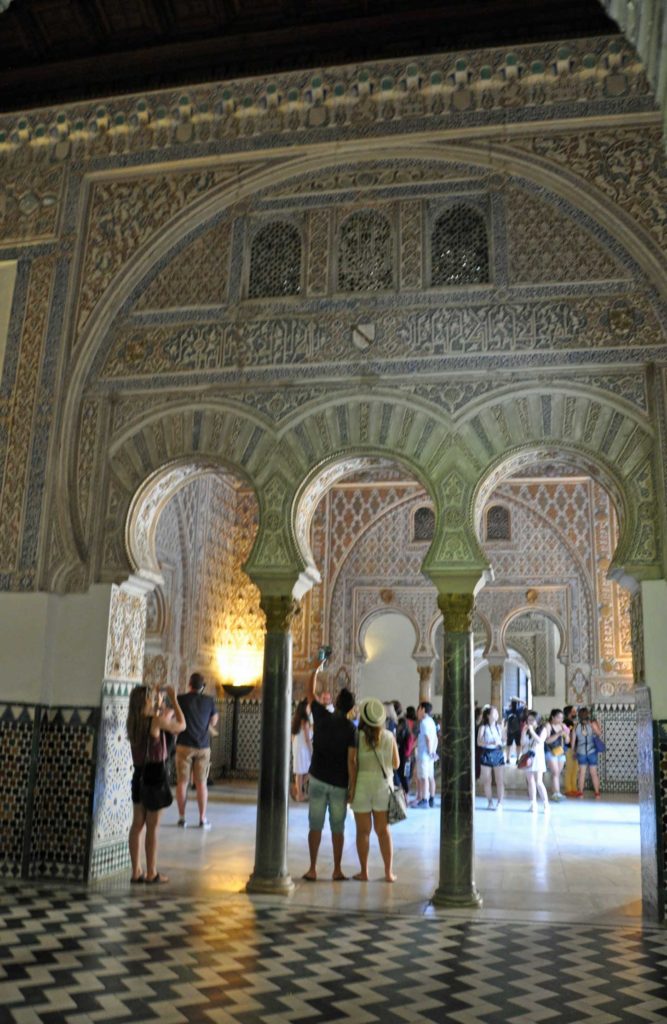
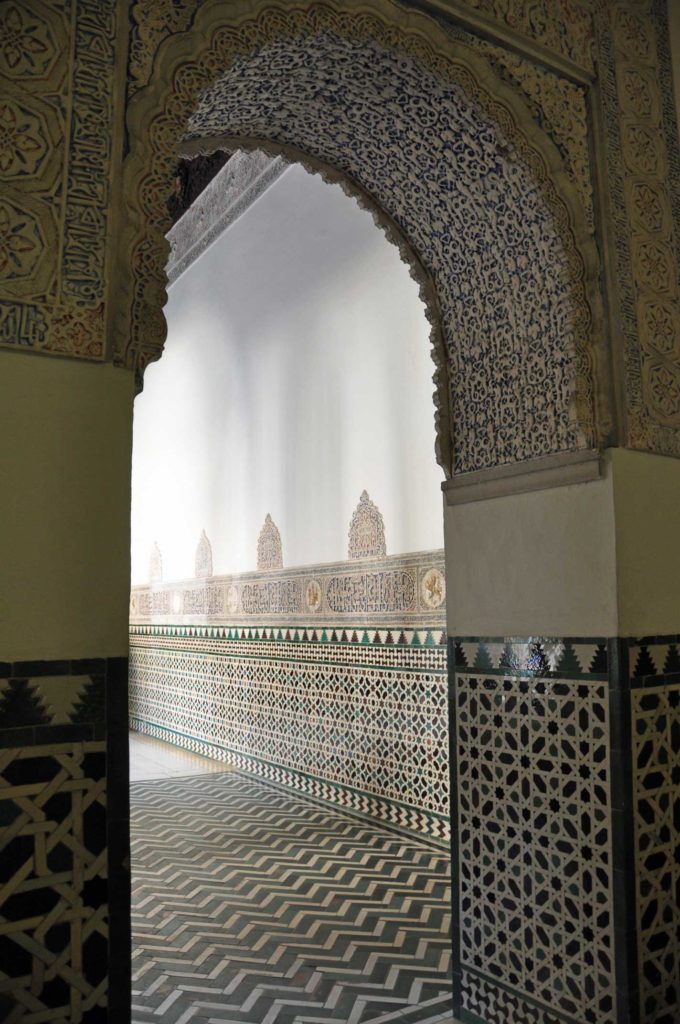
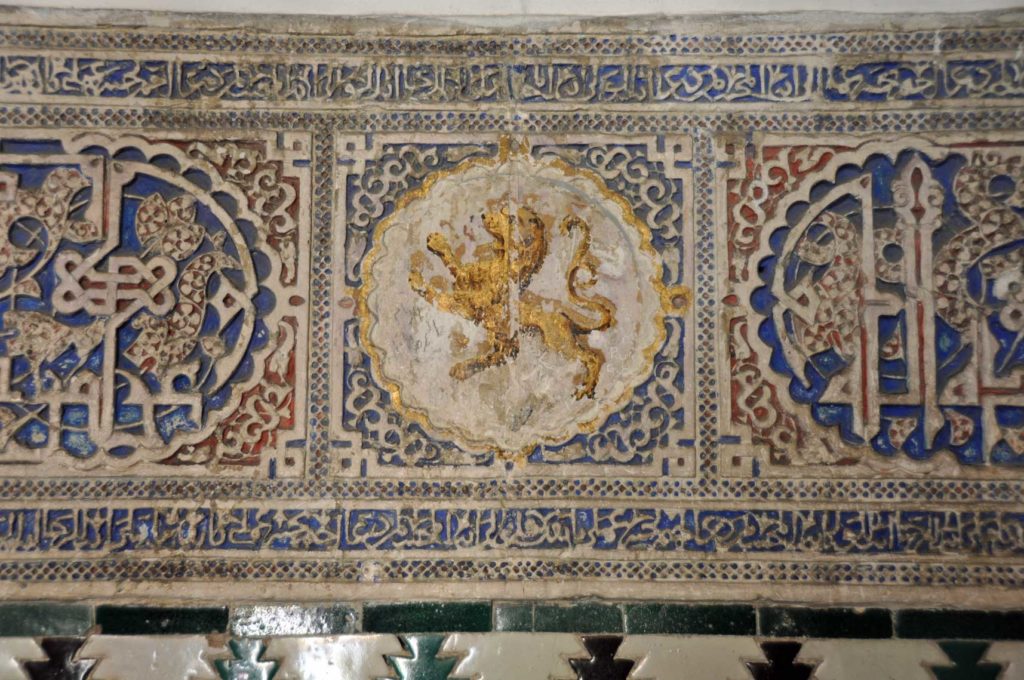
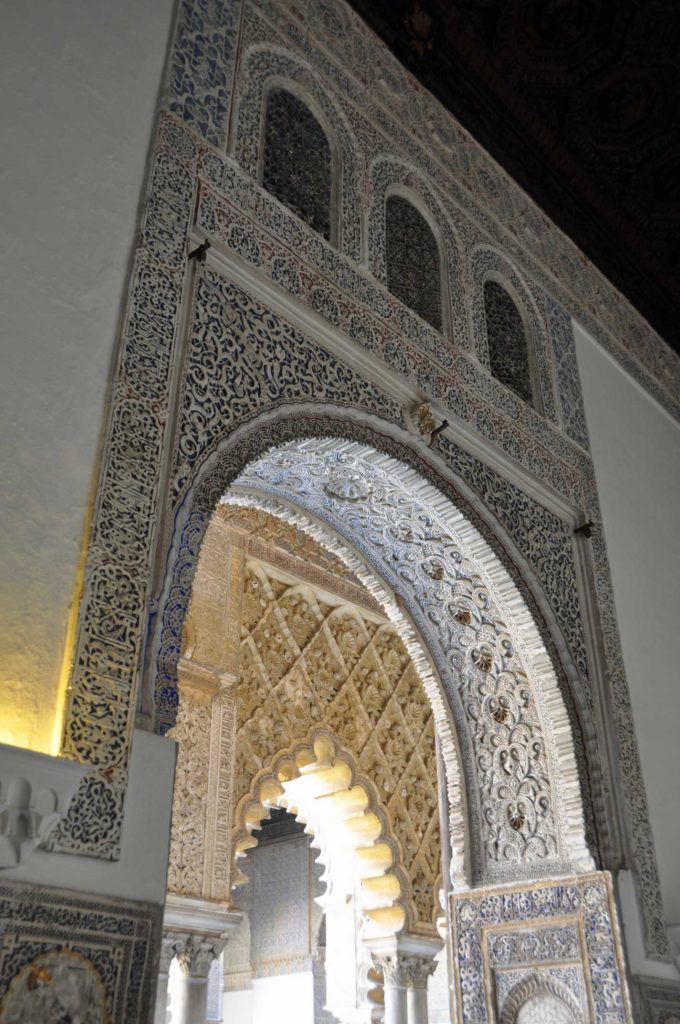
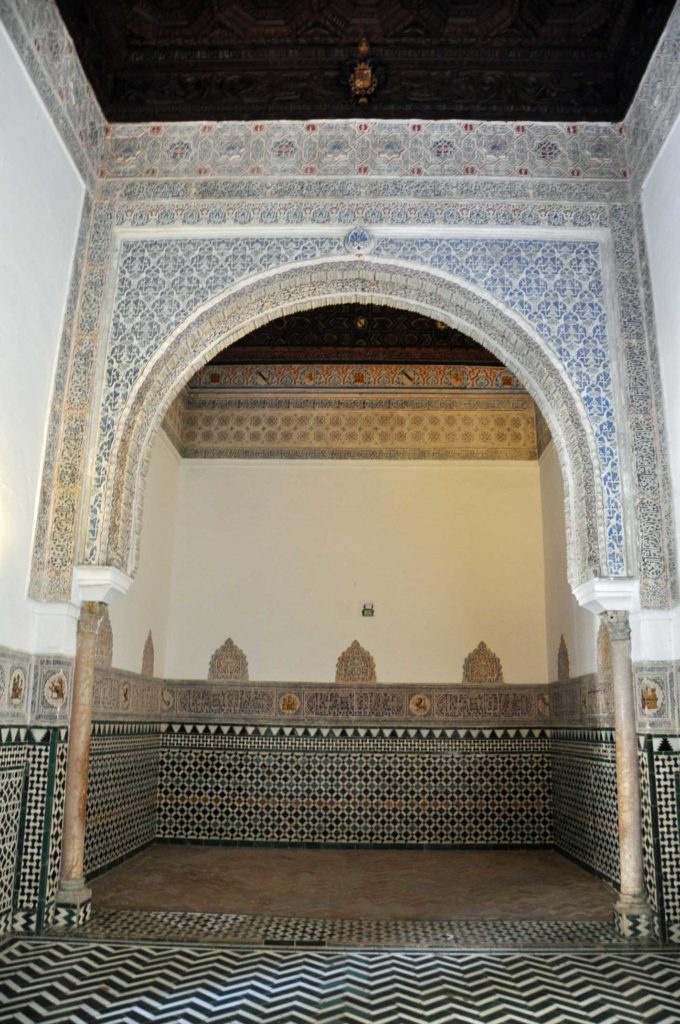
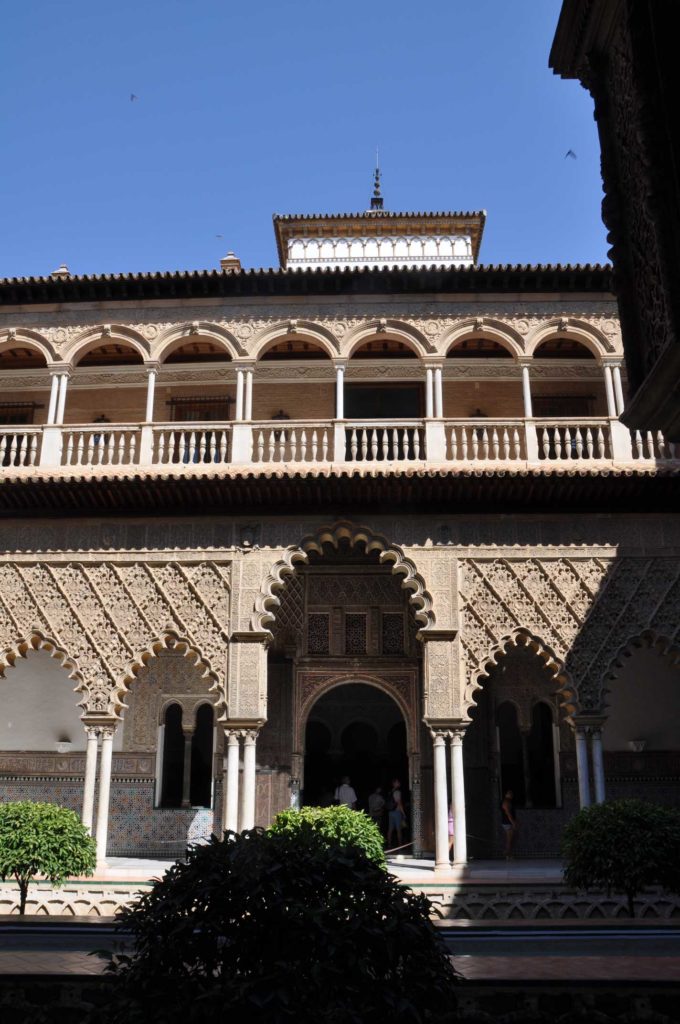
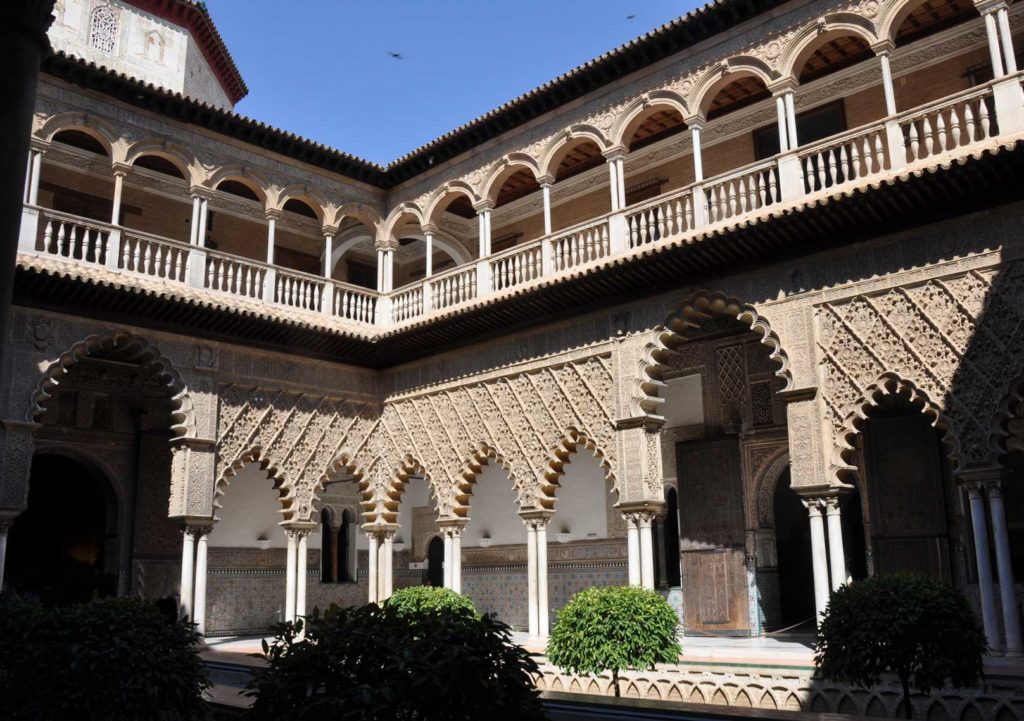
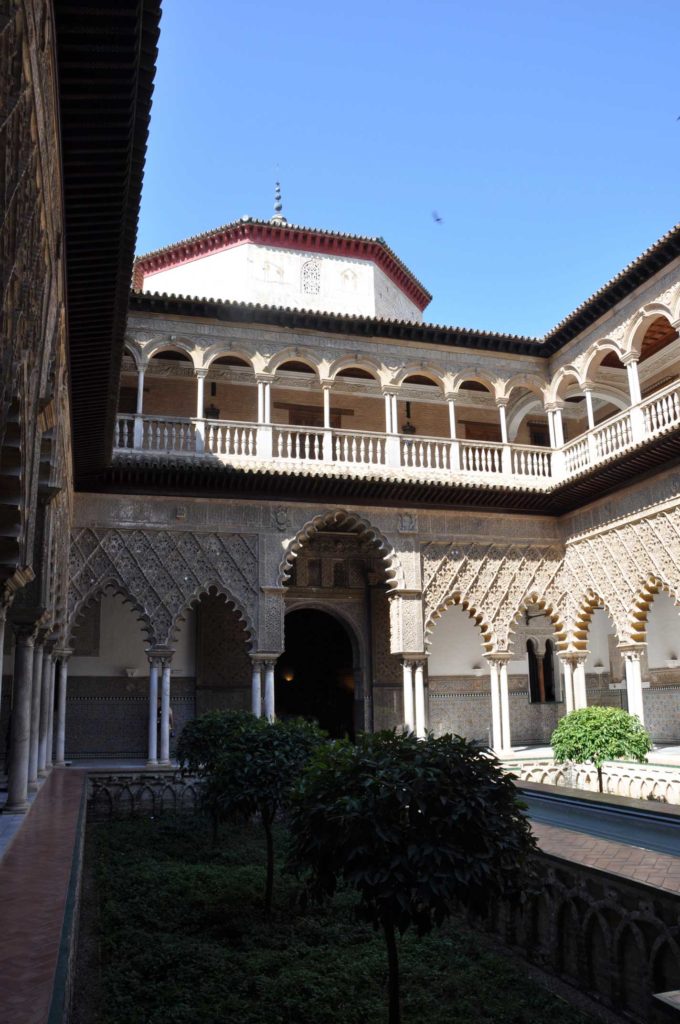
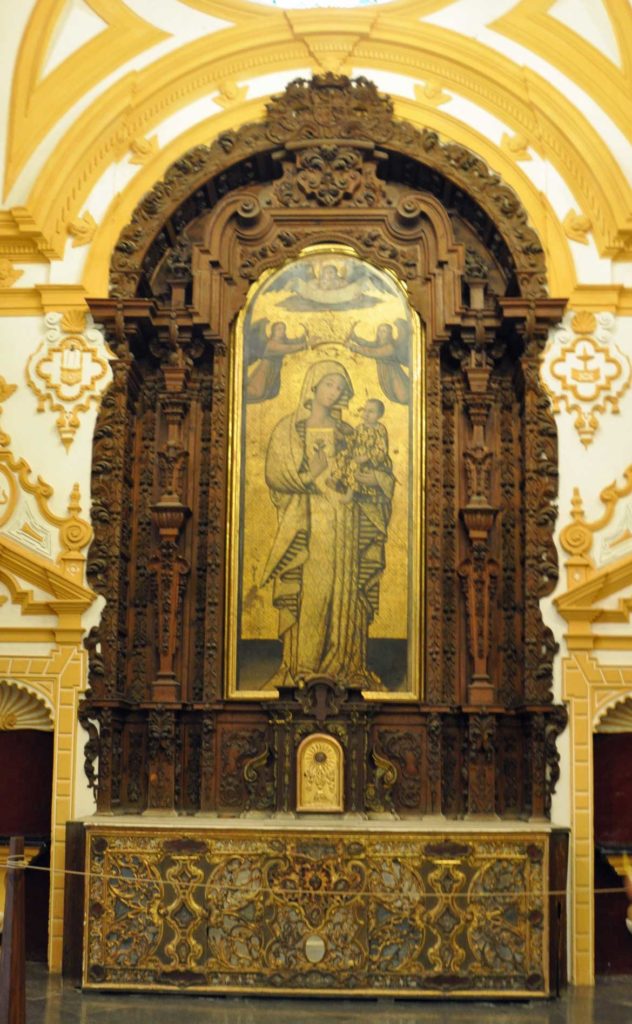

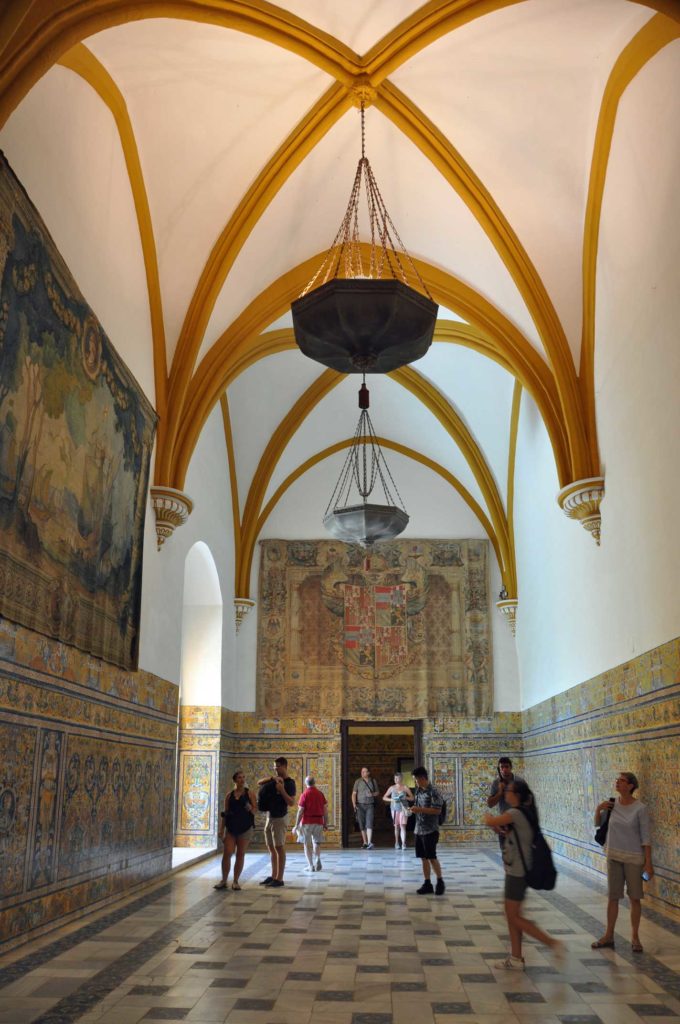
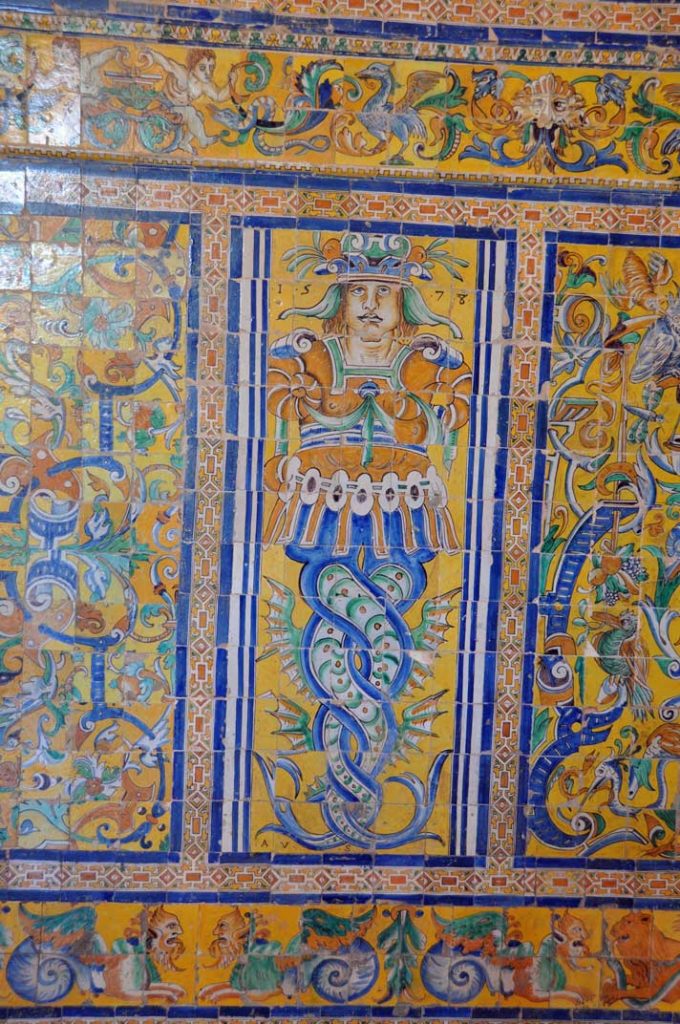
All the palaces of Andalusia had garden orchards with fruit trees, horticultural produce and a wide variety of fragrant flowers. The garden-orchards not only supplied food for the palace residents but had the aesthetic function of bringing pleasure. Water was ever present in the form of irrigation channels, runnels, jets, ponds and pools.
The gardens adjoining the Alcázar of Seville have undergone many changes. In the 16th century during the reign of Philip III the Italian designer Vermondo Resta introduced the Italian Mannerist style. Resta was responsible for the Galeria de Grutesco (Grotto Gallery) transforming the old Muslim wall into a loggia from which to admire the view of the palace gardens
It’s hot in Seville, rising to 40C we were glad to find shades across the streets.
In the middle of the day, people would walk from side to side trying to eke out the meagrely shade available.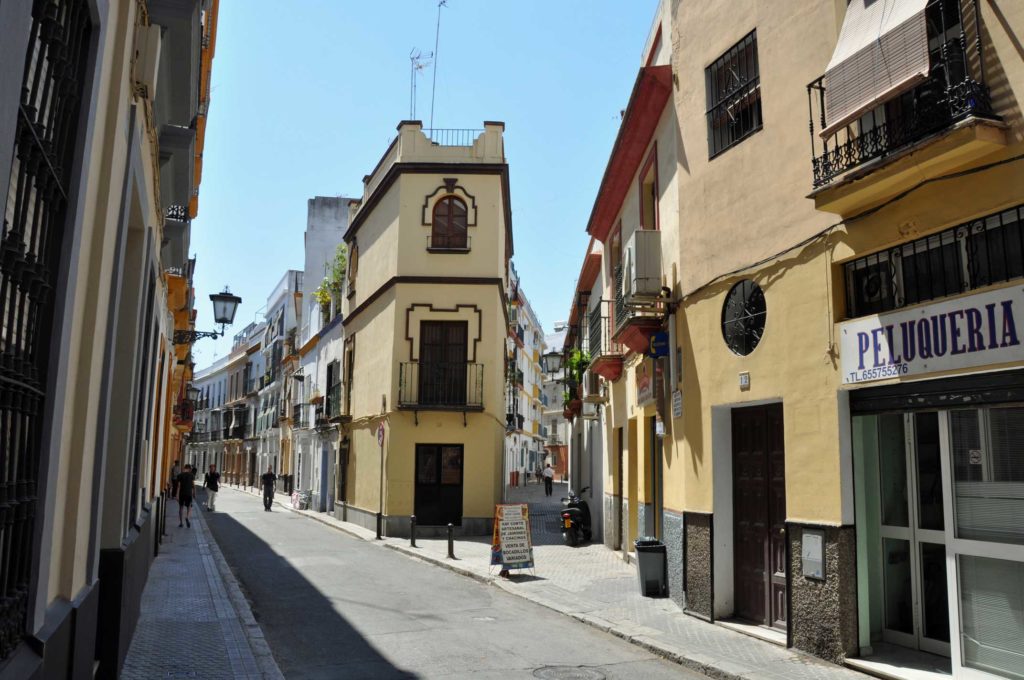
We made it through the older streets Las Ramblas, with it’s Jewish quarter, no longer any Jewish population to speak of.
But the views into small courtyards were lovely, plus the horse carriage rides were very picturesque.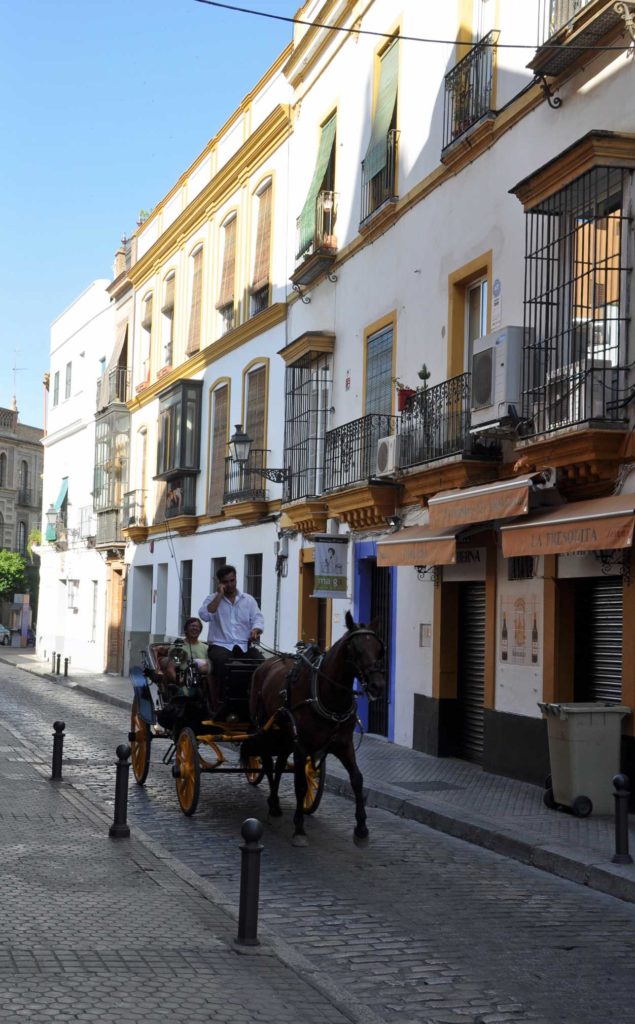
Also lots of small bars, usually decorated with bulls heads from the local arena.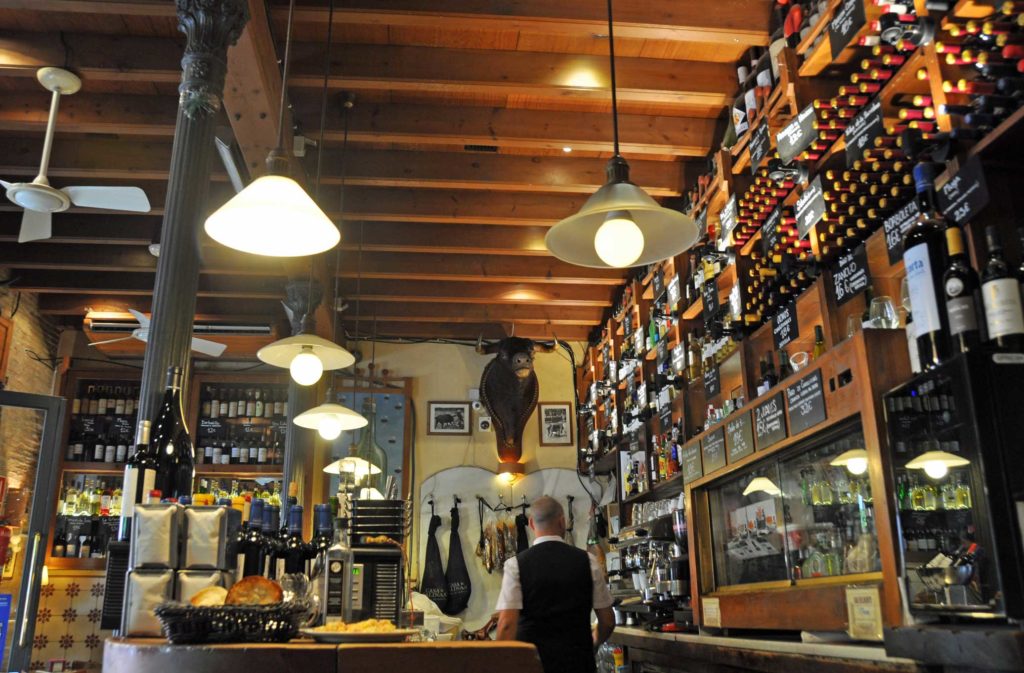
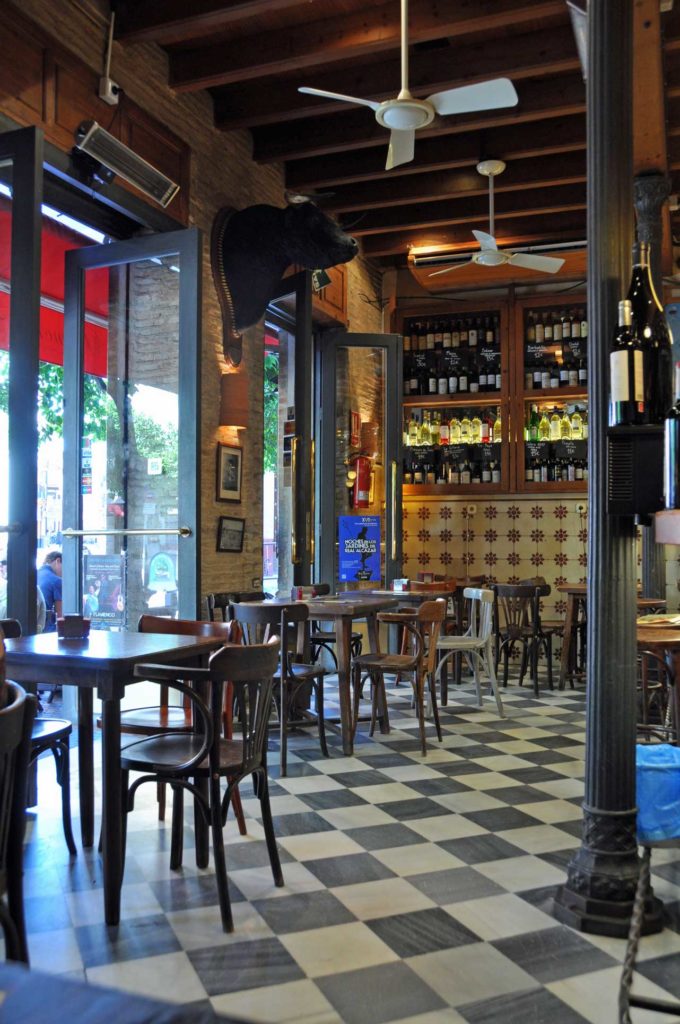
The cathedral was astonishingly large, yet surprisingly difficult to find a decent view once inside since the church had made great efforts to break down the church into more workable, human shape.
Attached to the cathedral is the minaret from the original mosque, which can be climbed (mostly ramp rather than stairs) to give really good views of the smallish city.
But the first thing you see on the way in is a statue of Joseph holding Jesus, and then you suddenly realise how rare images of Jesus with His earthly father really are.
The gruesome art included a severed head of John the Baptist, which neatly introduced us to the Spanish gothic gore and drama.
Amongst the grandeur of the arches are innumerable altars, some modest, some covered in gilt.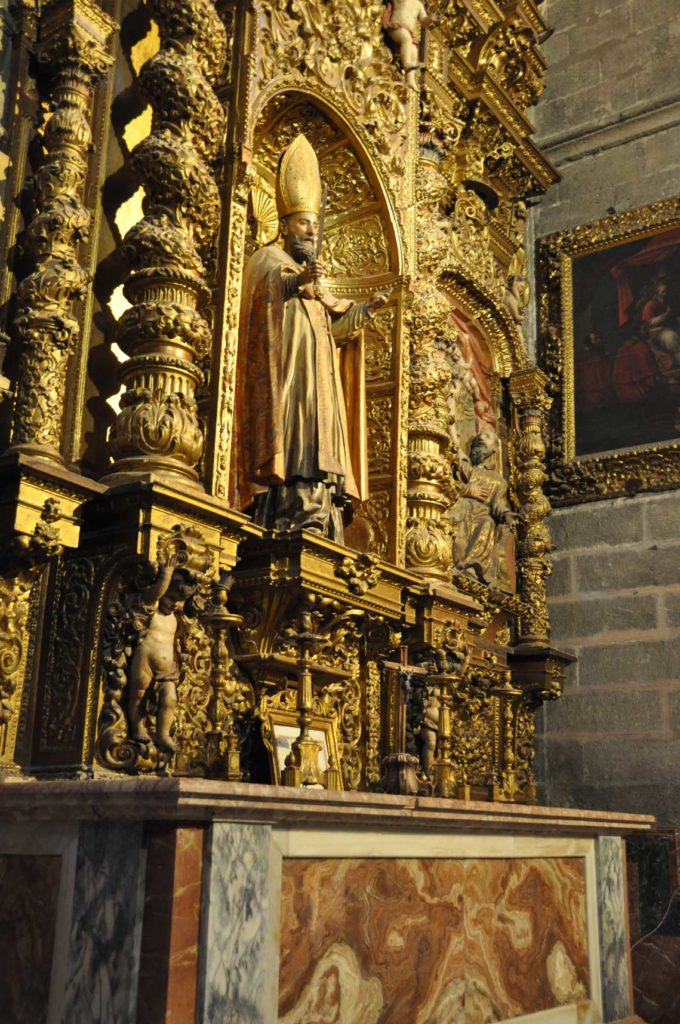
Some open and some closed away.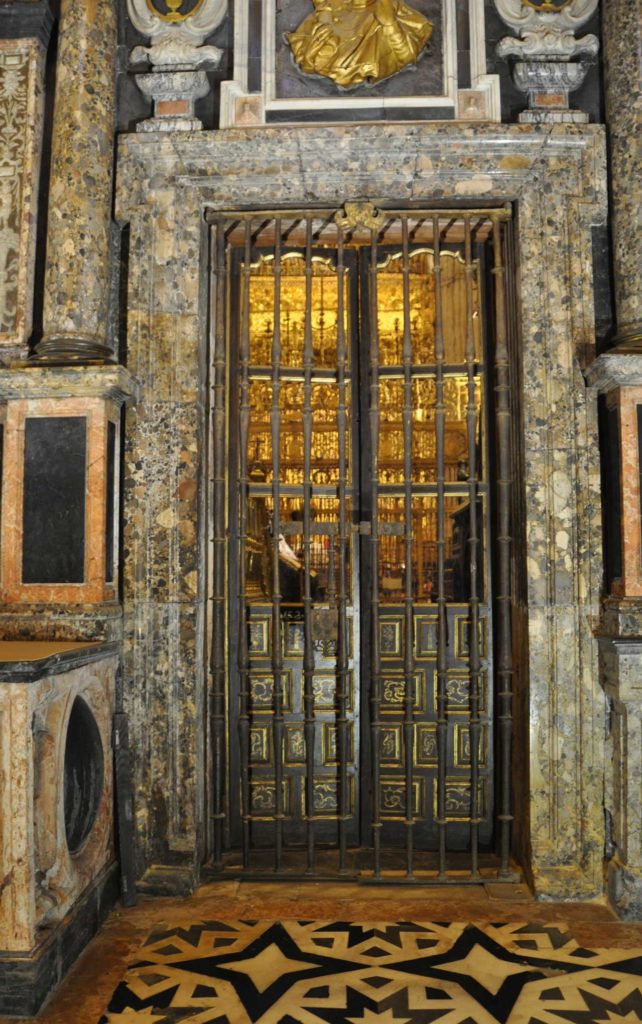
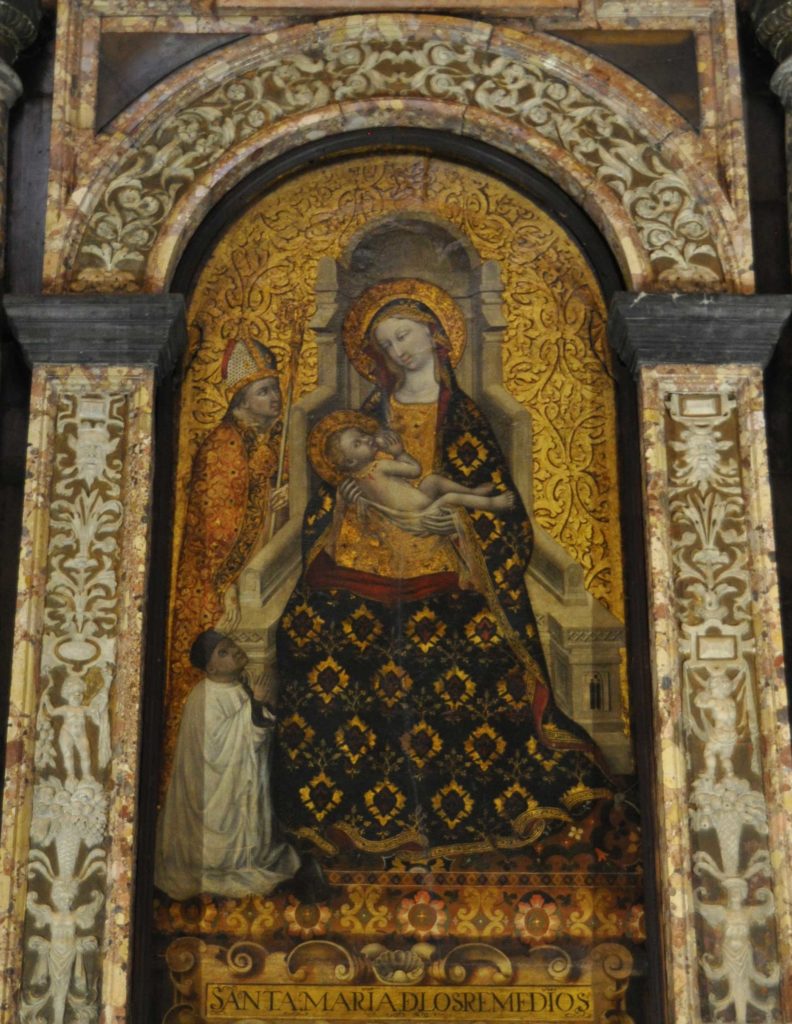
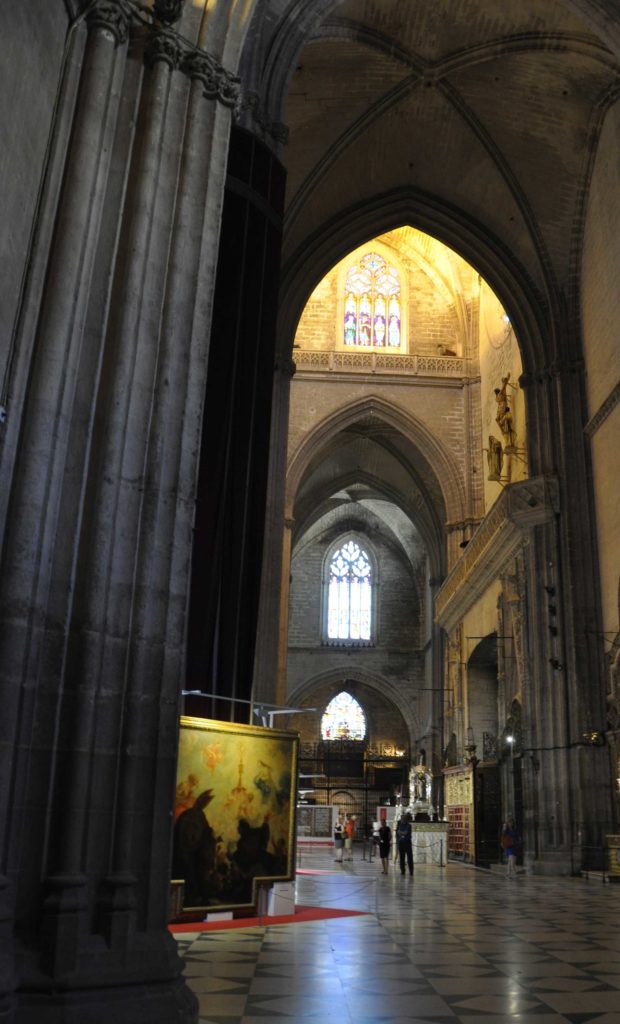
The glass was rather plain compared to the internal decoration.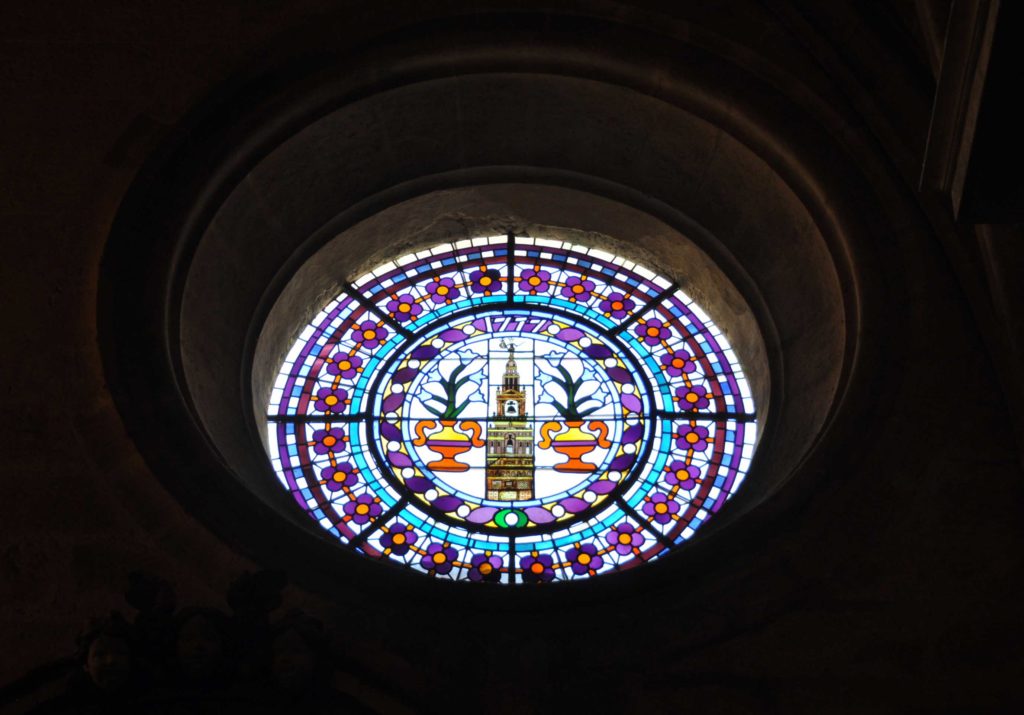
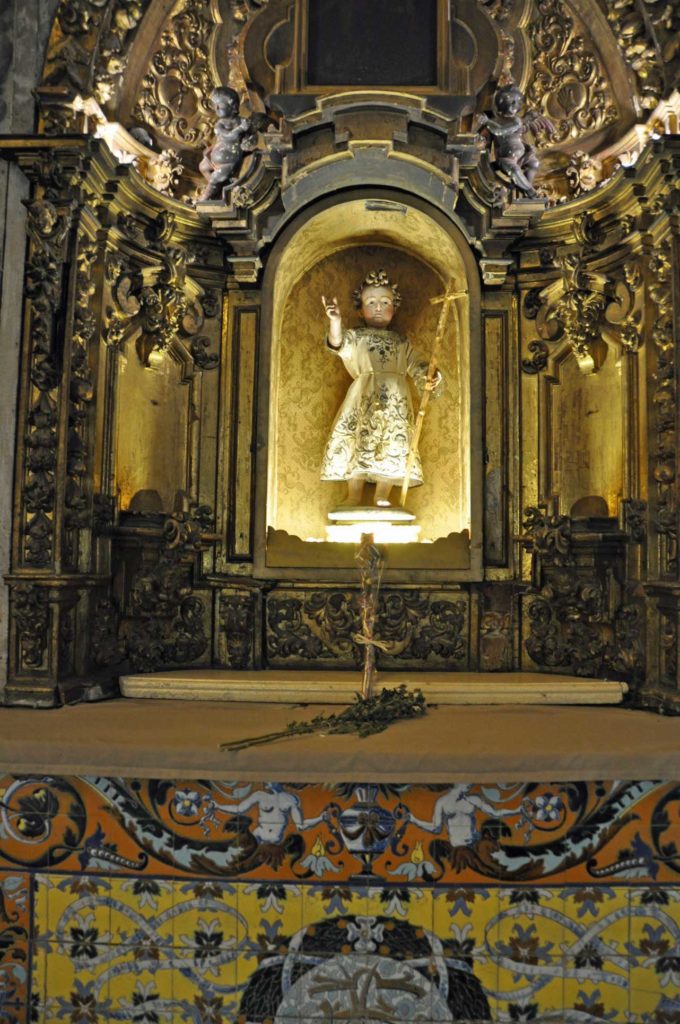
A display of church memorabilia was positioned at th beginning of the nave, interfering with the longest view thought the choir stalls to the main altar.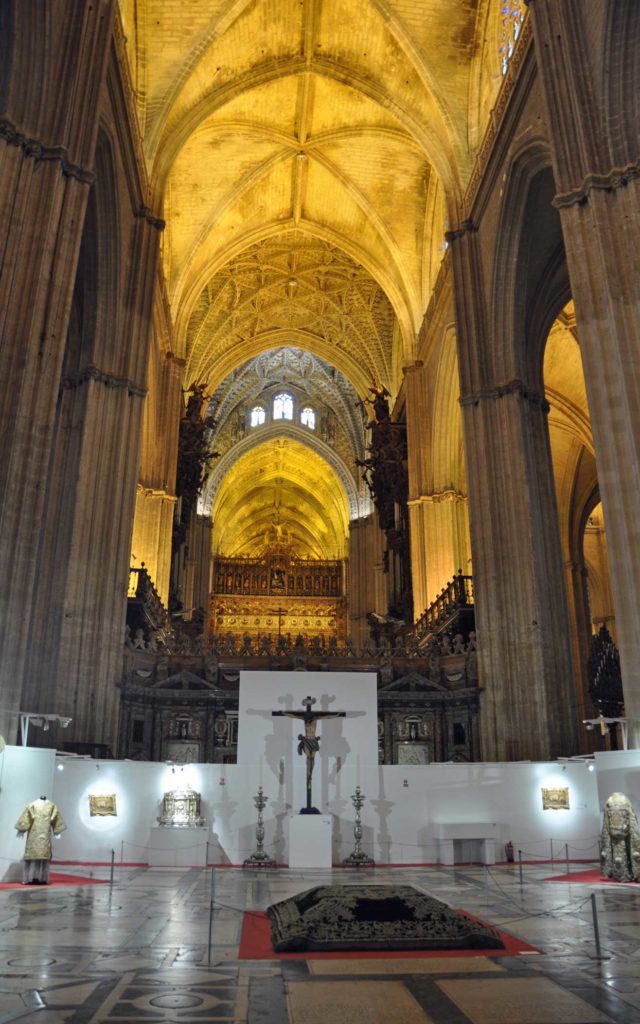
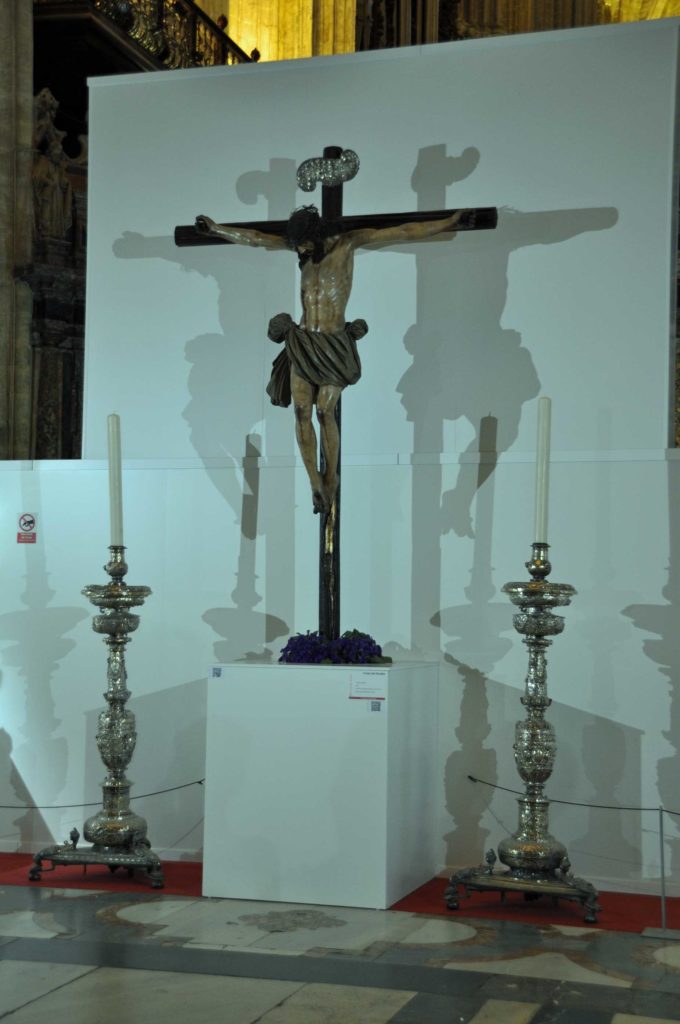

Picturesque in it’s way, but it made it difficult to gain a sense of the grandeur of the church when built, when it would have been gloriously unfurnished.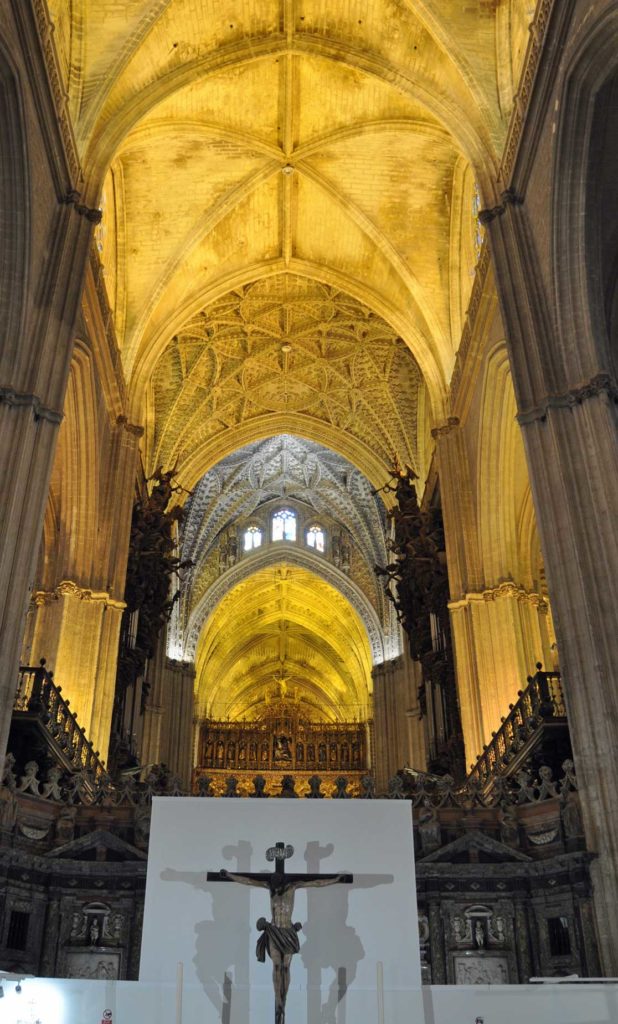
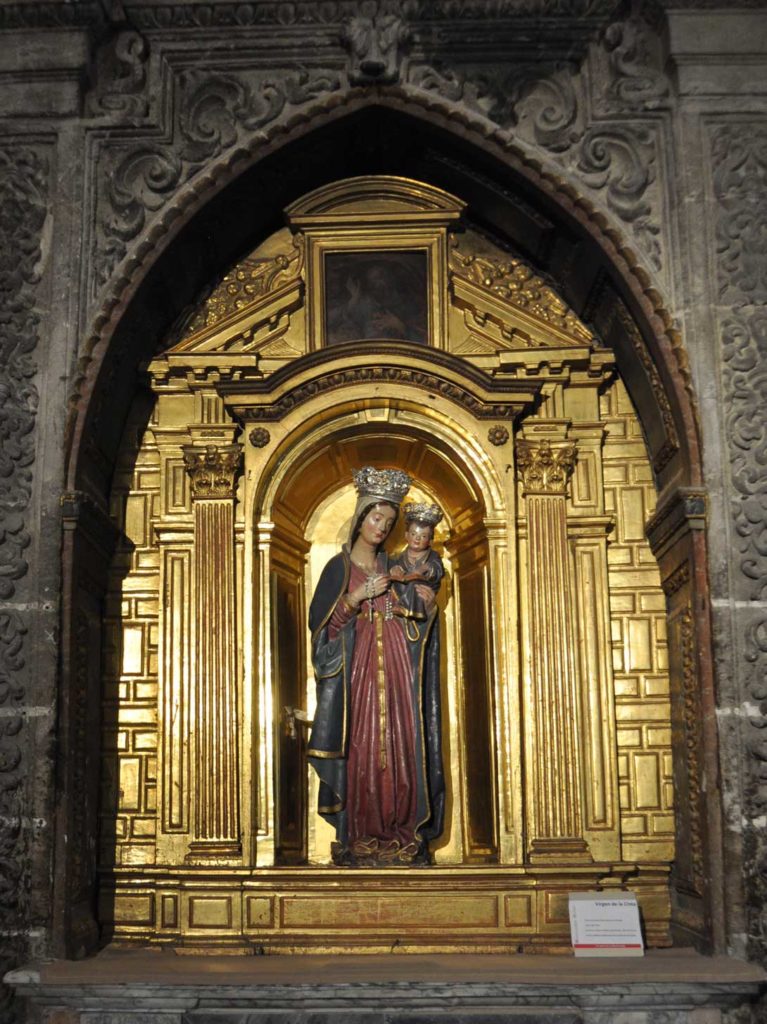
Amongst everything else, one of the many tombs of Christopher Columbus could be found.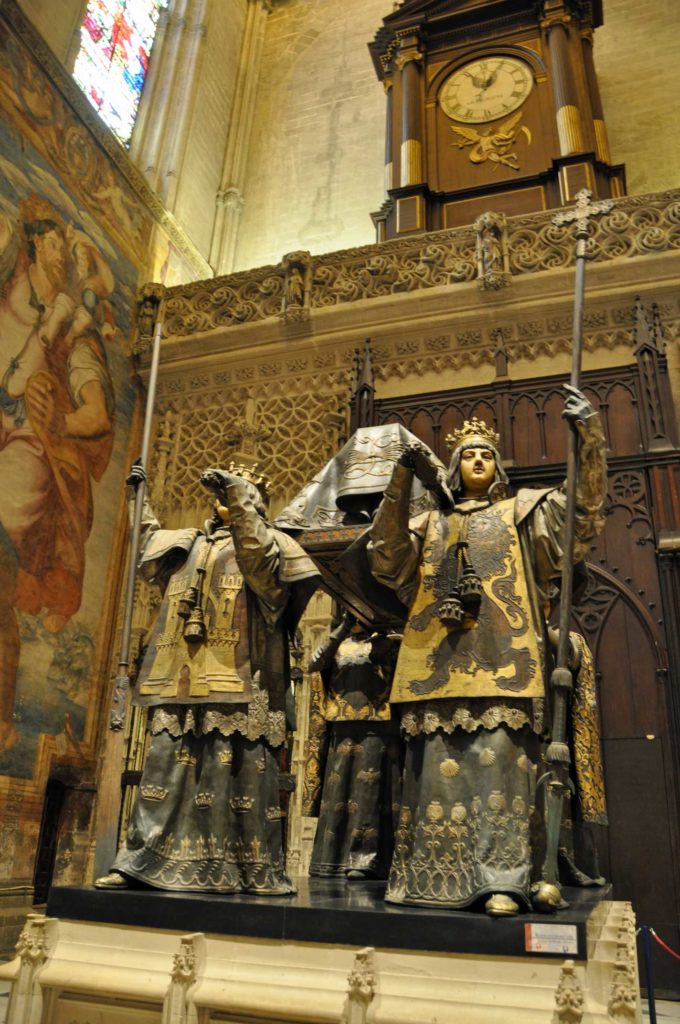
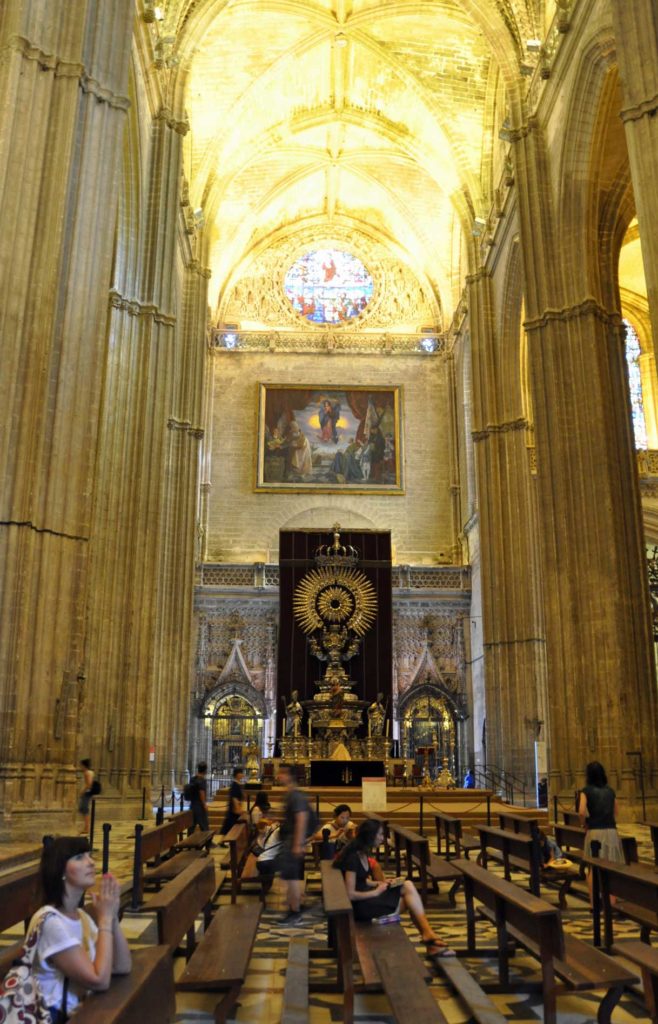
And in the midst of the hurly burly of visitors, the reminder that for some this remains at heart a religious place.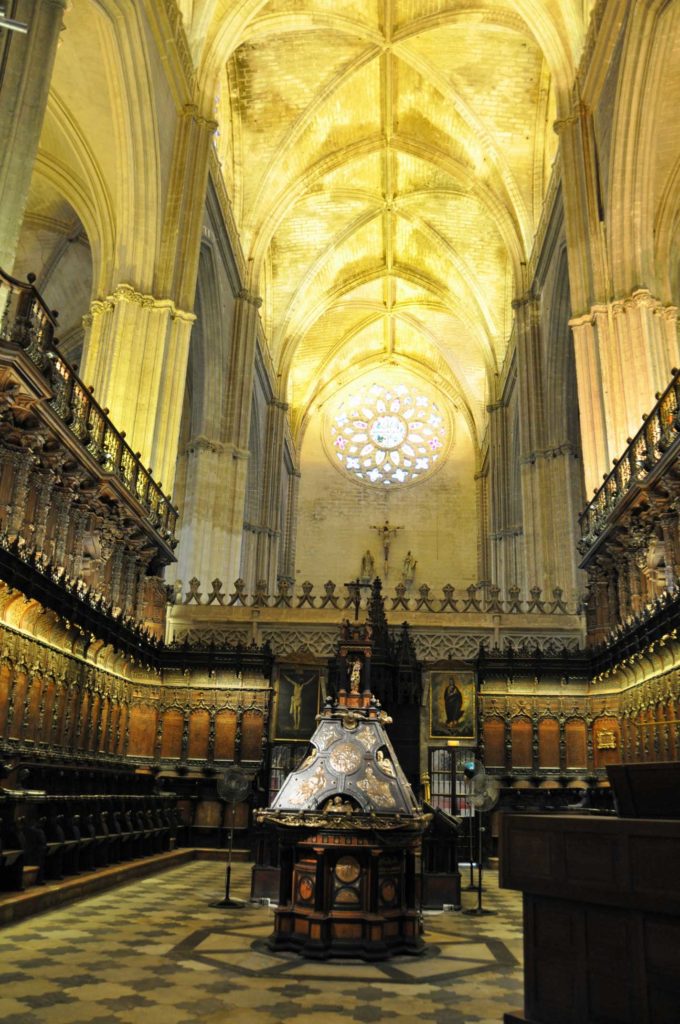
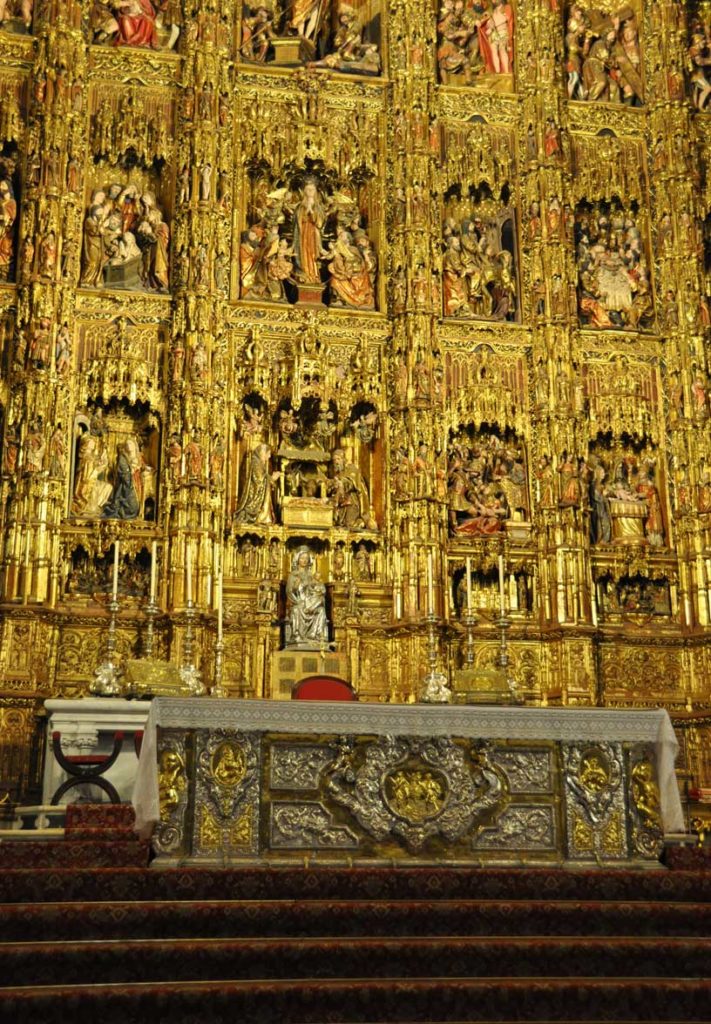
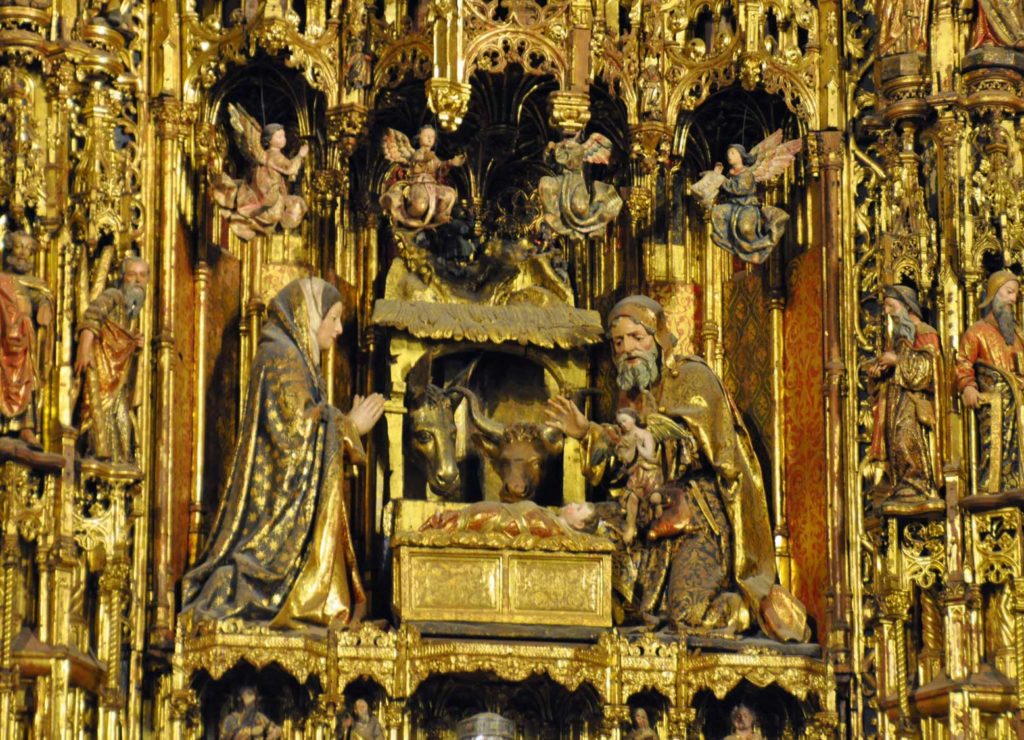
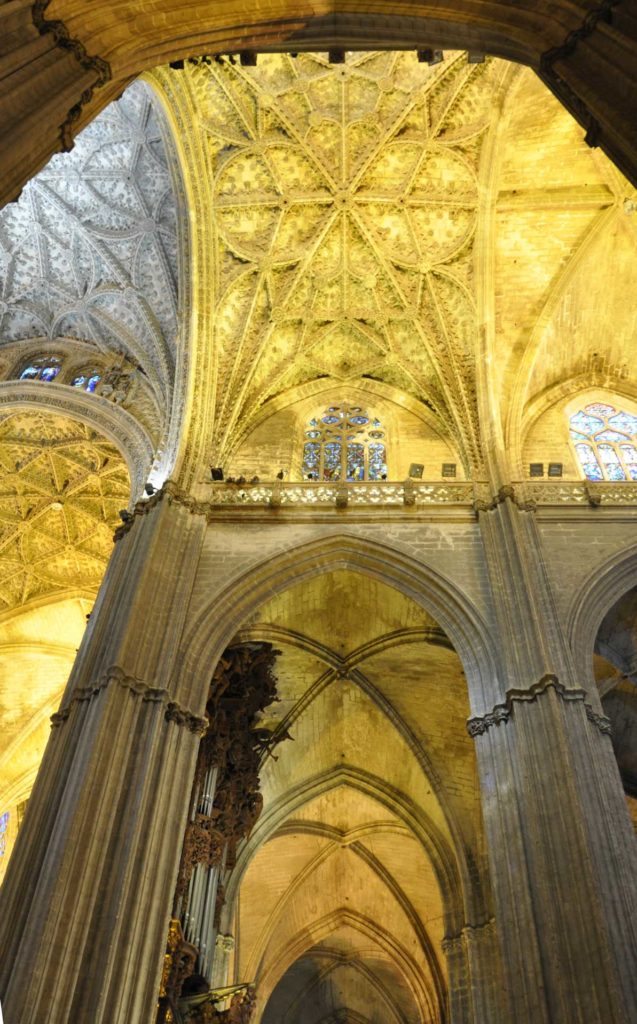
A short climb up the tower led to excellent views down towards the Alcazar palace and gardens.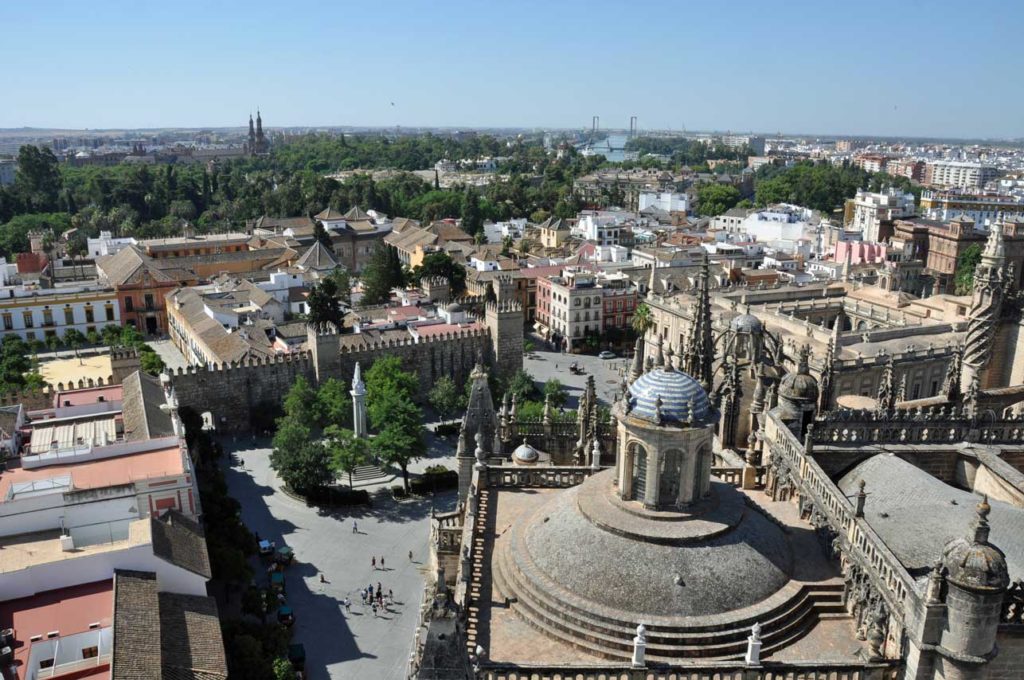
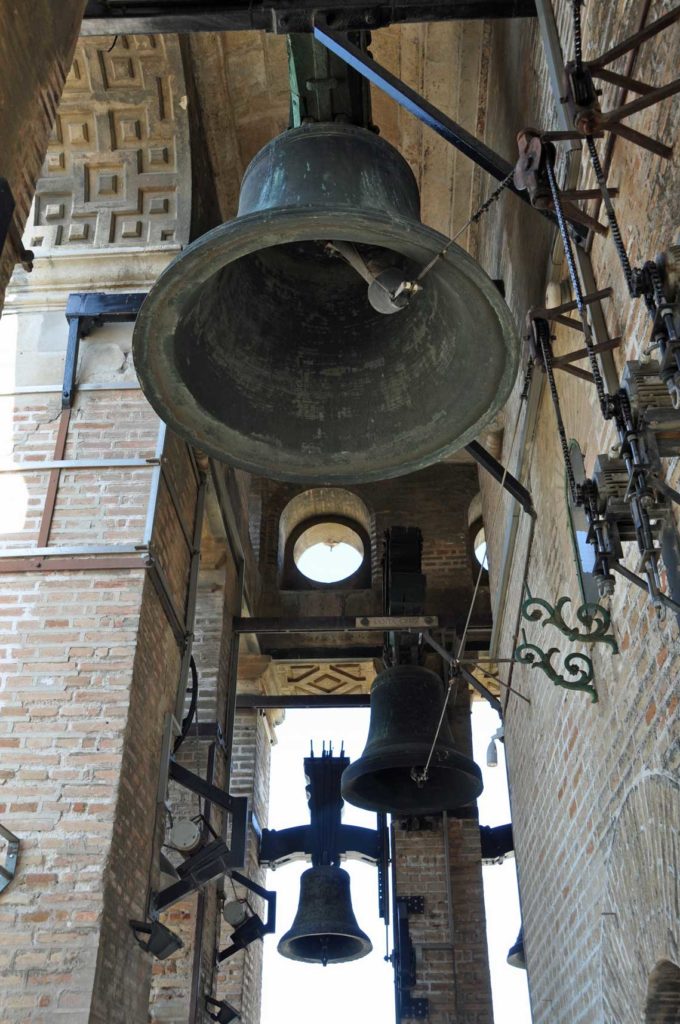
Across the city towards the bullring.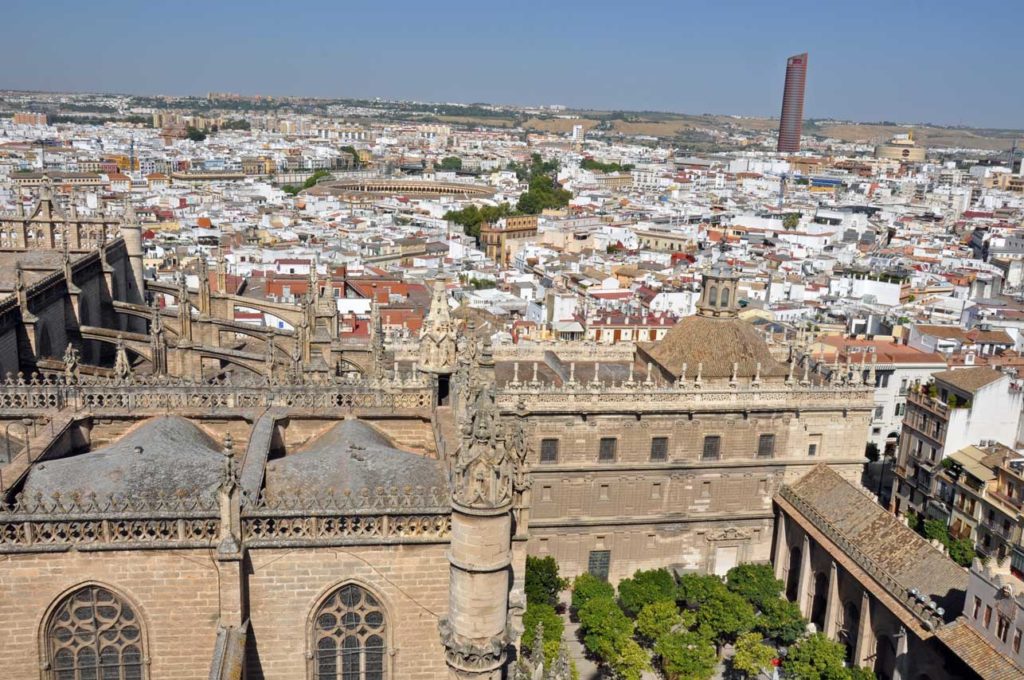
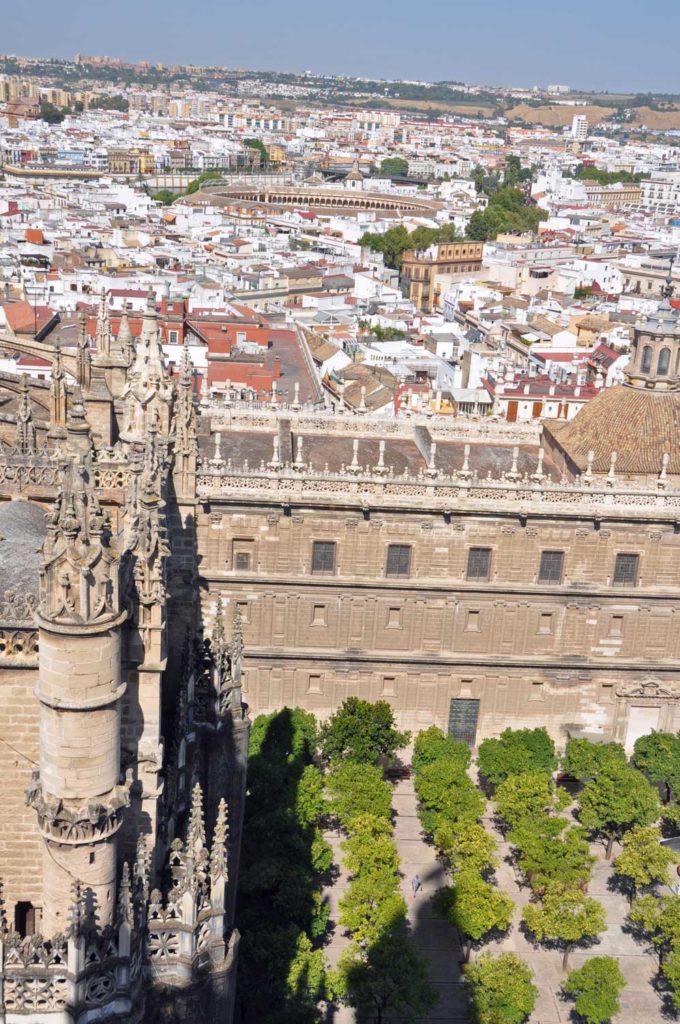
Down last the square, Las Rambles to the right…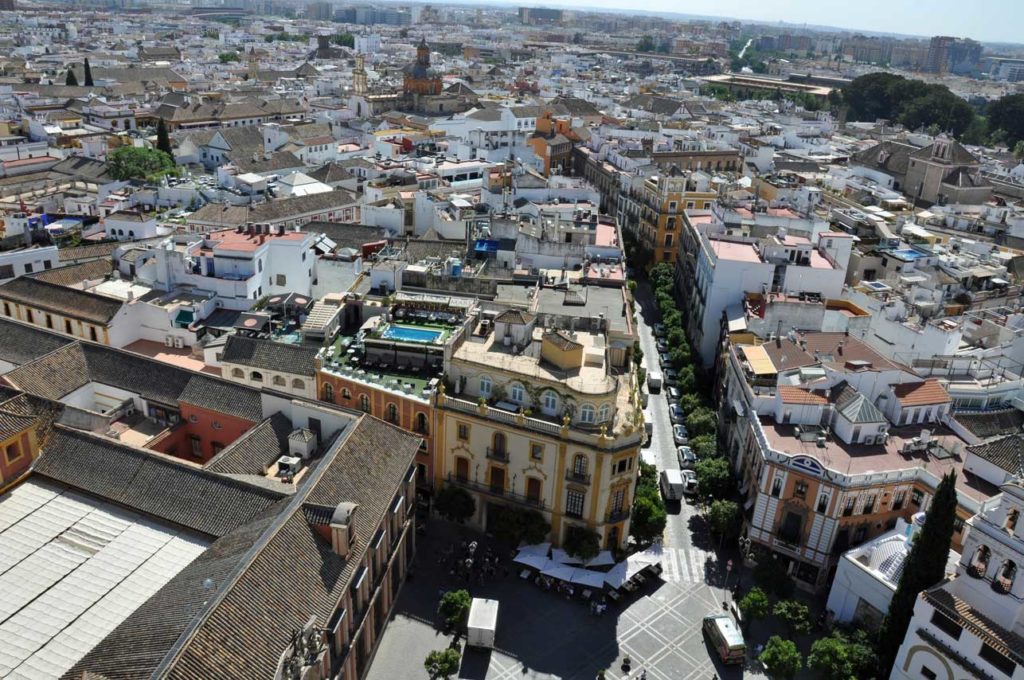
And down towards the river.
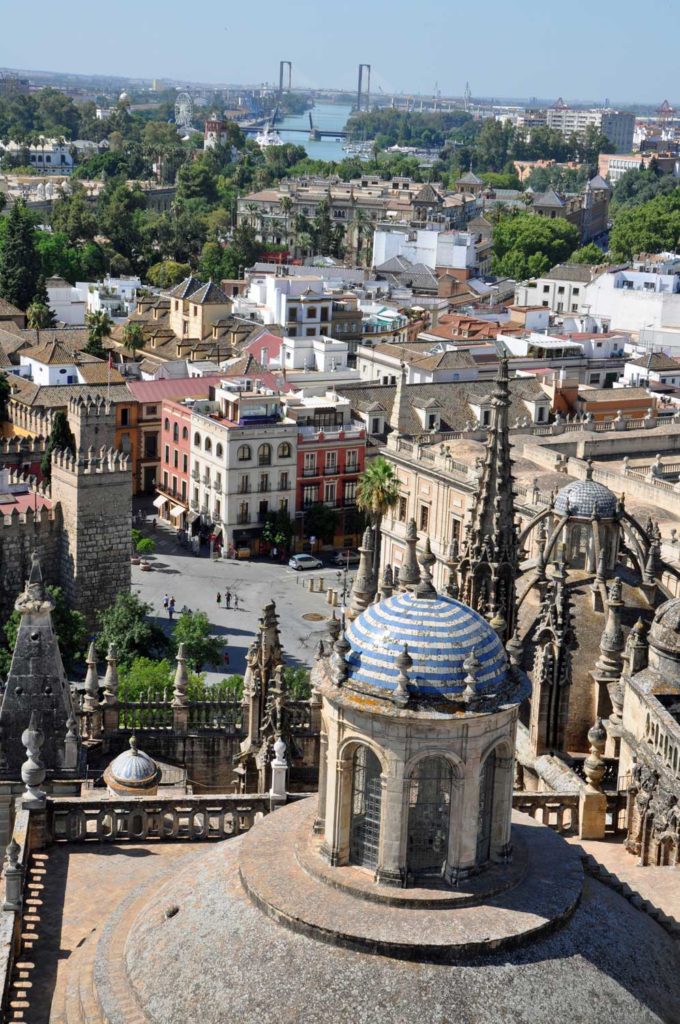
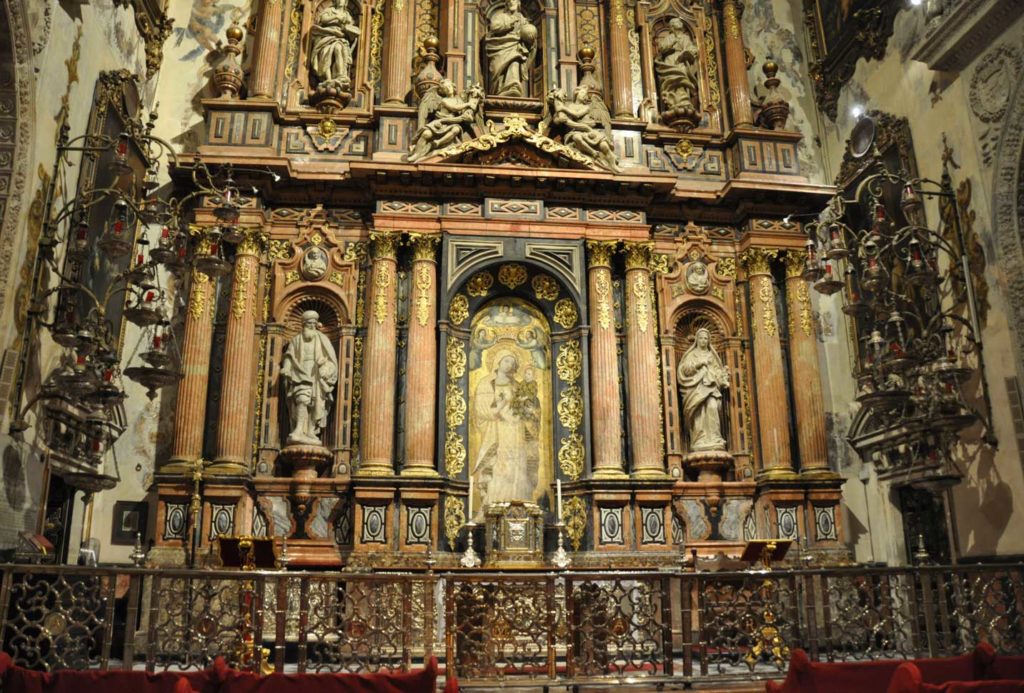
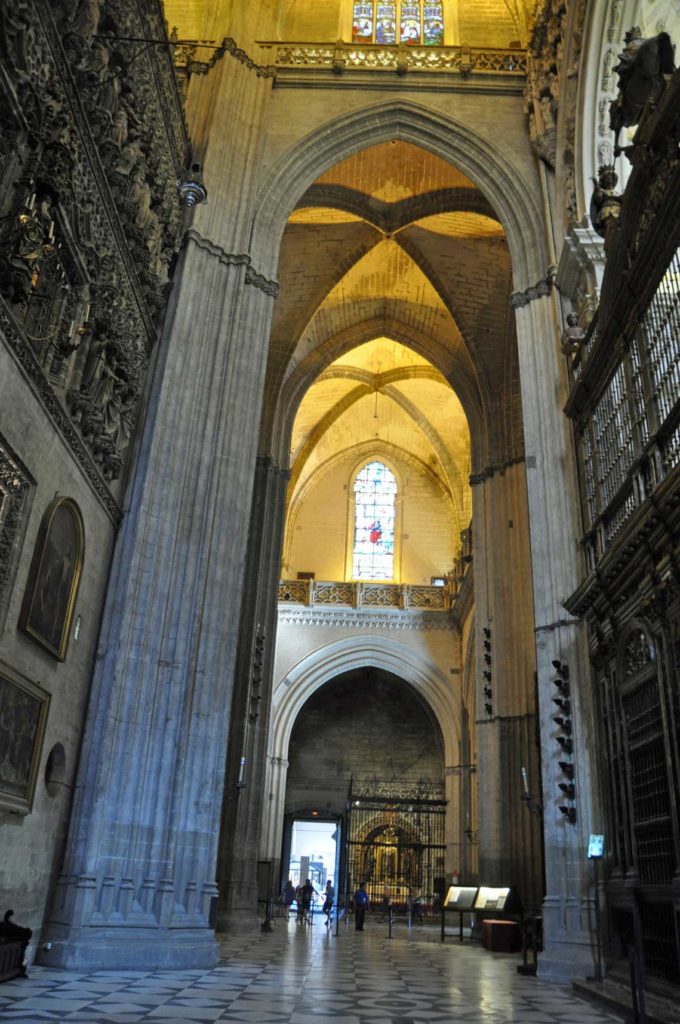
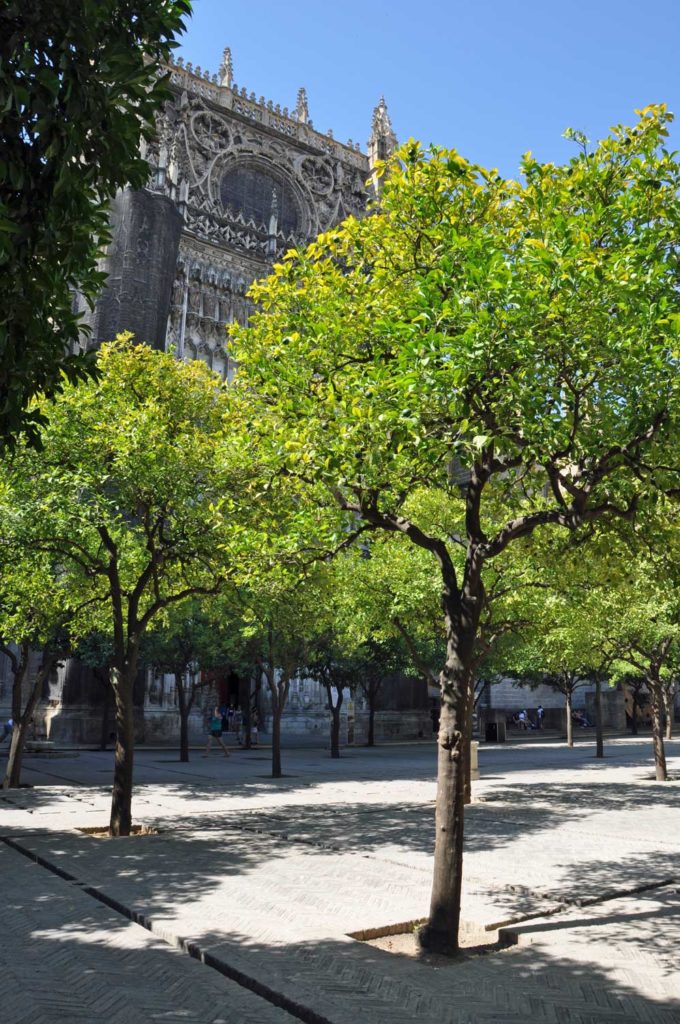 Back down to ground, and we found ourselves in the courtyard with the orange trees, the original mosque’s site of ablutions prior to prayer. The cathedral is an astonishing place, not quite a pleasure, more of an experience.
Back down to ground, and we found ourselves in the courtyard with the orange trees, the original mosque’s site of ablutions prior to prayer. The cathedral is an astonishing place, not quite a pleasure, more of an experience.

